- South Africa
- El Salvador
- Bosnia and Herzegovina
- North Macedonia
- Czech Republic
- Transnistria
- Liechtenstein
- North Cyprus
- New Zealand
- Map with posts
- Alternative Guides
- Architecture Guides
- Cafe Guides
- Itineraries
- Neighborhood Guides
- Travel Guides
- Travel Tips
- Photo Galleries
- Photo Locations
- Solo female travel
- Train Travels
- Work with me
- Privacy Policy

10 days New Zealand itinerary, without renting a car
Visiting New Zealand wasn’t even my dream.
The country was so far away, so exotic and so incredibly beautiful that I figured it’s beyond my abilities and didn’t even think I can travel there.
Moreover, everyone kept telling me you need to have a car to travel around New Zealand – as a person who enjoys solo travels and doesn’t even have a driver’s license I felt this is not the destination for me.
But then my dear friends moved to New Zealand and I promised I will visit them.
Shortly after I found a really good deal on flights to Auckland and booked them right away.
I knew I need to visit my friends in Twizel but since I was about to travel to the other side of the world (literally!) I wanted to see as many New Zealand highlights as possible!
I spent long hours researching and finally managed to prepare the best New Zealand itinerary without the car.
I had only 10 days in the Kiwi land – not too much but I still managed to see the best of New Zealand!

Here is my 10 days in New Zealand itinerary.
I don’t think I could do anything better – it was literally the best plan I could do in such a little time.
I managed to see some of the best places NZ has to offer, I could witness how diverse the country is and I could fall in love with its incredible nature.
Before I didn’t really believe that this is the most beautiful place on Earth, after my 10 days in New Zealand I’ve joined the crowd that thinks so!
I’m very well aware that 10 days in New Zealand is way too little. But that’s all I could afford with my days off from work .
I’m more than grateful that I could go there even for such a short time, I don’t know when I will have a chance to travel to the other side of the world again (especially that there are still so many places to see!)
So yes, it was crazy but definitely worth all the effort!
Planning a trip to New Zealand?
Here are the services I always use and personally recommend:
- Accommodation : I always book a place to stay on Booking.com
- Tours: when I decide to go on a tour I use either Viator or Get Your Guide .
- If you plan to rent a car during your trip to New Zealand check Discover Cars to compare prices and find the best deals
- Get insured for your trip to New Zealand with SafetyWing
Table of Contents
Day 0 Auckland -> Christchurch
I don’t really count that day as I arrived in Auckland in the early afternoon (around 2 pm) and had a domestic flight further to Christchurch around 7 pm.
I didn’t even leave the airport, I spent these hours sitting on the bench outside the terminal and catching some sun.
I’ve thought I will be exhausted after the long journey (I left Zagreb, Croatia on Sunday morning and arrived in NZ on Tuesday afternoon) but I think the adrenaline was buzzing in my blood as I was pinching myself I really am in New Zealand.
Already there I could experience how extremely friendly and hospitable Kiwi people are.
I seriously haven’t met that nice people anywhere, even in Iran that is known for the extreme hospitality!
After a quick chat during the flight from Auckland to Christchurch, I was already invited to a dinner by a fellow passenger!
As I learned over the next days this was no exception. People are really that nice there.
I arrived at my hostel in Christchurch late in the evening and I was hoping I will get some proper sleep. I did fall asleep right away only to wake 2 hours later at 1 am…
Jetlag is an evil thing and 11 hours difference is a lot!
Recommended places to stay in Christchurch:
- Distinction Christchurch Hotel (with 8.8/10 on Booking) – it’s highly recommended for the location, staff and comfort.
- Quest on Manchester (8.7/10 rating on Booking) – valued for cleanliness, cofort and facilities.
- The Grange Motel (8.7/10 on Booking) – recommended for the location, friendly staff and cleanliness.

New Zealand itinerary – Day 1 Christchurch -> Tekapo -> Twizel
That’s when I started properly my 10 days in New Zealand!
At 8:30 am I had the InterCity bus directly to Twizel.
The weather was rather gloomy so I didn’t really mind sleeping for half of the journey.
Before going to NZ I was trying to find how I can visit Tekapo, even for a day from Twizel, but nothing really seemed to work out.
And then, halfway through my journey on that day, I’ve learned that we will have a 50 minutes stop in Tekapo, enough to see the lakeshore and the famous Church of the Good Shepherd.
Of course, I could have spent more time in the town, walking along the Lake Tekapo and enjoying the nature around but Tekapo itself seemed to be a bit touristy and these 50 minutes I had to see most important bits of it were enough for me.

40 minutes later I was already in Twizel, reunited with my friends.
The weather was still pretty terrible so we just spent the rest of the day catching up and it was pretty awesome.
Recommended places to stay in Twizel are Mountain Chalets Motel , next to the main road and with 8.2/10 rating on Booking and Mahina Cottage close to Lake Ruataniwha and with rating 9.6/10 on Booking .

Day 2 Twizel
I was still pretty exhausted with the jetlag (evil thing!) so I took things easy and spent a day in Twizel: walking around, drinking coffee in a local cafe and enjoying long conversations with my friend.
Once my friend had to go to work I went for a walk to a nearby Lake Ruataniwha which turned out to be just stunning!
Blue sky, green colors around and snow capped mountains are just the most beautiful combination!
The lake is some 5kms away from Twizel’s center and I was ready to walk back to the town but after literally one minute a friendly man stopped and asked if I need a ride – I couldn’t say no to such an offer!
Twizel turned out to be such a charming place!
Kind of reminded me of towns like Stars Hollow in “Gilmore Girls” with one main square and everything you need around it.
I admit I fell in love with the town a bit and I really think it’s a perfect base to see some of the most stunning places in New Zealand. It’s so much less touristy than Tekapo!

Day 3 Twizel – Mt Cook – Twizel
Being based in Twizel I was just a short ride away from Mt Cook and Hooker Valley – the most beautiful hike I’ve ever done!
I found one company that offers transfers from Twizel to Mt Cook village in the morning and back in the afternoon, giving you around 6 hours to enjoy the place – that’s enough to do an Mt Cook hike (it took me 4,5 hours but I was slow as I took so many pictures along the way).
The place was so beautiful it hurts, I felt like walking in the Photoshop for most of the day! This is definitely one of the most beautiful National Parks in New Zealand .
It was the most rewarding hike ever, the difficulty vs. views ratio is pretty good here!
I was tempted to squeeze in the Kia Point hike too but after returning from the Hooker Valley the jet lag kicked me big time and I was almost stand sleeping.
After returning to Twizel I did my best to stay up late-ish and enjoy the last evening with my friends but at 11 pm my body gave up and I fall dead asleep (and after the proper night’s sleep I was done with the jet lag for the rest of my trip).

Day 4 Twizel -> Queenstown
After a lazy morning and the last coffee in Twizel it was time for me to move on and see other amazing destinations in New Zealand.
I could have easily spent the whole 10 days in New Zealand in Twizel and the area only, I liked it there so much, but let’s face it – that would be just plain stupid of me.
I border the Intercity bus with mixed feelings – I was so sad to leave Twizel and my friends behind but at the same time I was excited about the next destination – Queenstown!
The city is known as New Zealand’s capital of adventure and adrenaline rush and attracts lots of tourists every single day.
I’m usually not a big fan of this kind of places but since I had a rather limited time in Queenstown I kind of enjoyed it!
As soon as I arrived and left my backpack in my hostel I headed to probably the biggest attraction of Queenstown – Skyline.
The gondola ride to the top takes few minutes only but the view from the upper station is spectacular!
Queenstown and the surrounding area is just stunning, no wonder it’s such a popular place!
The viewing platform might be busy as everyone wants to score the best picture so prepare yourself for that.
You should plan some extra time up there and instead of taking the next cable car down go for a walk around.
There are few walking paths marked, I randomly chose one and after a short walk up I could enjoy beautiful nature, amazing mountains and a complete silence with no one around (that was a nice change after the busy town).

You can easily spend a few solid hours just walking and hiking around but as it was already late afternoon I headed back to the town to enjoy the sunset at the Lake Wakatipu shore.
The place had a completely different vibe than the upper station of the Skyline.
It was busy and bustling with people. All the lakeshore restaurants, as well as the small beach, were full.
Everyone, including me, was there to admire the beautiful sunset and it certainly didn’t disappoint!
In Queenstown be sure to eat at Fergburger. The place is somehow iconic and even if the line is always long it’s definitely worth the wait!
Some even claim the best burgers in the world can be found here!
Where I stayed: at The Black Sheep Backpackers . I reserved a private cabin and it was small but cozy, good for one person.
The hostel was just a few minutes walk from the downtown and the lake shore, in the quiet area. It was good for socializing but also you could easily relax there.
The Booking rating is 7.4/10 .
I’d avoid staying in the very downtown of Queenstown as the place is just madness.
Other recommended places:
- QT Queenstown (8.9/10 rating on Booking) – guest value the place for the comfort, cleanliness and location
- Mi-Pad Smart Hotel (8.5/10 rating on Booking) – this place is especially recommended for cleanliness, staff and location.
- Absoloot Value Accommodation Hostel (8.5/10 rating on Booking based on over 1 thousand reviews) – visitors loved the location but also thought the place is a great value for money.

Day 5 Queenstown -> Milford Sound -> Queenstown
I used Queenstown as a base to go for a day trip to Milford Sound.
There are numerous companies that offer this tour but since I was already familiar and satisfied with Intercity services I’ve decided to go with them . And it was a good day!
It’s quite a journey to get from Queenstown to Milford Sound (around 300kms one way) and the whole tour lasts around 12 hours but it’s definitely worth all the effort!
On the way to Milford Sound there are few scenic stops: in Te Anau, at Mirror Lakes plus picture-perfect field just before them and at The Chasm waterfall.
It’s fascinating how, as soon as we were getting closer to Milford Sound and were about to cross the mountains via Homer Tunnel, the weather changed drastically.
From the beautiful sunny day (that I was really hoping for) we got into cold, grey and windy weather.

The highlight of the day was the Milford Sound cruise.
Despite the freezing wind, I did stay on the top deck for the whole journey (including a really big close-up to the waterfall that left me soaking wet but at least it was fun) as the place was too stunning to miss it!
But I must admit I was slightly disappointed.
Many people claim Milford Sound to be the most beautiful place in New Zealand and I guess I had my expectations too high.
Could be the so-so weather or my new love for Mt. Cook (seriously, the most breathtaking and stunning place I’ve ever seen!) but Milford Sound didn’t blow me away all that much.
I still loved it though! The scenery and nature around were incredible and I definitely can see why so many people fall for this place!
Once I was back in Queenstown I went to the lakeshore again to enjoy another sunset in this beautiful location.
Click here to read more about the Milford Sound tour departing from Queenstown.

Day 6 Queenstown -> Wanaka
I left Queenstown early in the morning and went to Wanaka. It’s a short ride and already at 10 am, I was there.
I had only this one full day in Wanaka but since I was limited transport-wise I thought I will focus only on the town, walk around the Lake, admire the famous That Wanaka Tree and maybe go to the Mt Iron – the most accessible track in Wanaka.
My dream was, of course, Roys Peak as pictures from it were the main reason why I’ve decided to include Wanaka in my New Zealand itinerary.
Realistically speaking I knew I won’t make it there – not only you need to get somehow to the beginning of the trail but also my shape isn’t the best (still I did surprisingly good in NZ) and this hike is rather challenging.
But still, deep down I really regretted I couldn’t make it there.

I arrived to my guest house still before the noon, just wanting to leave my backpack before exploring the town.
The lovely owner asked me about my plans and very quickly suggested I shouldn’t waste my time on Mt. Iron but go to Diamond Lake instead.
And since I didn’t have a car she offered her son would take me there, I would just have to hitch-hike back.
I couldn’t have missed such an opportunity so shortly after I was already on the trail, hiking to Diamon Lake and afterward to the viewpoint.
It wasn’t the easiest hike for my poor shape but also not too difficult and the views were so rewarding!
I was tempted to go all the way to Rocky Mountain but what I could see from the viewpoint was already stunning and I still wanted to have some time to enjoy Wanaka itself.
Once I was back in the parking lot I didn’t have any problems to find the ride back to the town, the first people I asked – a lovely Belgian couple – took me there even if I had to lie down on the bed in the back of the car for all the way to the town.

I thought that after Diamon Lake and Rocky Mountain track the views can’t get any better but the lakeshore in Wanaka is pretty amazing and once the sun was out the area looked gorgeous!
I walked a bit around and eventually was back (for the third time in that day) at That Wanaka Tree – a perfect ending of my perfect day in Wanaka!
Where I stayed: at Altamont Lodge and I can’t recommend it enough!
The place is some 10 minutes walking from That Wanaka Tree, offers spacious rooms, big kitchen and is perfect to relax. It has the rating of 9.0/10 on Booking .
But the biggest asset of this place are amazing owners who really have made my stay in Wanaka so much better than I expected!
Click here to check the current rates and opinions about Altamont Lodge.
Other recommended accommodation:
- Wanaka Springs Lodge (8.8/10 on Booking) – highly valued for free wifi, staff and cleanliness.
- Panorama Court (8.2/10 on Booking) – Visitors who stayed here enjoyed the place for its comfort, location and facilities.
- YHA Wanaka (8.2/10 on Booking) – valued for staff, location and facilities.

Day 7 Wanaka -> Fox Glacier
After a lazy morning my Intercity bus took me to Fox Glacier, with two stops (next to the waterfall and for lunch in another beautiful location) along the way.
I arrived at my destination around 3 in the afternoon and didn’t really know what to do.
First of all I can’t explain why I chose Fox Glacier and not Franz Josef (if you know me well you would now I so should go to the second one, just for its name, honoring the Austrian emperor who basically created the Central Europe legacy I adore so very much), it seemed like in both towns the glaciers are rather far away and not reachable if you have limited time and no transportation options.
But I had to choose one place to break the journey.
Later on, in Queenstown, I learned from the American couple I met that in Fox Glacier there is a picture-perfect spot – Lake Matheson – with a beautiful reflection of the mountains and the glacier. That was my option for the day.
But then again I learned that it’s actually only some 6kms to get to the glacier viewpoint so suddenly I had to decide what to do in Fox Glacier in my very limited time!

“Fortunately” on that day the weather has decided for me as it was rather poor and you barely could see the mountains.
As soon as I arrived to the hostel and checked in I left to the glacier!
It was a pleasant walk as big part of it was through the forest (at that point I was already in love with New Zealand’s forests as they are so different from what I know in Europe) and then I could see my destination – it literally took my breath away (or maybe it was because I was walking fast?)!
From the parking lot, it was some 1km walk to the viewpoint – the trail was going through was used to be (and sometimes still is) riverbed and I must say it felt weird to walk there.
Eventually, after really steep last meters, I got to the viewpoint and oh wow!
Even if I barely could see the mountains and even if everything was so grey the place still impressed me, a lot.
I think that’s the closest I’ve ever been to the glacier and it was really unforgettable, especially the moment when I was there all alone, only with the amazing nature around me.
I was ready to walk back to the town and the hostel but shortly after leaving the parking lot the car has stopped next to me and a fellow tourist, from the US, offered me a ride – I really couldn’t say no!
Where I stayed: at Ivorytowers Backpacker Lodge . It was good, probably the best budget friendly option in Fox Glacier.
It has the Booking rating of 8.3/10.
The place was located few steps away from the bus stop and near the entrance of the trail leading to Fox Glacier. Click here to check the current deals and opinions.
- The Church at Fox (9.2/10 on Booking) – this former church is highly valued for just about everything. It’s probably one of the most unique places to stay you will ever come acress.
- Rainforest Motel (8.8/10 on Booking, based on over 1 thousand reviews) – tourists recommend this places for its value, location and cleanliness.
- Fox Glacier Lodge (8.5/10 on Booking) – valued for location, cleanliness and staff.

Day 8 Fox Glacier -> Greymouth -> TranzAlpine train -> Christchurch
I spent the whole day traveling but it still was pretty exciting!
I took the early morning bus from Fox Glacier to Greymouth where I changed for the TranzAlpine train to Christchurch.
But the adventure has started even before I left Fox Glacier and showed me one more time how amazing people in New Zealand are.
The bus started the route from Fox Glacier, I was at the stop some 20 minutes before the departure but since I was the only passenger and we still had some time the driver offered to take me to the viewpoint so I could see the glacier and the mountains again.
It was an amazing view! After seeing the glacier from really close I could admire it from the distance and see how massive it really is.
But seriously, it was the first and probably the last time I had a private tour with the regular bus! How cool and nice is that?!

Another surprise was the stop on the way, in Hokitika.
Until that moment I didn’t know such a place even exist but it turned out to be a charming little town, at the shore of the Tasman Sea.
We had almost one hour break there so it was a perfect place to relax a bit, grab lunch and stretch the legs.

The biggest highlight of the day and one of the best adventures of my 10 days in New Zealand was about to happen afterward.
I’ve heard that TranzAlpine is considered one of the most scenic rail journeys in the world so I was really excited and had my expectations high. And it was beautiful!
At first, I was a bit disappointed but the further along the journey, the views were more and more amazing!
Green fields and blooming yellow flowers and bushes just added up to the overall beauty.
But the best thing about the journey was the last carriage, the one I spent 95% of the trip in, designed for everyone who wanted to take pictures.
It’s the best invention ever and I believe every scenic train should have one of those carriages!
There were no windows, just open space you could look through and take pictures of the scenery, without this annoying reflex you often get when photographing from the moving train.
It felt incredible to be there, look outside and feel the wind in my hair or on my face – this feeling is one of the reasons why I love train journeys so much!
After arriving in Christchurch I headed to my hostel , the one I heard so much about I just had to book myself there.
I spent my last night on South Island in jail!
Where I stayed: at Jailhouse Accommodation . A former jail was turned into the hostel and it’s such a cool place to spend the night at!
It has the Booking rating of 8.1/10 .
I had a private cell and it felt kind of weird to sleep there. The whole place looks pretty cool and for me it was probably one of the most interesting accommodation ever.
Click here to see current deals and opinions.

Day 9 Christchurch -> Auckland
I had the whole day for exploring Christchurch before catching my evening flight back to Auckland.
It was perfect sunny weather but as much as I enjoyed it, it also got me pretty tired at some point.
Or maybe I was still overwhelmed after seeing the incredible and magnificent nature in the past few days and I didn’t really switch to the city mood.
I was really hoping to like Christchurch and in different circumstances, I think I would.
I’m a city girl and Christchurch has everything I’d normally fall for: street art , great cafes, interesting architecture as well as dark recent history.
The city is still recovering after the tragic earthquake that hit Christchurch in February 2011, much of the center is under construction, containers replaced shopping center and there are still so many holes showing where the houses used to be.
The most moving place is the memorial to the victims of the earthquake – 185 empty white chairs, one for each of the victims…
It’s good to spend at least few hours in Christchurch and see the city but let’s face it – this is not why you visit New Zealand.
Where I stayed: after landing in Auckland late in the evening I went directly to my accommodation for the night – Kiwi International Hotel .
It was good value for the money with the Booking rating of 7.2/10. With great location .
The hotel is located on Queen Street next to the hipster-ish part of the city and not far from the downtown I can definitely recommend this place.
Click here to see the current prices and details.
- Four Points by Sheraton Auckland (8.3/10 on Booking) – travelers recommend it for just about everything!
- M Social Auckland (9.0/10 on Booking based on well over 1 thousand reviews) – it is especially valued for the location, cleanliness and comfort.
- City Lodge – Backpackers Accommodation (6.8/10 on Booking) – travelers recommend this place for cleanliness, location and staff.
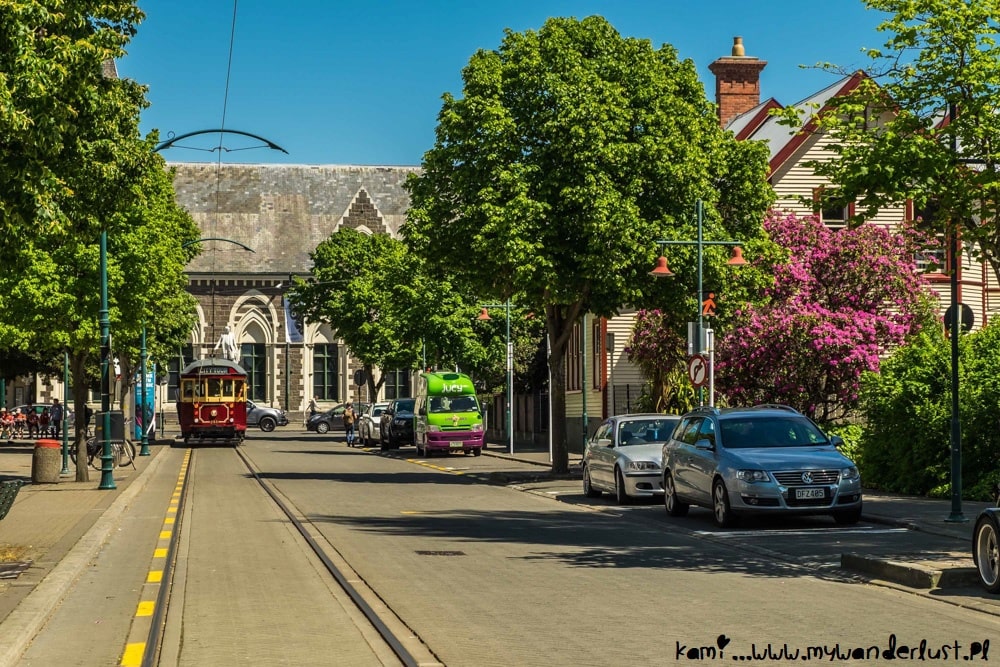
Day 10 Auckland
I spent my last day in New Zealand in Auckland and, contrary to Christchurch, I liked it much better than I expected.
I’ve never heard many good things about the biggest city in New Zealand so I just treated it as a stopover (at some point I was even wondering if I should have maybe used this day better, spending it in another gorgeous destination) but I actually enjoyed it surprisingly much.
Part of it is thanks to my dear readers, Sam and Richard, who I met with in Auckland and who showed me some of the best places the city has to offer.
Besides the downtown and waterfront I could also see Auckland War Memorial Museum with the interesting exhibitions about Pacific cultures (that I sadly know so little about) and super fascinating Maori cultural performance (they did the haka dance!) or the alternative area at the crossroads of Queen Street and Karangahape Road.
It was such a fun day and a perfect ending of my 10 days in New Zealand!

Is it worth going to New Zealand for 10 days only?
No matter how crazy that sounds I think it’s definitely worth it!
New Zealand really is the most beautiful place I’ve ever been to and I’d go there again in a heartbeat!
But everything also depends on how lucky you are with the weather as it’s pretty unpredictable and you can get all four season in one day.
I was really lucky here, I had really good weather for most of the time and it didn’t rain even once (although forecasts were predicting heavy rains in Fox Glacier and Auckland).
10 days in New Zealand is not a lot but if you plan your New Zealand itinerary well you really can see a lot of spectacular places!
And don’t let anyone tell you it’s impossible to visit New Zealand without renting a car – I’m a walking example that it’s perfectly doable!

How to travel around New Zealand without a car?
There are few bus companies but I’ve decided to use InterCity as their schedule and routes worked the best for me.
The schedule, however, is rather limited with usually only one trip per day so you need to plan everything around that.
But in any place, I didn’t feel like I don’t have enough time for what I want to see and do when I missed some activities or had to make some tough choices it was because of my busy itinerary in general.
After planning all my connections I’ve decided to get the 25 hours pass for 209 NZD .
It counts the hours from the timetable so even if the bus is delayed (happened to me only once and it was only 15 minutes delay, in Twizel when I was about to depart to Queenstown) you don’t need to worry about taking the extra minutes from your pass.
The pass is valid for a year so if I manage to return to New Zealand before the end of September I can technically still use those few hours I have left on it.

Planning and booking connections are super easy.
You just need to log in on the Intercity website and search the route you’d like to take. Then you just add it to your cart and voila, you’re done.
Even if none of the buses I took were full I still wouldn’t leave the booking for the last moment, especially in the summer months, just to be on a safe side.
Before the trip, you need to be at the bus stop 15 minutes before the departure time and then just give your name to the driver for the check-in, once he verifies you’re booked to this connection you are free to board the bus.
The bus journeys were all good, comfortable, with wifi and great drivers who were talking a lot during the trip: telling about the places we were passing by/about to reach or sharing the interesting stories.
There were also some photo stops in beautiful places along the way.
Overall it was so much better experience than with most of the buses I’ve ever taken and I can definitely recommend it to everyone visiting New Zealand who don’t want to / can’t rent a car!

And here is the map of all the places I visited during my 10 days in New Zealand
Travel Resources
Below you can find the brands I trust and use when planning trips:
- You can find the best accommodation options at Booking . They have many discounts and excellent customer service. Click here to look for the place to stay in New Zealand
- I recommend joining organized tours to get to know the place better and to visit more places during your trip. You can find a great selection of tours at Viator or Get Your Guide .
- To always stay connected I use Airalo eSim cards – click here to get yours!
- For transportation and booking tickets online , I usually use 12Go or Omio
- Looking for the airport pickup ? Check Welcome Pickups!
- Never travel without travel insurance , you never know what might happen and better safe than sorry. You can check the insurance policy for New Zealand here.
- Make sure to have the offline map always installed on your phone, they can save you so many troubles. I always use the free app Maps.Me .
For the end I left a few announcements that might interest you:
- Sign up to my newsletter or follow me on Bloglovin to get updates about the new posts
- Join my Facebook group about Eastern Europe, the Balkans and former USSR and connect with fellow travellers and enthusiasts of these regions – just click here!
- I’ve included a few handy links of services and products I personally like and use so you can plan your own trip to New Zealand too. They are often affiliate links. This means I will get a small commission if you book/purchase anything through my links, at no extra costs for you. Thank you!
LIKED IT? PIN THIS POST FOR LATER!

Disclaimer: during my trip to New Zealand I was hosted by InterCity. As always all opinions and experiences described above remain my own.

If you enjoyed that post why don't you share it with your friends? That would mean so much to me! Also be sure to join 30.000+ fellow travelers and follow me on Facebook , Twitter , or Instagram for travel updates and even more pictures! If you don't want to miss new posts sign up to my newsletter or follow on Bloglovin !

24 Comments
I love this. Thank you! I’m planning NZ in a few months and was wondering about not having a car. This post was super helpful.
I’m glad I could help! It really is possible to visit NZ without a car, it requires some planning but it’s definitely doable!
I agree, having a friend in a foreign country is great. You’ll be able to visit them while enjoying the place. Thanks for this very informative blog. Your photos are all fantastic. I also want to visit New Zealand one of this days. :)
Thank you! I hope you will visit New Zealand one day, it’s really amazing!
Rajendera Sodhi
Excellent pictures and information…
Very useful post with amazing photos! May I know which month did you visit NZ? Am planning to head there this December…
Thank you! I was there at the end of October and beginning of November so December must be even better (but also busier…). You will love NZ for sure, it’s amazing! Have a great trip!
planodo.com
It’s really well written and wide guide. Thanks for that. It helped with organizing our trip. We done all points mentioned + Glenorchy, Hokitika George and Athur’s Pass. It was wonderful time there!!!
I’m glad I could help and that you enjoyed your trip. Happy travels!
How did you cope with jetlag? I almost died from it after visiting Australia :D
I managed to sleep 2 hours/night for some 2-3 days and then I got myself so tired at Hooker Valley that I fell asleep sitting at 10pm and finally slept for 12 hours straight – and all was fine since then :) it wasn’t actually that bad to be honest, I was expecting more struggle with 11 hours difference
So glad I bumped into your page. The photos of NZ are gorgeous. You have convinced me that it is possible to go around NZ without renting a car. Phew. Thank goodness. But seriously.. the photos of NZ = amazing.
Thank you! It is definitely possible to travel around without a car! It requires some planning as sometimes there is only one bus connection per day, but is definitely doable!
New Zealand comprise 3 islands. A North and South Island and Stewart Island. This report is 10 days virtually in a part of the south island. I wouldn’t therefore classify it as a 10 day visit of New Zealand. Sorry, but the report is seriously misleading.
The majority of attractions tourists are interested in are in South Island and with 10 days only one has to choose what to see. But you are welcome to give other suggestions here, in the comments, so other travelers can use them. Cheers!
Hi Kami! Planning to travel to NZ next year on Feb and my initial travel IT is trashed now after seeing your Itinerary. My friends and I might just go along with what you did. Your experience and THE photos are so beautiful! Do you mind sharing how much you spent for 10 days? Are the sights free or is there any entrance fee? Hope to hear from you :)
Hi Karyll, I’m sure you will enjoy NZ, it is such a beautiful country! I don’t think I could plan my 10 days there any better, to be honest – it was busy but I loved every place! Unfortunately I don’t remember how much I’ve spent but I remember it was less than I expected – I was expecting Scandinavian prices but it was more like Western Europe. The only tickets I remember I had to pay were for the cable car in Queenstown and the boat on Milford Sound, everything else was free. Have a great trip!
Milet Miranda
Hey Kami! Thanks a lot for this super detailed guide to NZ. My friend and I will be traveling to NZ in March, and just like you, we don’t plan to rent a car (no driver license and driving skills lol). It’s great to know that getting around using public transportation is easy. I’m really excited to see NZ nad to do a lot of hikes :) Thanks again! Milet of Project Gora
I’m sure you will have a great trip, NZ is such an amazing country! Public transport is really easy but it requires some planning as the buses don’t run very often. But it’s definitely doable! Have a great time in NZ!
We are headed to NZ in 2023 for our 50th. I have been doing research and loved your adventure. Lots of names have been in my research. Do you have a post for Australia? We were looking at a tour but with your help I think we may go it alone. I so appreciate your share!!!
I’m glad you found my article useful. Unfortunately I haven’t been to Australia yet, it’s really high on my bucket list though! I’m sure you will enjoy NZ, such a wonderful and beautiful country!
Kami, I loved your article! I’m a Kiwi-born gal from Auckland, and like you thought it would be hard to travel around NZ without a car or through tour companies (I drive myself) but your article proves one can do it through Intercity! Only one thing i was surprised at reading that it was suggested you hitchhike back in one area. I wouldn’t have advised that at all, it’s not safe especially in rural areas. But so glad you loved our beautiful country, and hope you will visit again! I agree a lot of those places are stunning, we visited a lot of them in the last two years as we were unable to travel overseas due to borders being closed.
Thank you for your comment, Lynette. It’s interesting that you say hitchhiking is not safe as the only reason why I’ve decided to do it was because everyone, especially locals, encouraged me to do that. But of course, like everywhere else, it’s crucial to trust your instincts in such situations. I really enjoyed NZ and I really hope to return there one day! All the best!
Leave a Reply Cancel Reply
Sign me up for the newsletter!
Let’s become friends!
Join me on Facebook for even more travel updates!
Kami and the rest of the world

- Privacy Policy
- Galapagos Islands
- Philippines
- New Zealand
- Solo Travel
- Itineraries
New Zealand , Road Trips , Solo Travel
How to get around new zealand without a car.

It goes without saying that one of the most popular ways to explore New Zealand is by car or campervan. But not everyone can do this.
Whether it’s because of budget, confidence or driving ability, there are several reasons why people choose to visit New Zealand without hiring a car.
Thankfully, there are several other easy ways to explore New Zealand. So if you can’t hire a car or campervan, don’t let this put you off from visiting this wondrous country.
Despite spending two months exploring New Zealand in a campervan , I also spent four months there without one. While I’d occasionally hire transport, I primarily used busses.
In this post, I’ve shared my knowledge about how to get around New Zealand without a car.
Table of Contents
Travel by bus (InterCity)
Travelling around New Zealand by bus is one of the best ways to see the country without a car. Despite many towns in New Zealand being remote and nestled in the mountains, New Zealand has a great bus network.
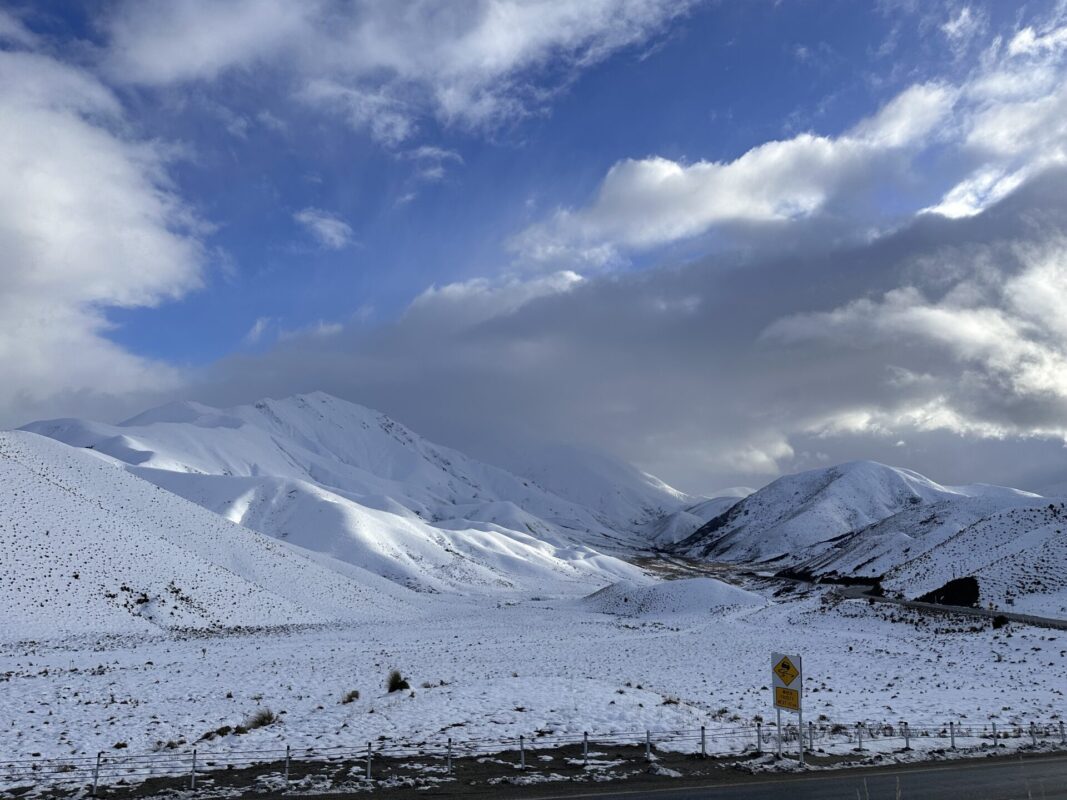
One of the major bus operators in New Zealand is InterCity . Honestly, if you’re looking for the cheapest and most convenient option without a car, it’s going to be InterCity.
InterCity busses connect many towns and cities in both the North and South Island . They operate all year round, but you might find some routes are seasonal.
InterCity Options
Pay as you go When travelling around New Zealand with InterCity, you have different options. The first option is to buy pay as you go tickets. This means you book your bus tickets as and when you want to. However, if you’re planning to use InterCity several times, this will not be cost-effective.
One of the great things about InterCity is they offer passes. This means you can buy a pass and use the bus as a hop on, hop off service. There are two options for InterCity passes.
Travel Pass The travel pass is a set itinerary covering some of the most popular areas in New Zealand. They often include extra perks such as included activities.
Here are some of their popular Travel Pass options:
- Alps Explorer : Christchurch to Queenstown with Mount Cook. This includes a day trip to Milford Sound ($229 NZD)
- West Coast Passport : Picton to Queestown including Nelson and Franz Josef ($125 NZD)
- Ultimate New Zealand: North Island & South Island including ferry crossing and Milford Sound ($529 NZD)
All the passes are available to buy on the InterCity website .
The Travel Pass is a cost-effective way of seeing New Zealand in a short amount of time. There’s no limit on how long you can spend in each destination giving you plenty of time to explore.
The disadvantage of choosing InterCity’s Travel Pass is there is no flexibility for your route. You’ll only be able to visit the set destinations.
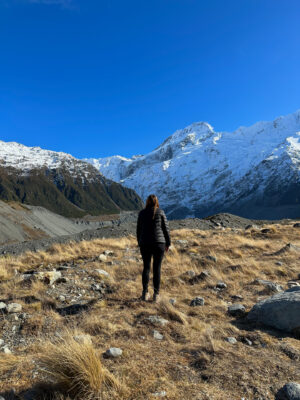
Hooker Valley
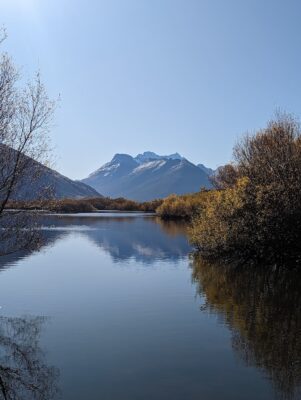
Flexi Pass In my opinion, the InterCity Flexi Pass is the best way to get around New Zealand without a car.
Like the Travel Pass, the Flexi is also a hop on, hop off pass, but it’s set up by hours instead. You simply purchase a set number of hours and can travel on their network for that amount of time. Once you’re running low, you can top up your hours.
If you’re planning to travel several times with InterCity and want the flexibility to see plenty of destinations, this is likely your best option.
InterCity Summary
Pros of InterCity
- Great bus network
- Can be inexpensive depending on which pass you travel on
- Can be flexible and make changes to your itinerary
- Gives you the chance to spend time in each place
Cons of InterCity
- There is a set timetable
- Not all bus routes run everyday or all year
- Doesn’t go everywhere
- You may still need a car/taxi to get to your activities
It’s advised to book in advance as the busses do fill up, especially in the summer.
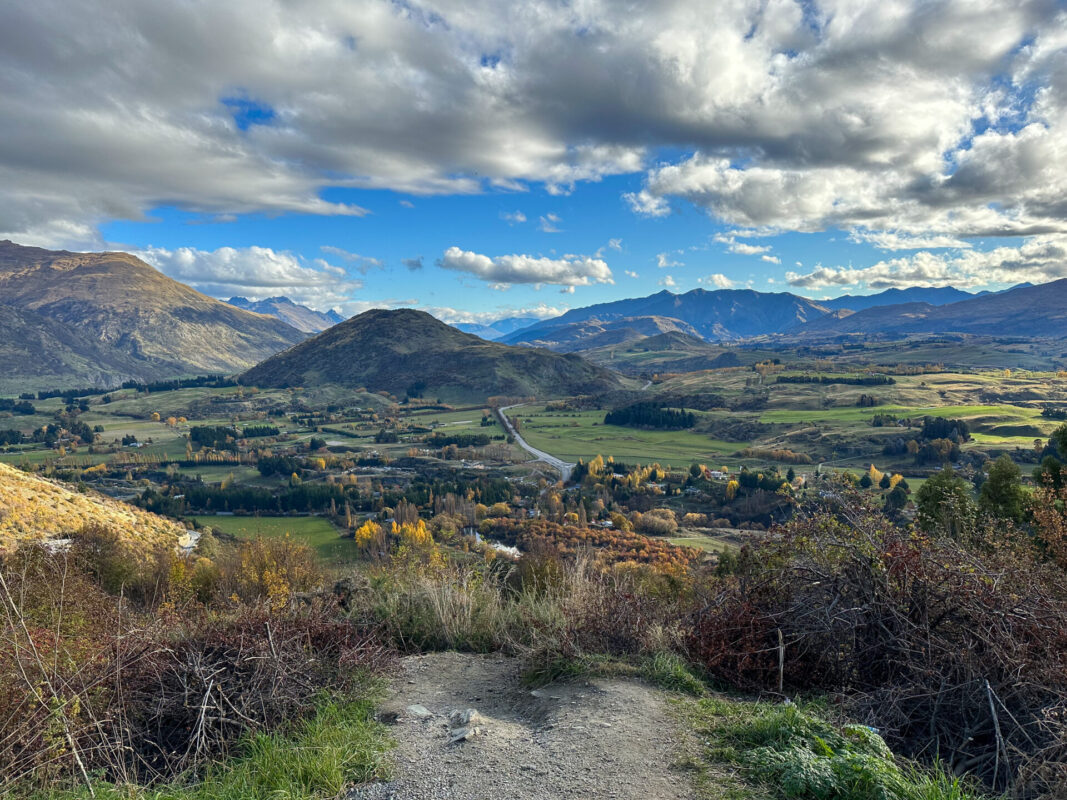
The Kiwi Experience Bus
If you’re a backpacker looking for a service like InterCity, but want to easily meet other travellers, then the Kiwi Experience could be an option for you.
The Kiwi Experience describes itself as like a guided tour but with the flexibility to do what you want. In summary, it’s a hop on hop off bus service with some added extras.
Many of the drivers act as a tour guide and will tell you about the area. They can sell you discounted activities and there is also discounted accommodation available as part of your package.
The Kiwi Experience is a great option for those who are nervous about travelling alone. You’ll be with like-minded travellers and experienced drivers, but still have the flexibility to do what you want. It’s a great option for getting around New Zealand with no car or campervan.
How it works
The Kiwi Experience offers hop on and hop off bus passes. There are a variety of passes to choose from which offer pre-set routes around New Zealand.
Once you’ve decided which route you want to do, you purchase your pass and book your busses. The tours range from 1 day all the way through to a minimum of 25 days.
If you want to see the highlights of both the North and South Island, I’d consider the Hokey Pokey tour ($1750 NZD). This tour takes you around the main spots in the North Island before doing a loop of the South Island. You’ll need at least 3 weeks to do this.
Their most in-depth bus route is called the Whole Kit and Caboodle . You’ll need at least 25 days to do this and it costs $1899.
For those with less time, consider the Tiki tour as this is only 16 days (1540 NZD).
All the tour options can be found on the Kiwi Experience website .
The Kiwi Experience also offer pre-organised group tours. I’ve spoken more about these below.
I personally find the Kiwi Experience a bit expensive for what it is. If you want to do a budget trip, you’re better choosing InterCity and staying at social hostels to meet people. If you want to be sure you’re going to meet people and have lots included, choose a fully guided tour.
Pros of Kiwi Experience
- Easy to meet people
- The drivers can help you plan everything
- It’s flexible so you can spend as much time in places as you want
- Can easily book accommodation through the website
Cons of Kiwi Experience
- It’s very expensive for what it really is
- It can be a bit of a party vibe
- You’ll still often find yourself needing to use taxis to get to specific places
Read a full in-depth review of the Kiwi Experience .
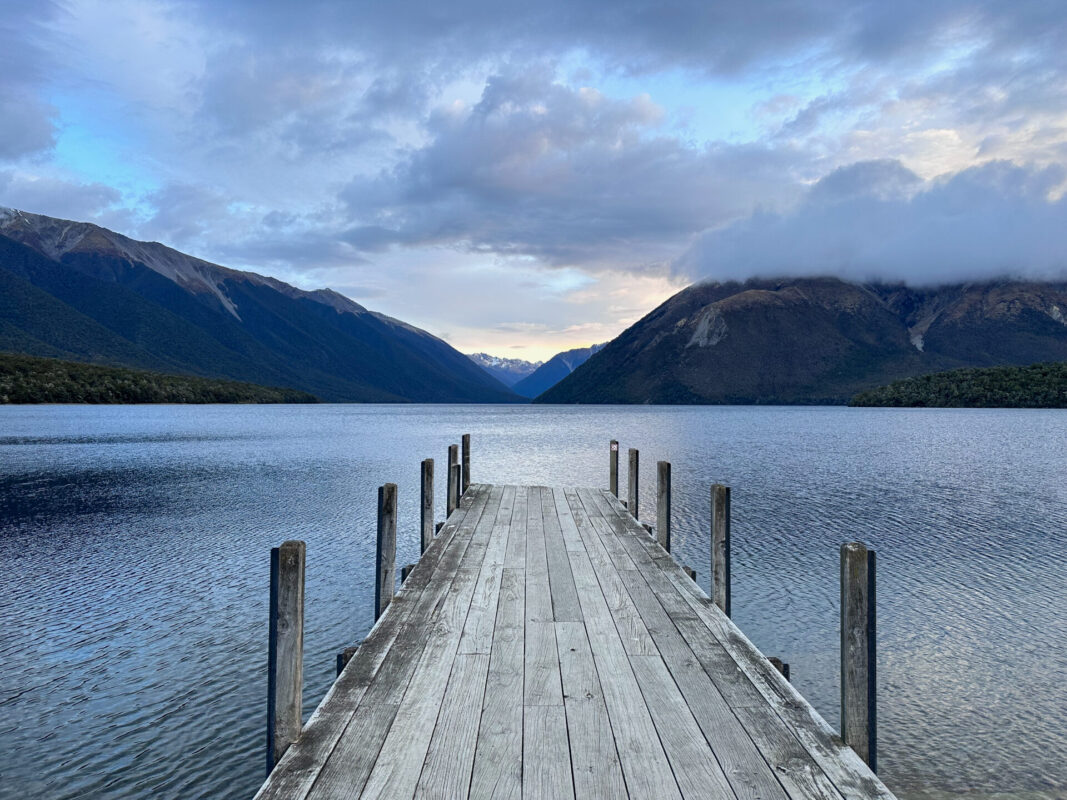
Travel by train
Unfortunately, it is very difficult to get around New Zealand by train. The country doesn’t really have a train network away from the cities.
One option to take the train in New Zealand is to choose one of the scenic rail journeys.
One of the most popular scenic train routes is the TranzAlpine which takes you through the stunning mountains from Greymouth to Christchurch. The train ride is approximately four hours. It’s one of the most beautiful train journeys in the world.
Another popular scenic train route is the Northern Explorer from Auckland to Wellington. The train passes through popular places in the North Island including Hamilton and Tongariro National Park.
The Coastal Pacific train is another stunning route which takes passengers from Picton to Christchurch via the east coast.
While using trains to get around New Zealand will be a challenge, they could be added to a bus itinerary. For example, consider taking the TranzAlpine train from Christchurch to Greymouth. From there, use InterCity to explore New Zealand’s West Coast.
Join a group tour
If you don’t have a car in New Zealand and are nervous about travelling alone, consider joining a group tour.

Group tours in New Zealand

Group tours are the perfect option if you want everything planned for you with little hassle. They can be expensive, but I think it’s a great way to get around New Zealand, see the highlights and meet like-minded people. If you’re nervous about travelling solo in New Zealand , a small group tour could be the answer.
There are many operators offering group tours in New Zealand. Some of my favourites include:
Intro Travel Intro offers 9 or 17-day tours around the country. You can opt to do the North or South Island, or both. The tour takes you to the major highlights of New Zealand, including Rotorua, Hobbiton, Waitomo, Mount Cook, Queenstown and Milford Sound.
If you’re coming to New Zealand on the working holiday visa, Intro offers an extra service to help you get set up for your stay. This includes sorting your IRD number and helping you find a job.
The demographic for Intro Travel in New Zealand is 18-40s.
Disclaimer: I worked as a Group Leader for Intro during my time in New Zealand. I receive no commission or benefits for promoting this tour on this website.
G Adventures G Adventures are one of my favourite group travel companies. They offer group tours all around the world. I’ve travelled with them several times and always have a great experience.
G’s demographic tends to be a little more varied, but they offer tours for 18-40s if you prefer a younger crowd.
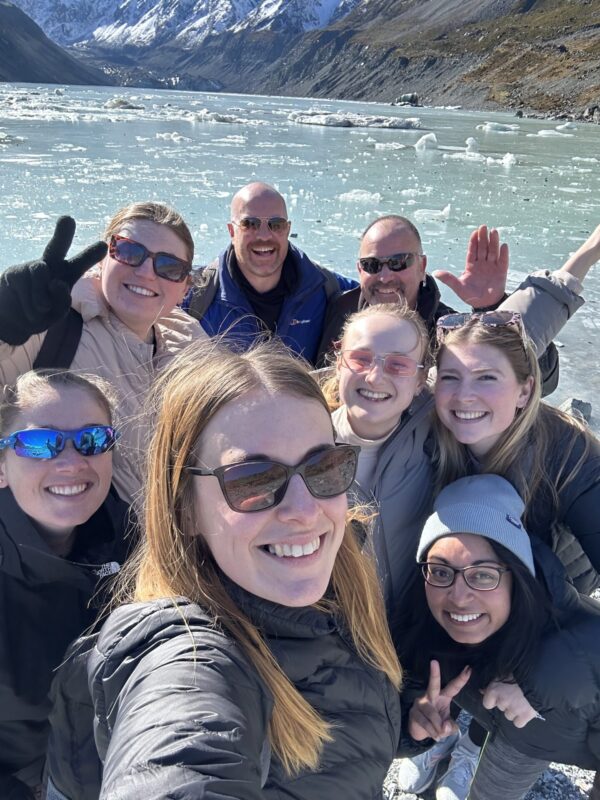
Intrepid Travel Intrepid is another popular group tour agency who offers tours around New Zealand. These tours tend to have a slightly older demographic. They’re another fantastic option for seeing New Zealand without a car.
The Kiwi Experience As well as their hop on and off busses, the Kiwi Experience also offer organised tours.
Choosing to join a group tour is a great way to see New Zealand without a car. Everything is organised for you and if something goes wrong, you don’t have to worry. It’s worth noting that there’s little flexibility with group tours. There is a set itinerary which you must stick to unless you leave the tour.
By boat or plane
New Zealand is made up of an estimated 600 islands, so it’s no surprise there are several boats taking people between destinations.
The most popular boat journey in New Zealand is the ferry between the North and South Islands . Whether you have a car or are travelling by bus, the ferry is the best option to get between the North and South Island. It’s a lovely boat ride with beautiful scenery, and there’s even the chance of seeing whales at certain times of the year.
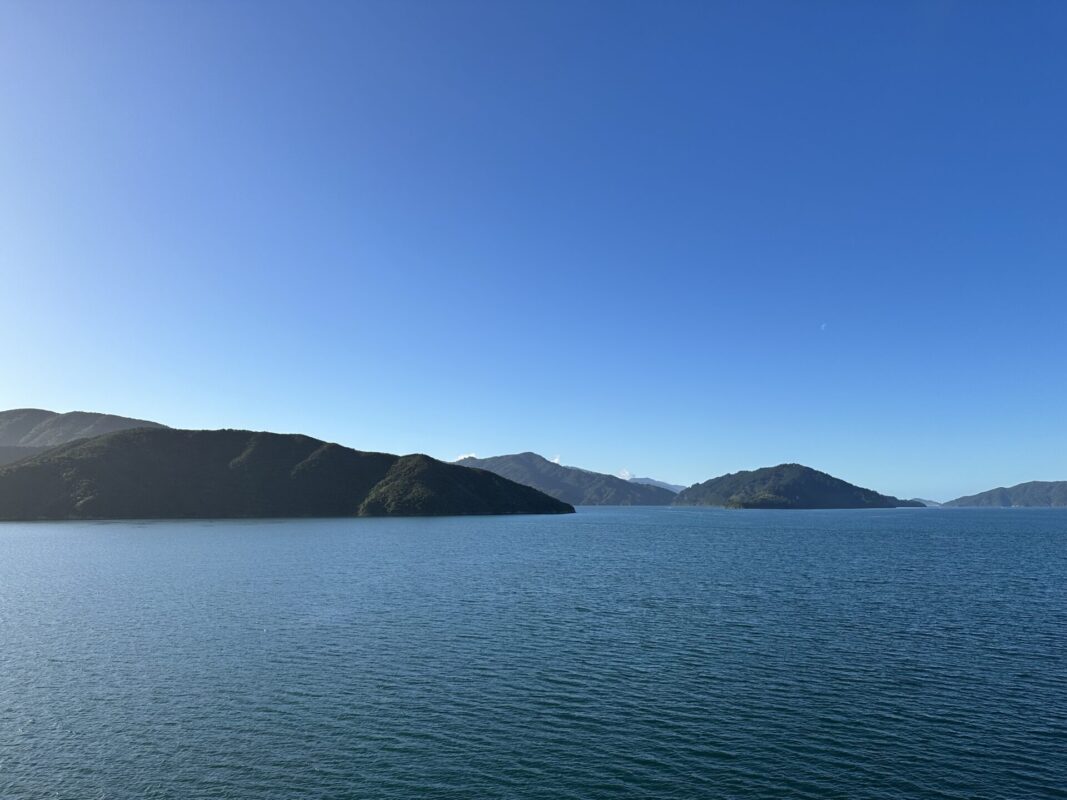
Despite New Zealand’s small size, many of the major towns and cities in New Zealand also have regional airports. While you certainly won’t be able to get around New Zealand by plane altogether, you’ll be able to fly between some of the more popular destinations.
For example, destinations such as Rotorua, Dunedin and Nelson all have airports.
Itinerary for getting around New Zealand without a car
To get around New Zealand without a car, consider using a range of different transport options. Here’s something I would consider:
Stop one : fly into Auckland and spend two days exploring New Zealand’s largest city.
Stop two: join an organised tour to Rotorua via Hobbiton and Waitomo Glowworm caves.
Stop three: from Rotorua, get the InterCity bus to Wellington (some of these busses go via Tongariro National Park if you want to stop here.
Stop four: from New Zealand’s capital, take the ferry across to Picton.
Stop five : using your InterCity bus pass, make your way down to Queenstown stopping at the major West Coast highlights. This includes Franz Josef and the beautiful town of Wanaka.
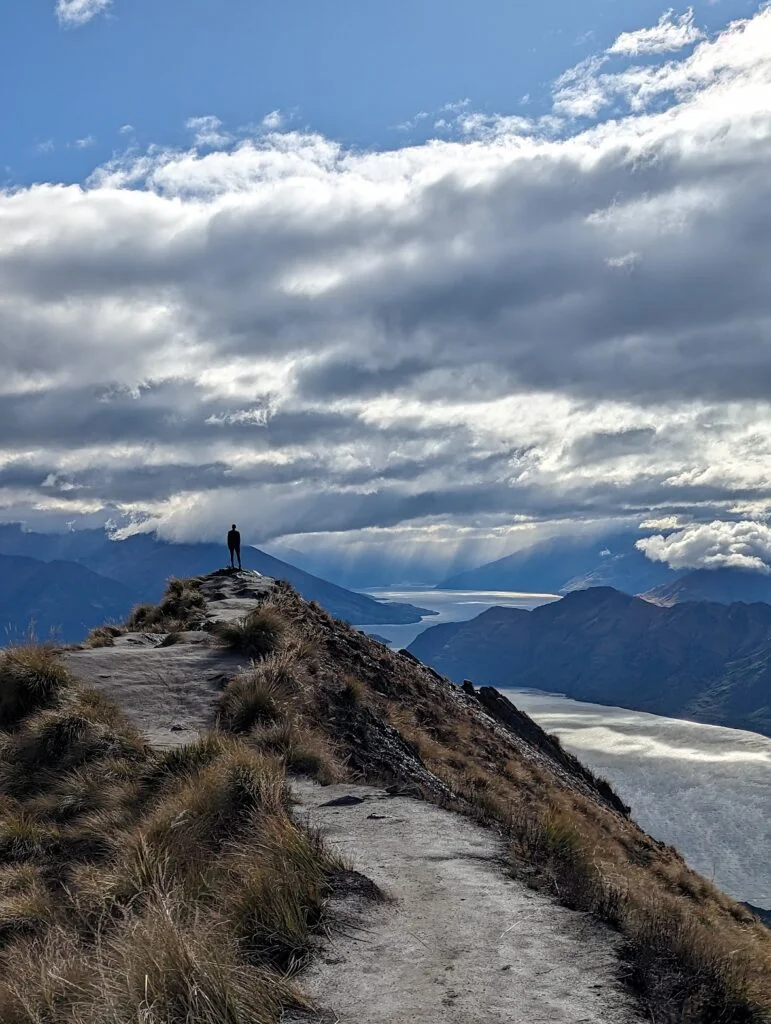
Stop six : spend some time in Queenstown, the ‘Adventure Capital of New Zealand’. Make the most of your InterCity bus pass and take a day trip to the wondrous Milford Sound. If you want to get off the beaten path, consider visiting Doubtful Sound .
Queenstown is home to the relaxing Onsen Hot Pools . The perfect place to relax after all this exploring.
Stop seven : join an organised tour from Queenstown to Christchurch via a stop in Mount Cook National Park , home to one of the best walks in New Zealand – The Hooker Valley Track. If you have time, stay for a few days in Tekapo.
Stop eight : finish your trip to New Zealand in Christchurch, the South Island’s biggest city.
To summarise, there are several different methods to get around New Zealand without a car. So don’t be put off if you’re not planning to drive. New Zealand is without a doubt one of my favourite countries I’ve ever been to and promises the trip of a lifetime.
Like this post? Share on social media.
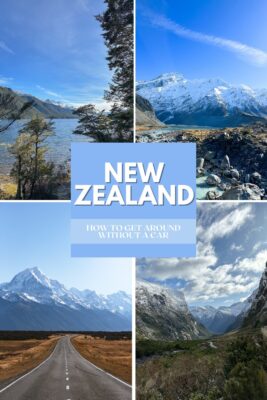
Related Posts
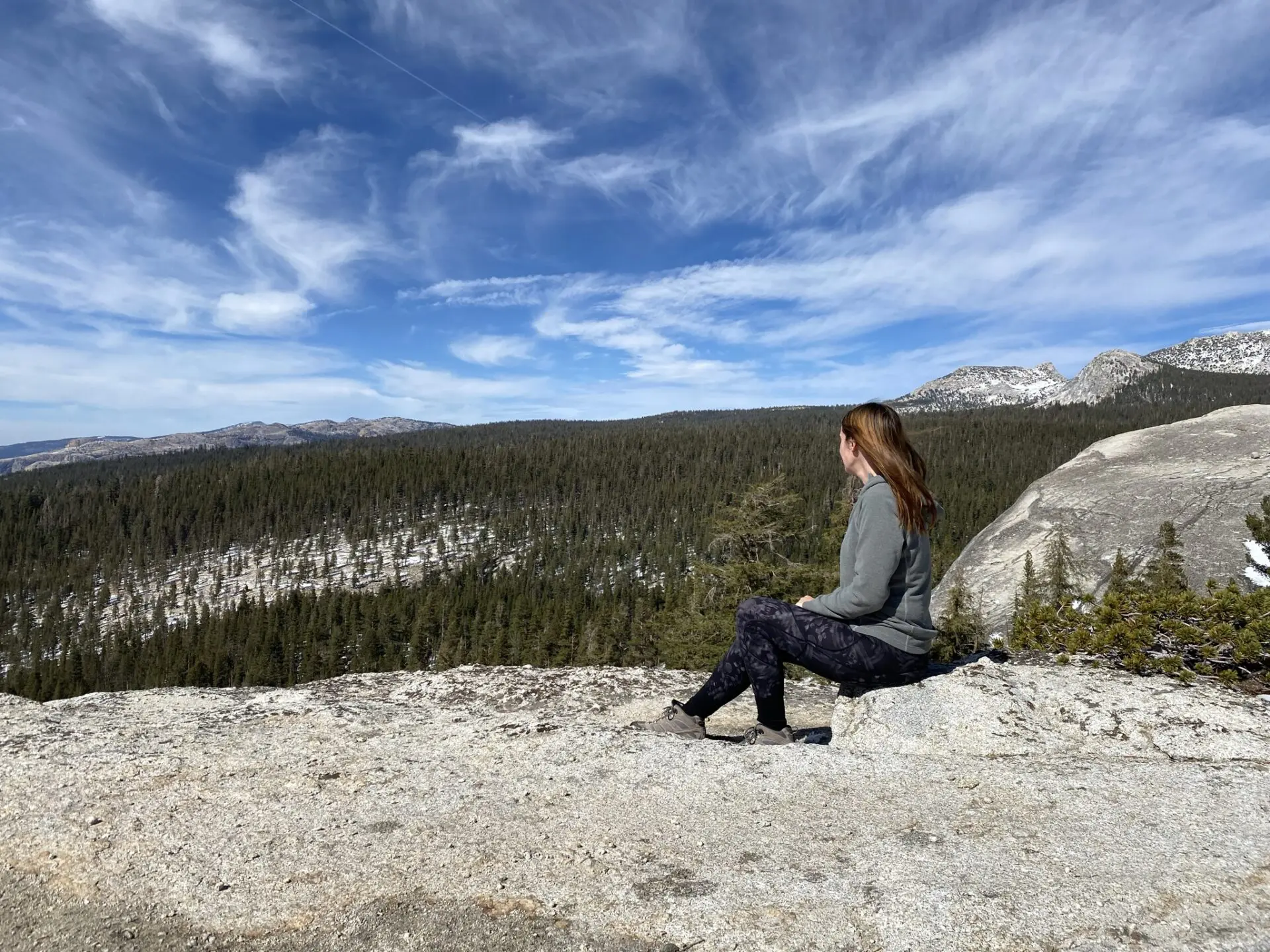
Solo Female Travel: 13 Helpful Tips for Hiking Alone
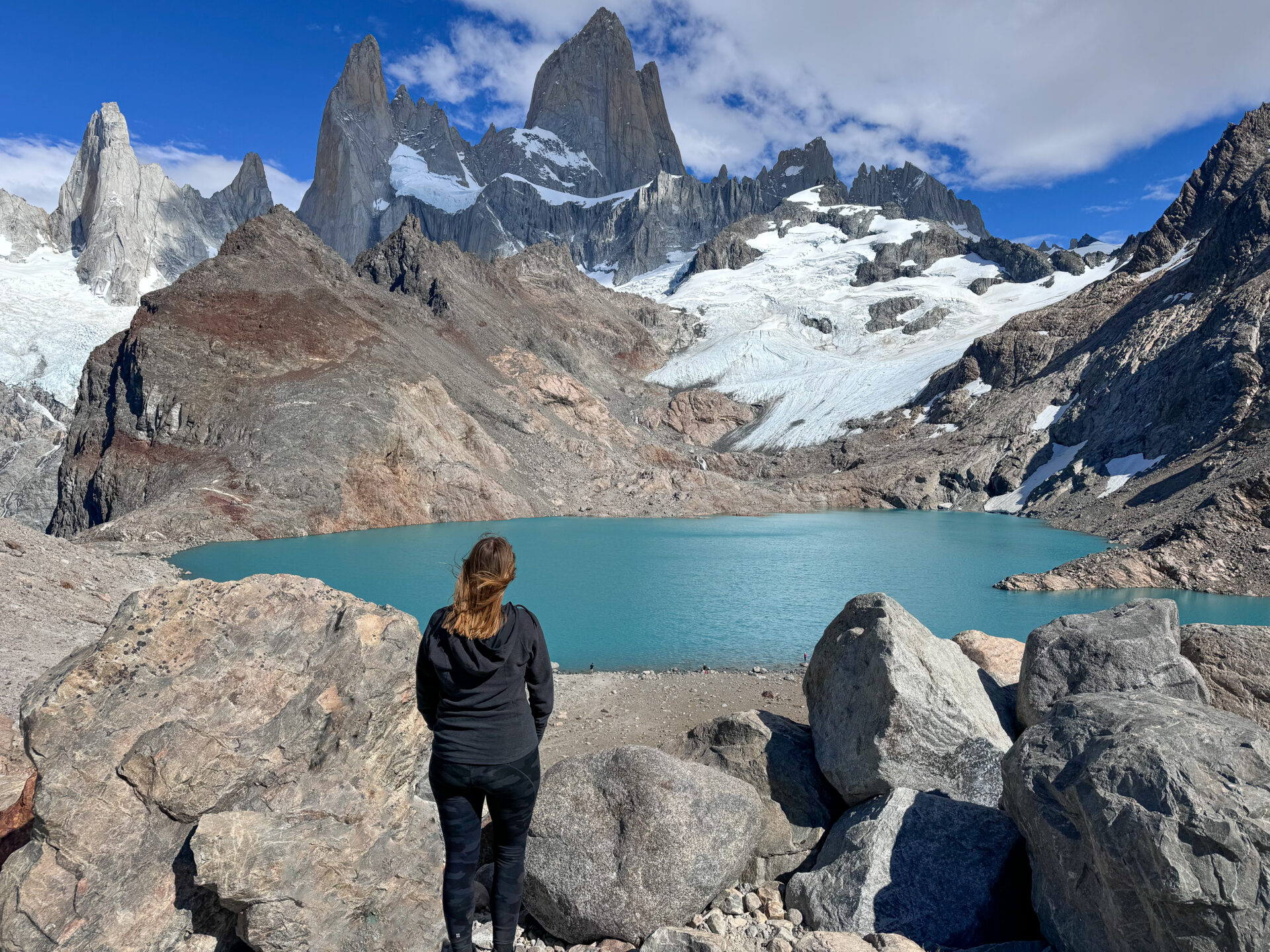
Quitting Your Job to Travel: 10 Things They Don’t Tell You

Planning a Solo Road Trip in New Zealand? 10 Helpful Tips

Is Ecuador Safe for Solo Female Travellers? A Guide to Solo Travel and Staying Safe
Kiwilanders New Zealand

How to Travel Without a Car in New Zealand

While the idea of a road trip across New Zealand is appealing, it’s entirely possible to explore the beauty of this country without relying on a car.
In this guide, we will unravel the secrets of travel without a car in New Zealand, discovering the convenience, adventure, and unique experiences that await those who choose alternative modes of transportation.
1. Embrace the Kiwi Culture of Hitchhiking
Known for its friendly locals, New Zealand offers a unique hitchhiking culture that allows travelers to connect with people and experience the country in an intimate way .
Hitchhiking is legal and generally safe , especially in rural areas. Embrace the spirit of adventure, make new friends, and let the road unfold as you hitch a ride from one stunning destination to another.
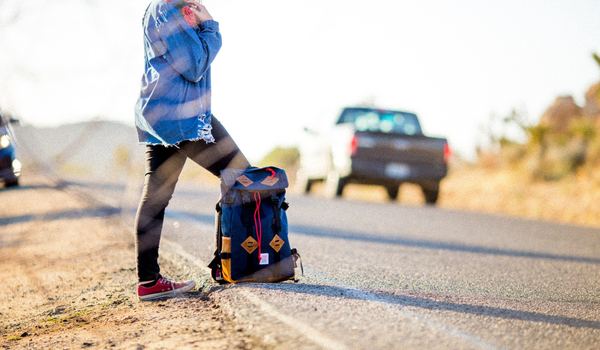
2. Mastering Public Transportation
New Zealand boasts a well-organized public transportation system, making it easy for travelers to navigate cities and regions without a car . Buses, trains, and ferries connect major cities and towns, providing a reliable means of transportation.
Invest in a regional transport pass for added convenience , and let the scenic routes and cozy train compartments become an integral part of your Kiwi adventure.
When moving between islands it is essential to have an arranged transport , for this part, we can recommend Stray Travels as they have different options for travelers planning to discover New Zealand without the need for a car.
🚍 Check Stray Travels Website

3. Explore the Great Walks
For nature enthusiasts and hikers, New Zealand’s Great Walks offer a spectacular way to explore the country’s diverse landscapes . From the famous Milford Track to the Tongariro Alpine Crossing, these well-maintained trails showcase the best of New Zealand’s natural beauty.
Utilize public transportation or guided tour services to reach the trailheads , allowing you to immerse yourself in the stunning scenery on foot without the need for a car.

4. Cycling Adventures
For those with an adventurous spirit, cycling is an excellent way to explore New Zealand’s landscapes at a more intimate pace. Many regions offer dedicated cycling trails, from the Otago Central Rail Trail to the Hawke’s Bay Trails.
Rent a bike or join a guided cycling tour, pedaling through vineyards, coastal paths, and quaint towns, embracing the freedom and flexibility that cycling provides.

5. Utilize Domestic Flights
While New Zealand is known for its stunning landscapes, the distances between certain destinations can be substantial . Domestic flights are a convenient option for covering long distances quickly.
Airlines operate regular flights between major cities and regional airports , allowing you to hop from one part of the country to another without the need for a car. Keep an eye out for budget airlines for cost-effective travel.

6. Boat and Ferry Adventures
Given New Zealand’s island geography, boats, and ferries become a natural means of transportation . Explore the picturesque Bay of Islands, sail through the Marlborough Sounds, or take a ferry between the North and South Islands.
These journeys offer not only efficient transportation, but also the chance to witness New Zealand’s coastal beauty from a unique perspective.

7. Local Tours and Shuttles
New Zealand’s tourism industry is well-equipped to cater to travelers without cars. Local tours and shuttles provide guided experiences to some of the most stunning and remote locations. From glowworm caves to fjord cruises, these tours offer a hassle-free way to explore New Zealand’s natural wonders without worrying about driving.

8. Stay in Backpacker Hostels and Walkable Accommodations
Opt for accommodations that are centrally located and easily accessible on foot. Backpacker hostels often provide a budget-friendly option with a central location , making it convenient to explore nearby attractions by walking.
Cities like Wellington, Auckland, and Christchurch are designed for pedestrian exploration , allowing you to soak in the local culture without the need for motorized transport.
For booking the cheapest deals we can recommend HostelWorld, their search engine have weekly special deals and highly competitive rates.

In conclusion, traversing New Zealand without a car is not only feasible, but can also be a rewarding and enriching experience. From hitchhiking through the friendly countryside to cycling along scenic trails, utilizing public transportation, and embarking on boat adventures, there are numerous ways to explore the diverse landscapes and cultural tapestry of Aotearoa.
Embrace the spirit of adventure, connect with the locals, and let the journey become as memorable as the destinations themselves . In New Zealand, the path less driven can lead to the most extraordinary experiences.
Safe Travels! 🧭✈

Table of Contents

Luis Domenech Garcia
Welcome to New Zealand! I'm an expat who has called this beautiful country home for 11 years. During my time in NZ, I worked as a campervan dealer, and now I'm excited to share with you the best tips and experiences about this amazing country. Join me on a unique journey as we embark on adventures together. Your Kiwi adventure starts right here!
Related posts

Best Coffee in Queenstown, New Zealand

List of Islands in New Zealand

The 12 Best Hikes and Walks around Christchurch

A Lady in London
And Traveling the World
Lady’s New Zealand without a Car Itinerary
The most important thing I’ve learned on my travels is the necessity of being flexible. That lesson has paid off today, as I’m in Singapore and I’ve suddenly had to cancel my plans to travel from Brisbane to the Great Barrier Reef next week. My boyfriend has to fly back to London, and I’ve found myself with 9 days on my own before my flight home. I could go with him, but I can’t help wanting to stay in the Antipodes. I spend a few hours coming up with a plan, and the result is a 9-day itinerary for New Zealand without a car.
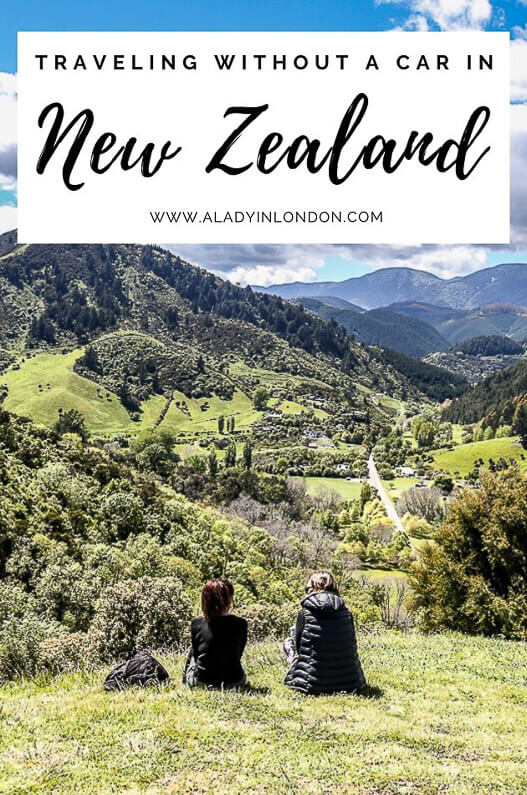
New Zealand without a Car
I know, I know. I’m supposed to drive when I go to New Zealand. It’s the best way to see the country.
But as an American (and someone who has never quite mastered the difference between right and left), I’m a bit terrified to drive on the “other side of the road”. By myself. In a foreign country.

I’m not going to let it stop me from seeing New Zealand, though. Given I’ve been to the North Island before, I hop on a flight from Brisbane to Christchurch, excited to explore the South Island and Wellington.
My journey will be by rail, bus, and ferry. It’s definitely possible to visit New Zealand without a car, and I can’t wait to do it.

Christchurch
My first stop is Christchurch itself. I’ve arrived just weeks before the most recent earthquake, and I’m lucky to see the city at the peak of its reconstruction following the last two.

I stay with friends here, and seeing Christchurch with locals gives me a great introduction to this part of New Zealand.

One of my friends takes me to a viewpoint by the Sign of the Takahe to get a feel for the city, then over to London Street in Lyttelton for a taste of a local seaside neighborhood.

After that we explore The Tannery shopping arcade and the city center, which impresses me with its ability to improvise pop-up shops, restaurants, and cafes in spaces left empty by the last earthquake.

The next day I have time to explore alone on foot, and I discover more to love. From the street art to the Botanic Gardens and the flags in Cathedral Square, Christchurch is full of color.

As a Californian, I adore the Mission-style buildings on New Regent Street, as well as the trams that run along it.
The Cardboard Cathedral and adjacent 185-chair earthquake memorial are moving tributes, and I can’t help drawing comparisons between this city and San Francisco .

Elsewhere, I find great shops and colorful picnic tables, not to mention Dimitris, a favorite local lunch stop where I enjoy mouth-watering falafel.
By the time I leave Christchurch, I’ve completely fallen in love with the city.

But it’s time to move on, and the next stop on my itinerary for visiting New Zealand without a car is Kaikoura. This town is known for its whale watching and beautiful scenery.
The train journey takes me through green hills and valleys before revealing the stunning coastline this part of the country is known for.

Three hours later, I arrive, check into my hotel , and set off to explore. The town itself is small, but the Kaikoura Peninsula Walkway is packed with treasures.

From adorable baby seals to fresh seafood on the beach, I’m on sensory overload all along the waterfront.

Then it’s up to the top of the cliffs for stunning views of beaches below. I’m amazed at the beauty of the coastline here, and wander for hours exploring it.

The next morning I’m back on the train and off to Blenheim, the third stop on my 9-day New Zealand itinerary. Blenheim is in the heart of Marlborough’s wine country, and some of the world’s best Sauvignon Blanc is produced here.

After checking into my hotel and taking a quick walk around Seymour Square and the city center, I head out on a wine tour in Blenheim’s vineyards.

I’m happy to be without a car, as the wines are oh-so-drinkable and the scenery so lovely I can’t take my eyes off the mountainous backdrop behind the vines.
I taste at Giesen, Nautilus, Bladen, Spy Valley, No. 1 Family Estate, and Fromm before my tour returns to Blenheim in time for dinner.

And after breakfast, I’m off on the train again. This time my destination is Picton, a town at the very top of the South Island of New Zealand.

Picton has some great hiking trails, and I’m excited to discover where they lead. I check into my hotel , then head out to explore.

On my first afternoon I head up Tirohanga Track to see the views across Queen Charlotte Sound. Even though it’s drizzling I still love walking through the wooded hills and taking in the islands in the distance.

The next morning I’m off to hike to The Snout, a skinny peninsula that juts into the sound. Sadly, the rain decides to join me.
I get soaked on and off, and end up ankle-deep in mud. Given my trip is last-minute, I’m hiking in ballerina flats and they don’t exactly like the conditions.

I get almost all the way to the end of The Snout before I have to give up and head back to Picton. But despite my disappointment (and the downpour), I’ve enjoyed the scenery along the way.

In the afternoon I head to Nelson, the penultimate destination on my 9-day itinerary for New Zealand without a car. I arrive by bus in the afternoon, bringing the downpour with me.
Thankfully most of the streets are graced with awnings, so after checking into my hotel , I’m able to explore historic South Street and the downtown without getting too soaked.

The next day the sun comes out, and I go with it. After breakfast at the colorful Kush Coffee, I spend the day exploring the Sunday wares at Monty’s Market, cooing over the ducklings in Queens Gardens, and walking along the river.

Eventually I make my way up to the Centre of New Zealand, which offers panoramic views over Nelson.

I commune with sheep, walk among trees, and wind up back in the city center with time for lunch at the adorable 7010 Your Local cafe before I leave.

It’s one of the most pleasant days of my trip, and goes a long way to make up for the rain the day before.

In the afternoon I hop back on the bus to Picton, then catch a ferry to Wellington. The capital is the seventh and final stop on my 9-day itinerary for New Zealand without a car, and I can’t wait to see it.

Thankfully the sun has followed me from Nelson, and after checking into my hotel , I spend an entire day outdoors (with a hat and sunscreen that do nothing to prevent me from getting terribly sunburned).

After breakfast at The Hangar, I make my way to Cuba Street, one of the city’s most celebrated areas for shopping and restaurants.

From there I walk along the waterfront, taking in everything from beaches to Victorian houses, marinas to parks.

I wander down busy Lambton Quay and up into the Wellington Botanic Garden, where I spend most of the afternoon wandering the paths and watching the cable car ply the route to the top of the hill.

In the evening I settle in for fish and chips at The Chippery in Thorndon, my mind and body preparing for the next day’s journey back to London.

9-Day Itinerary for New Zealand without Driving
And soon enough, I’m on my way home. My trip to New Zealand has been a whirlwind. There are things I’ve done right (I loved all the places I visited).
And there are things I’ve done wrong (I should have left more time in Picton to walk some of the Queen Charlotte Track and Nelson to visit Abel Tasman National Park).
But given I planned and booked the whole 9-day itinerary for New Zealand without a car in three hours from a hotel room in Singapore , I think it turned out pretty well.

Above all, it made me happy to have learned that adapting to changing circumstances can make for great travel experiences.
Given the sad news of the earthquake shortly after I arrived back in London, it’s a particularly good lesson to hold on to.
If you want to see more of what I got up to, you can watch my New Zealand trip video .
Have you been to New Zealand without a car? What were the highlights of your itinerary?
Find this post helpful? Buy me a coffee!
New here? Join thousands of others and subscribe to the A Lady in London blog via email .
Some of the links in this blog post are affiliate links. At no cost to you, I earn a small commission when you click on them and make a purchase. It doesn’t affect the way you shop, and it’s a great way to support the A Lady in London blog.
18 Comments on Lady’s New Zealand without a Car Itinerary
I’d love to visit it one day:)
I hope you can!
You certainly made the most of your 9 days in New Zealand and that without driving! It is a beautiful itinerary!
Thanks, Miriam!
As a Kiwi, I’m only ever going to be biased but I’m impressed by the amount of places you managed to see in your whirlwind trip – especially with the planning time you had!
Thanks, Emma! It was a whirlwind trip, but I’m glad I got to see so many places. I really enjoyed it.
Looks like such a great short trip. I was really surprised at what you could find in Christchurch – I was there for a couple of days (with car and travel partner) and we just couldn’t really figure out how to enjoy the city..
Thanks! I’ve heard the same thing from a lot of people about Christchurch. I think it really helped to see it with a local. I enjoyed my time there a lot.
A beautiful post. Lovely itinerary. You have given this kiwi in Scotland all the feels this afternoon. Thank you.
You’re welcome, Sandra! I’m glad you enjoyed it.
I’ve been a fan of your blog for years and it’s so surreal to see my home town (Christchurch) and favourite mini-break destinations featured. For anyone travelling to NZ I’d highly recommend the Abel Tasman walk. Last year my boyfriend and I did it in three days, but lots of tourists catch a water taxi in, walk part of it and then water taxi out again that same day. I’m totally biased but I think it’s some of the most beautiful scenery in the world!
Thanks for sharing! I wish I’d had time to do some of the Abel Tasman walk. I heard such good things about it!
Smart move and exactly what I want to do when I get to Australia someday…also go to New Zealand. If I’m going to spend that long on a plane over the Pacific I am going to make it worth my while! 🙂 Again, as in the previous post I love the small town feel…and baby seals, of course :))
Yeah! I agree about the baby seals. They’re so cute!
Wow, you really did get to visit a lot of places. Looks like you had a great trip.
Yeah! It was a lot of fun.
I have just discovered your blog and wonderful photos and thoroughly enjoyed them. I am a Kiwi who’s been living in England for 8 months and I only have 3-4 months left but I’ve really got into photography since being here. My camera is just a little point and shoot but I’ve managed to get some good shots and hope to advance to something a bit more professional once back in NZ. Glad you enjoyed your time in New Zealand – you will have to come back one day and explore further. Feel free to contact me and I’d be happy to show you some stunning towns and beaches around the top half of the North Island.
Thanks, Su! I hope you enjoy the rest of your time here.
Leave a Reply Cancel reply
Your email address will not be published. Required fields are marked *
This site uses Akismet to reduce spam. Learn how your comment data is processed .
© Copyright A Lady in London 2007 - 2024. Privacy Policy.
A blog about adventures in tango, travel and storytelling
Planning a trip to New Zealand without a car

When I was planning my trip to New Zealand last year, I was told the only way to see it was by car. Not having driven since I passed my driving test many years ago, I didn’t feel that a solo trip to New Zealand was the best time to start. After doing some research, I concluded that it was feasible to visit many of the places I wanted to see using public transport. And when I read about the train journeys of New Zealand I knew this was definitely something I needed to do.
So if you’re visiting New Zealand and don’t want to drive, what are the options? Here’s an overview:

The bus is the cheapest way for getting around if you’re using public transport. The main bus company and as far as I know the only one which covers both islands, is Intercity . If you’re planning on making several journeys by bus, it’s worth checking out their travel passes. There are two kinds of Intercity passes: the TravelPass and the FlexiPass .
This offers pre-planned itineraries for a fixed price. Check their website to see what places are covered and for some inspiration when planning your trip. You can stay as long as you want in each place along the itinerary and follow it either way around. The itineraries often include a day tour in the price, or offer tours which can be booked for an additional fee. For example, the Scenic South TravelPass , which costs $549 NZD, includes a day tour to Milford Sound. An optional extra of travelling via Mount Cook brings the total price to $644 NZD.
As the name suggests, this one lets you put together your own itinerary on the basis of the number of hours you plan to travel. The minimum is 15 hours which costs $132 NZD and it goes up to 80 hours ($545 NZD). You can top up your pass by 3 hours ($35 NZD) or 10 hours ($95 NZD). The pass is valid for 12 months from the date you purchase it (NB topping it up does not extend the validity period). This pass is also valid for booking certain day tours , as well as the InterIslander Ferry. You can consult some example itineraries on their site here and here in order to have an idea of how many hours to purchase.
Which ever pass you buy, keep in mind that you will still need to reserve your seat for each leg of the journey. Check the timetables well in advance when planning your trip, as most of the time there is only one bus per day.

There are three major train routes in New Zealand. On the South island, there is the Tranzalpine which runs between Greymouth and Christchurch in around four and a half hours. The Coastal Pacific runs between Christchurch to Picton (3 hours). Parts of the rail along this route were so badly damaged during the earthquake of November 2016 that the line was closed for just over two years. It re-opened again 1 December 2018. On the North island, the Northern Explorer will take you from Wellington to Auckland and back (12 hours one way). The train is more expensive than the bus, but it’s more comfortable and the best way to enjoy the spectacular scenery. Recorded commentary is available via headphones along the journey. There is also a separate, open-air viewing carriage.

Tickets can be booked on the Great Journeys of New Zealand website . They do have special offers from time to time, so it’s worthwhile subscribing to their newsletter in the run up to your trip to make sure you don’t miss an offer. Keep in mind when planning your trip that the Northern Explorer doesn’t run every day. It runs from Auckland on Mondays, Thursdays and Saturdays and from Wellington on Wednesdays, Fridays and Sundays. Both the Tranzalpine and the Coastal Pacific run daily in both directions (one train per day).

The scenic three hour ferry crossing is the best way to travel between the North and South islands. There are about five crossings per day, each way. I travelled with the Interislander ferry from Picton to Wellington. The ferry terminal in Wellington is some distance from the centre, but there is a free shuttle service which brings you to Wellington train station. The shuttle also operates in the opposite direction, leaving from platform 9 at Wellington train station about 50 minutes before the ferry departure. The ferry terminal in Picton is located a 10 minute walk from the centre and about 5 minutes from the train station, from where you can catch the Coastal Pacific. The timing for the crossings can vary, so make sure to check the latest schedule on their website .

Obviously the quickest way to get around New Zealand is by plane and this can be a good option if you’re short on time. The main international airport is Auckland, followed by Christchurch. If you’re arriving from Australia you can also fly into Wellington, Queenstown or Dunedin. These five are also the main domestic airports and therefore the best options for finding reasonably priced flight tickets. The main domestic airlines are JetStar and Air New Zealand.
And finally … my itinerary
So here’s how I organised my three weeks. It was mostly by bus, but some of them were tours (Te Anau to Milford Sound and Wanaka to Franz Josef) with plenty of stops for photos along the way.
- Day 1 – Flight from Sydney to Queenstown
- Day 2 – Bus to Te Anau
- Day 3- 4 Overnight cruise on Milford Sound (travel by bus from Te Anau included in the tour)
- Day 4 – Bus back to Queenstown from Milford Sound
- Day 5 – Bus to Wanaka . Stay 2 nights.
- Day 7 – Bus to Franz Josef. Stay 2 nights.
- Day 9 – Bus to Greymouth
- Day 10 – TranzAlpine train to Christchurch. Stay 3 nights.
- Day 13 – Bus to Nelson. Stay 2 nights. Day trip to Abel Tasman Park.
- Day 15 – Bus to Picton.
- Day 16 – Ferry to Wellington. Stay 2 nights.
- Day 18 – Train to National Park. Stay two nights
- Day 20 – Bus to Auckland. Stay 3 nights.
- Day 22 – Flight home from Auckland.
I moved around a lot because I wanted to see as much as possible. Arriving in a new place every 1-2 days, I did find the travelling got a bit tiring after two weeks. Overall I think I spent enough time in each place and I’m really happy that I got to see so much in the three weeks I had. More detailed blog posts about the places I visited will follow…
If there is anything in particular that interests you, let me know in the comments, I’d love to hear from you!

Related Posts

Leave a Reply Cancel reply
Your email address will not be published. Required fields are marked *
New Zealand Travel Insider
Traveling New Zealand without a car
Learn which transportation options are available when it comes to traveling around New Zealand when you do not have a car or do not want to rent a car.
If you cannot or do not want to rent a car or are afraid to drive in New Zealand – which is perfectly understandable – you have the option to travel around New Zealand without having to drive.
However, you must be aware that you will not be able to get to everywhere, that you must plan your trip around cities and towns in New Zealand that offer public transport, and that you will be bound to the time schedules when trying to get around New Zealand.
The three most common modes of transport you can make use of if you do not have a car are: airplanes, buses, and trains. These modes of transport will still not get you to remote places but at least you will be able to get around New Zealand and have a decent vacation.
Traveling without a car between New Zealand cities
I am assuming that after you arrive in New Zealand, you will want to go places and see things in different cities in New Zealand.
If that is not the case, you can skip this section and move on to the next section about Traveling without a car within cities .
The transportation options you have available to you to cover larger distances between cities are: airplane, train, bus, or ferry. You could also travel by bike if you wanted to, but I’ll exclude that option for the time being.
There are a couple of airlines that operate daily flights between major cities in New Zealand. Major cities in New Zealand include: Auckland, Christchurch, Dunedin, Queenstown, and Wellington.
Traveling to smaller cities or towns in New Zealand is also possible, but the amount of air carriers diminishes the less popular the destination is. Air New Zealand [airnewzealand.co.nz] offers by far the greatest range of flights and destinations around New Zealand.
Therefore, if you want to fly to a minor city or town, check whether it is possible with Air New Zealand.
[Photo: Bus stop in Wellington, New Zealand (28 KB)]
Note that domestic flights are often faster and may sometimes be cheaper than catching a train, bus, or ferry between cities.
Train travel
While cities such as Auckland and Wellington have train services within the city and to selected places in the direct area, New Zealand does not have trains that travel on a regular schedule throughout the country.
However, KiwiRail has a couple of trains that run between a few selected cities along scenic routes. These scenic train routes include:
- The Northern Explorer between Auckland and Wellington: Auckland – Auckland Papakura – Hamilton – Otorohanga (Waitomo) – National Park – Ohakune – Palmerston North – Paraparaumu – Wellington.
- The Coastal Pacific between Christchurch and Picton: Christchurch – Rangiora – Waipara – Mina – Kaikoura – Seddon – Blenheim – Picton.
- The TranzAlpine between Christchurch and Greymouth: Christchurch – Rolleston – Darfield – Springfield – Arthur’s Pass – Otira – Moana (Lake Brunner) – Kokiri – Greymouth.
Unlike local trains in Auckland and Wellington where you can purchase a train ticket on the day you travel, you must book a train journey with KiwiRail in advance.
All of the KiwiRail Scenic Journeys [greatjourneysofnz.co.nz] trains run according to a limited timetable and only once a day between cities. If there is enough time left in a day, they tend to return.
For example, because the train ride from Auckland to Wellington takes almost an entire day, the same train does not return on the same day.
This is in contrast to, for example, the TranzAlpine that departs from Christchurch in the morning and returns to Christchurch in the afternoon.
So theoretically speaking, you could catch the train to Greymouth and return on the same day. You cannot do that when catching the Northern Explorer from Auckland to Wellington or vice versa; you would have to return on a different day.
Just like trains, there are buses that run within cities and surrounding suburbs, and there are buses that run between cities.
Buses that run between cities are often operated by private companies, although there are some long-distance buses that are part of the public transport system.
If you want to go from city to city, you can catch a bus such as the InterCity [intercity.co.nz] bus. Advance bookings are essential and these buses generally drive on a particular route only once a day so their timetables are limited.
You just have to make sure that you do not miss the only bus that is available to your destination on a particular day otherwise you will have to wait till the following day to be able to catch the next one out.
Ferry travel
Ferries can be used to go from the North Island to the South Island or the other way around, and to travel to smaller islands off the coast of mainly the North Island.
For example, you can catch a Fullers [fullers.co.nz] ferry in Auckland to go to Rangitoto Island, Waiheke Island, Coromandel, Motutapu Island, etc. Likewise, you can catch a ferry [eastbywest.co.nz] from Central Wellington to go to Petone, Eastbourne, Seatoun, or Matiu / Somes Island.
These Auckland and Wellington ferries are smaller ferries that run on a more regular schedule than the larger ferries that cross Cook Strait to go from the North Island to the South Island [ Video ].
Traveling without a car within New Zealand cities
The transportation options you have available to you for traveling within a city are: bus, train, taxi, shuttle, or tour operator.
Larger cities in New Zealand offer public transport, which is a relatively cheap way to get around. The most expensive options are probably taxis and tour operators.
Buses and trains that are part of the public transport system tend to run on a regular schedule throughout the day, week, and year.
Timetables are often adapted to suit demand with less buses or trains driving during off-peak hours than during peak hours.
However, unlike buses and trains that run between cities, you are almost guaranteed to be able to catch a bus or train on the same day if you miss one.
Taxis generally hold a maximum of four people and are quite expensive. You must see catching a taxi as renting a car with your own personal chauffeur. Another thing is that taxis generally serve larger cities.
A cheaper option is to catch a shuttle. Shuttles can hold more people and are generally cheaper. The only thing is that you share the ride with other people who might be strangers to you, and shuttles generally wait until they have enough people to fill the van before they leave, so you might lose some time.
[Photo: Beach in New Zealand accessible without a car (29 KB)]
Useful links to public bus and train services in New Zealand
Below you will find a list of links to bus and train services that are part of the public transport system in New Zealand.
North Island
- Auckland: bus and train
- Gisborne: bus
- Hamilton: bus
- New Plymouth: bus
- Opotiki: bus
- Rotorua: bus
- Taupo: bus to Taupo Central , Taupo West , or Taupo North
- Tauranga: bus
- Wellington: bus and train
- Whakatane: bus
- Whangarei: bus
South Island
- Blenheim: bus
- Christchurch: bus
- Dunedin: bus
- Invercargill: bus
- Nelson: bus
- Queenstown: bus
- Timaru: bus
This article falls under Travel Guide .
Note: This article was accurate when it was published. Please confirm all details directly with the companies in question before planning your trip.
Related Articles
Similar posts, where to visit in new zealand in december.
Read about a few of the New Zealand places and attractions you could visit in December when summer in New Zealand begins.
It is now spring in New Zealand
Learn whether it is spring, summer, autumn, or winter in New Zealand if you are wondering what season it is now in New Zealand.
Car hire in Christchurch New Zealand
Learn which car hire opportunities are available at Christchurch airport and read about my experience renting from a couple of well-known companies.
Cost of food and eating in New Zealand
Learn what the cost of breakfast, lunch, or dinner in New Zealand is whether you choose to eat fast food, eat at a restaurant, or cook for yourself.
Christchurch to Queenstown road conditions
Find out what the current road conditions from Christchurch to Queenstown are at any time of the day, either online or offline.
When do New Zealand ski fields open?
Learn from when to when the ski season runs for New Zealand ski fields, so when they are open for skiing, snowboarding, cross-country skiing, etc.

37 awesome things to do in Auckland without a car
If you’re planning to stay in Auckland and you don’t have a car, you’re in the right place. These are the best things to do in Auckland that are easily accessible by foot or public transport.
Auckland City has a lot to see and do, as does Regional Auckland. Without a car though, it can be difficult to make the most of the City of Sails.
As Auckland locals, we’ve put this list together to help you plan a car-free Auckland visit.
From inner-city exploration to tours to take you outside of Auckland, these are all things you can experience by walking or public transport and guided tours.
Venture off the main road (Queen Street) to discover all that Auckland has to offer.
When you book through our links, you’ll often get a discount and we may earn a commission. Your support also allows us to run our Facebook community and create helpful content at no cost to you. Thank you!

Table of contents
The best things to do in Central Auckland without a car
Things to do in walking distance of central auckland, 1. head up the sky tower.
Admire the City of Sails from the tallest building in the country. 220m above the streets below, the Sky Tower is an Auckland icon.
Whilst you’re at the top of the Sky Tower, take on either the Skywalk or Skyjump .

2. Bike the ‘Pink Path’
Hire a bike (or an eBike if you’d prefer) and check out the Lightpath & the Nelson Street cycleway .
This iconic pink cycle trail takes you past some of the best skyline views.

3. Join a whale and dolphin-watching cruise
Though Kaikōura is better known for its marine life, it’s still possible to join a whale and dolphin-watching cruise in Auckland’s Hauraki Gulf.
This is a great choice if you’re not heading down to the South Island.
4. Sail an America’s Cup Boat
Learn how to sail an original America’s Cup yacht.
This is the perfect combination of fun, adrenaline, team and teamwork, all while taking in striking city views from the water.
Did you know? The Viaduct Harbour (AKA Viaduct Basin) looks like it does now because of construction carried out to host the America’s Cup.

5. Ride a jet boat on the harbour
Jet boating was invented in New Zealand, so there’s no better place for a jet boat adventure .
Though we prefer jet boating in Taupō , Queenstown and other parts of New Zealand, it’s worth hitting the water in Auckland if you don’t have time elsewhere.
6. Play mini golf at Holey Moley
Located centrally at the Viaduct Harbour, Holey Moley is fun for the whole whānau (family).
Choose from three different quirky 9-hole mini golf courses, with a range of pop culture references.
You’ll also find a bar and karaoke rooms there, along with fabulous waterfront views from the second story.

7. Go shopping
If you’d like to pick up some souvenirs, clothing or supplies, you can do so without leaving the city.
We recommend Queen Street, Chancery, High Street and Commercial Bay. Atrium on Elliott is also a good choice if you’re after The Warehouse or Rebel Sport.
8. Check out Wētā Workshop Unleashed
If you’re travelling with kids or you have a love of movie magic, we recommend heading along to Wētā Workshop Unleashed.
As it’s an indoor activity, it’s also a great choice on a rainy day.
>>> Read our review of Wētā Workshop Unleashed.
Did you know? Wētā Workshop Unleashed and the All Blacks Experience are just a floor apart in the same building, so it’s easy for your group to split up to do what they’re most interested in.

9. Learn about rugby at the All Blacks Experience
Rubgy is New Zealand’s national game and there’s nowhere better to learn about it than at the All Blacks Experience.
Combining sports and culture in a fun, informative and surprisingly emotional way, this is a worthwhile experience, even for those who don’t love sports.
>>> Read our review of the All Blacks Experience.

10. Wander our favourite inner-city districts
If you’re looking for great restaurants and bars, or a great place just to wander and people-watch, the inner city has a number of excellent options.
- Viaduct Harbour
- Wynyard Quarter

Eat out in Central Auckland
11. visit the auckland night markets – silo park, sunday 4pm – 11pm.
Though there are Auckland Night Markets locations all around Auckland, you’ll want to head to Silo Park if you don’t have your own car.
This market is full of yummy cultural food, making it a great option for dinner.
It’s held every Sunday from 4pm until 11pm.
12. Enjoy fresh seafood at the Auckland Fish Market
Opened over 100 years ago, the Auckland Fish Market now serves a wide variety of fresh and prepared seafood.
Eat your catch there by the waterfront, take it away to enjoy elsewhere, or purchase fresh seafood to cook at your accommodation.
13. Get dinner at one of our favourite restaurants
Auckland City is home to lots of fantastic restaurants.
Favourites include Cotto, Amano, Ahi, Homeland, Culprit., Tanuki’s Cave, White + Wong’s and The Sugar Club.
Check out the menus to see which is the best fit for you.
14. Dine at a Fancy Food Court
If you’re heading out for kai with friends and can’t decide on one spot in particular, why not try a modern food court?
They offer restaurant-quality food, freshly prepared to order and, best of all, allow your party to order from different restaurants whilst dining at the same table.
If this sounds like a bit of you, we recommend you try out the following:
- Elliot Stables, 39-41 Elliott Street
- Harbour Eats, 21 Queen Street (our favourite)
- Queens Rise, 125 Queen Street
15. End the Evening with an Amazing Dessert
Auckland is spoilt for choice when it comes to amazing dessert options .
One of our favourite spots is Giapo – there they create and serve the most creative ice creams imaginable – and they taste incredible too.

16. Visit the Maritime Museum
The Maritime Museum is centrally located at the Viaduct Harbour (a great spot for dining and people-watching).
Guided group tours are available or you can choose to explore the museum at your own pace, enjoying interesting exhibitions.
You’ll also be able to hop on board historic ships to see Auckland from the harbour.
17. See the city from the hop-on hop-off bus
If you like the sound of seeing many of the attractions on this list (including Sky Tower, Wētā Workshop Unleashed, The All Blacks Experience, Auckland Museum, SEA LIFE Kelly Tarlton’s, Auckland Zoo and MOTAT), without the need to organise your own way around Auckland, Auckland Explorer Bus could be the solution you’re looking for.
This hop-on hop-off bus allows visitors to explore many locations in central Auckland, while listening to expert commentary and the ability to leave and rejoin the tour at any stage.

18. Join an Auckland City tour
If you prefer the idea of a fully guided tour, we recommend Auckland City Revealed by Bush and Beach .
This three-hour tour runs each morning, showing off many of the top sights. in and around Auckland City.
>>> Check out these other fun things to do in the central city.
Activities a ferry ride from Central Auckland
All of these ferry trips depart from the Auckland Ferry Terminal.
Catching a ferry is a great way to get outside the hustle and bustle of Auckland City without needing a rental car.
19. Waiheke Island
Waiheke is one of the most popular islands in Auckland.
Not only is it the second-largest Island in Hauraki Gulf and the most populated, but it offers so much to visitors .
- Go wine tasting at one of many high-quality vineyards
- Walk along the Stony Batter Walkway
- Relax at Oneroa Beach
- Zip line through the trees
- Try your hand at archery
- Sunbathe at Palm Beach
- Go on a Segway tour
- Go horseback riding
- Kayak around the islands’ bays
- Enjoy a visit to a fabulous restaurant or cafe
- Take a dip at Onetangi Beach.
>>> How to get to Waiheke Island and how to travel around the island .

20. Rangitoto Island
Rangitoto Island is one of the most iconic islands in Auckland due to its distinct shape and visible nature. It is also a magnet for those wanting a memorable hike close to the city.
This volcanic island is located around 8km northeast of Auckland, where it rises 260m over the Hauraki Gulf.
It is the youngest and largest volcano in the Auckland volcanic field , although the walk up to the summit only takes around an hour.

21. Devonport
Devonport is a little different from the two suggestions above – it’s just across the harbour, on the mainland, rather than an island getaway.
It’s a short ferry ride from the city, and is home to a few great swimming beaches, cafes, restaurants, a playground and two volcanoes.
These volcanoes are more like big hills, but each offers something unique.
North Head is a particular hit with families. There, you’ll find old tunnels, guns, searchlights and defences that were placed on the headland to protect Auckland from feared Russian invasions
Mount Victoria is the highest volcano on the North Shore. It has one of the last remaining disappearing guns in the world, is home to an old Māori pā (fortified village) and has great views back to the CBD.

22. Visit another island
Though Waiheke and Rangitoto are the two most-visited islands in the Hauraki Gulf, there are several other worthwhile options .
We highly recommend Tiritiri Matangi Island and Rotoroa Island for people who enjoy birdwatching. Both of these islands can be visited as a day trip or for an overnight visit.
If you have more time, Kawau Island and Great Barrier Island (Aotea) are wonderful for multi-night stays.

Things to do in Auckland that are a short bus, train or Uber ride away
23. climb the auckland harbour bridge.
If you’re looking for an adventure that isn’t too adventurous , the Auckland Bridge Climb is a great choice.
Enjoy amazing views of the harbour and city as you see our iconic harbour bridge from above.
Did you know? The Auckland Harbour Bridge is not accessible to pedestrians, so the only way to walk above it is to book this guided walk. If bungy jumping, you’ll walk underneath it.
24. Bungy jump off the harbour bridge
Auckland has the only ocean-touch bungy in the country. At 40m high, it’s also the only place in the City of Sails to bungy – something we highly recommend doing while in New Zealand.
Make your own way down to the bridge, or book a seat on the bungy bus.
25. Visit Auckland Zoo
The Auckland Zoo is popular with families. It is home to a wide range of native and exotic animals, with great work being done to ensure all animals are housed ethically.
It’s easy to get there by bus (the closest stop is 8124 on Great North Road, opposite Motions Road) or Uber (which should take less than 10 minutes).

26. Explore MOTAT
The Museum of Transport and Technology (MOTAT) is next to the Auckland Zoo – it is actually connected by a historic tram, making a visit to both attractions very easy.
MOTAT is home to a wide range of fun and interactive scientific exhibitions, along with historic homes, interesting old technology and transport artifacts.
It’s a fun blast from the past that also provides a look to the future.
Getting there is easy. The main bus on this route is the 18, but lots of other buses stop off here. Hop off at stop 8122 on Great North Road.
Alternatively, an Uber takes just 10 minutes from the central city.

27. Climb Mt Eden and take in stunning views of the CBD
Also known by its te re Māori name, Maungawhau, a visit to Mt Eden is a great way to spend an hour or two.
Walk to the top of this volcano and be rewarded with incredible views of the Auckland City skyline… particularly on a misty morning, when the Sky Tower peeks through low cloud cover.
The walk up the mountain is fairly easy, making it accessible to everyone with reasonable mobility and fitness.
Get there by bus or Uber. Or, when the station reopens , by train.
28. Visit the Auckland Museum, Wintergardens and Auckland Domain
The Auckland Museum is the centrepiece of the Auckland Domain. It hosts a wide range of Māori, New Zealand and international artifacts, displaying them in an engaging manner.
It’s also a great wet-weather activity.
However, if it’s a nice day, be sure to talk around the Auckland Domain and Wintergardens.
Getting there is easy… if you’d like to walk, it will take approximately 35 minutes (and include a few hills).
Or hop in an Uber, or get relatively close by train or bus.

29. Explore Parnell
Parnell isn’t far from the Auckland Museum, and for people who enjoy shopping, art and good cafes, we think it’s well worth the slight detour.
While there, we also suggest visiting Holy Trinity Cathedral. It has stunning stained glass windows and often hosts small concerts.
If you don’t mind a decent walk, Parnell is easily accessible from the central city, but most people will choose to arrive by bus or Uber.
30. Go for a summertime swim at the Parnell Baths
The Parnell Baths are located just outside of the central city and on the waterfront. They are an easy bus ride or Uber – or, if you’re keen, you can even walk there.
These pools are only open during the warmer season when locals and visitors alike head there to cool down.
Kids love the in-water playground while a deep lap pool allows adults to get a good workout in.
Pro tip: If you have a whole day to spare, spend some time at the Parnell Baths and then continue along to the Eastern Bays – the next suggestion on this list.
31. Head to the Eastern Bays
Continuing along the waterfront from the Parnell Baths by bus, you’ll come to Okahu Bay, Mission Bay, Kohimarama and Saint Heliers.
These beautiful seaside villages are home to restaurants, cafes, swimming beaches, playgrounds and more, all connected by a great waterfront walking track.
Catch the bus over, stopping at the following locations (as they appeal to you), and grab an ice cream from Mövenpick before going for a walk.
Play a round of mini-golf
On the way out of the city, you’ll find Lilliputt Mini Golf.
With 36 themed holes, this is an Auckland icon and a real hit with families.
Visit SEA LIFE Kelly Tarlton’s Aquarium
Continuing along the waterfront, SEA LIFE Kelly Tarlton’s is home to a wide range of sealife (including fish, sharks and rays) and penguins.
This is another popular attraction, particularly for young children.
Enjoy great views
For the best views, head up to Bastion Point (in Mission Bay) or to Achilles Point (St Heliers).

32. Check out K’ Road
Karangahape Road (or K’ Road as it’s more commonly known) is a vibrant street at the top of Queen Street.
With funky pre-loved clothing shops, memorable restaurants and bars and a unique vibe, many enjoy making the trip up town (which can be done by bus, Uber or even by foot).
33. Grab brunch at Ponsonby
A bit like Parnell, Ponsony is a popular inner-city suburb to visit.
With a wide range of great restaurants, bars, cafes (we particularly like Honey Cafe), art galleries and boutique shops, Ponsonby is the place to see and be seen.
It’s also easily accessible by bus, Uber or foot.
Join an Auckland tour with pickups from the CBD
34. go skydiving.
For the ultimate adrenaline rush, why jump out of a perfectly good plane?
Offering jumps of 13,000 ft, 16,000 ft or 18,000 ft, and up to 75 seconds of freefall, this is the place to skydive in Auckland.
What’s more, Skydive Auckland offer free central Auckland pickups.

35. Visit the west coast beaches
Auckland’s west coast is one of our favourite places to take guests, but visiting independently requires a car.
To visit without hiring a rental vehicle, we recommend hopping on a tour with Bush and Beach .
The Wilderness Experience Nature Tour [promo code NZTT10] is an afternoon tour (giving you the morning to do something else in the city) that shows off to beautiful beaches and walking tracks of Piha, the Waitakere Ranges and much more.
Or, if you’ve got time to spare, we recommend the Coast and Rainforest Walk tour [promo code NZTT10] . This extended tour spends a full day on the west coast.
Pro tip: It’s possible to combine the Auckland City Revealed tour with the Wilderness Experience tour. This is the ultimate guided Auckland experience – or as Bush and Beach say, the best of both worlds [save 10% using the promo code NZTT10] .

Head out of Auckland on a guided day tour
36. explore hobbiton (and the waitomo caves).
If you’ve watched or read Lord of the Rings, a visit to Hobbiton is likely high on your list.
As ‘the shire’ is a 2.5-hour drive from Auckland, getting there without your own transport can be quite a challenge. However, a guided tour makes it a piece of cake.
Join Bush and Beach for small-group, fully guided tours to Hobbiton … plus, they’ll even throw in a stop at the Waitomo Caves for glow worms if you’d like.

37. Visit the Coromandel
The Coromandel Peninsula is a favourite destination for many visitors… but not everyone has enough time to include it in their itinerary.
If time is tight, a guided day trip is the answer.
This full-day tour includes beautiful Coromandel beaches and some of the peninsula’s most famous sights. And we assure you, they’re famous for good reason!

… and there you have it, more almost 40 car-free Auckland activity recommendations (many of which are free or super affordable) for your next visit.
What will you choose to do?
Nathan was born in Christchurch but has lived in Auckland for more than half of his life... though if you ask him, he'll always support the Crusaders! He enjoys travelling in Aotearoa New Zealand, particularly if there's a quad bike, scenic hike or a fresh cup of coffee involved.
Similar Posts

12 unmissable Te Anau Walks – Trails to suit all levels of fitness

5 of the best Waiheke walks, as shared by a local

21 exciting things to do in Queenstown with kids: Family-friendly fun in 2024

16 best free things to do in Taupō

Mitai promo code – Experience a Māori hāngī and cultural show

Explore Auckland Promo Code – Save 10%
How To Backpack Around New Zealand Without a Car or Camper Van
Travelling through New Zealand by car or camper is probably the best way to see this stunning country. It’s a great way to get off the beaten track and discover the beautiful hidden gems that New Zealand has to offer. Most people want to spend their entire time travelling by Camper or car, however this isn’t an option for everyone and it wasn’t an option for us!
If you can’t drive, you don’t have the time to see everything you want to see by car, hiring a camper is not in your budget, or like us if there aren’t any campers available for most of your holiday then there are plenty of other options to get around cheaply and conveniently. We found ourselves without wheels for most of our trip so we used a variety of different modes of transport to get around. We took local buses, private buses, an organised tour , the InterIslander ferry, the TranzAlpine train , and a flight to see as much of the country as possible in our short 10-day trip.
I’m going to run you through the different ways we travelled through NZ and what we thought of them, plus some ways to save money when booking!
First: Hire A Camper For As Long As You Can
If you can’t find a camper for your whole trip then consider getting one for part of it, as it really is a good way to see the country. You will most likely be able to find a camper for a night or two along your trip, and I would definitely recommend doing it. For the rest of the trip you can use the other transport methods below.
We booked our trip very last minute so we were only able to find a campervan for the last 3 nights of the trip. We rented from Wicked Campers in Queenstown. We’ve rented from Wicked before when we first got to Melbourne, and while they aren’t the most comfortable campers they are very very cheap and ideal for backpackers. You have a couple of choices with your camper, we went for the cheapest and most basic options ‘The Iconic’ 2 seater / sleeper graffitied van with a bed in the back. You can pay extra for an attachment to sleep on the roof, extra for a van with no graffiti (so that people in the campsite don’t come up to you asking to buy weed which actually happened to us!!), there’s 5 and 7 sleeper options for groups, and Wicked rent out pretty cheap cars too. One thing to be aware of is that Wicked do not show up on any of the price comparison sites for campers so you have to go directly to their site to get a quote.
The basic price for our camper was $89.99 / £48 / €54 per day which is extremely cheap, but there are a few non-optional charges which drive up the price:
Remote location fee of $150 (applies in certain locations in NZ)
Mandatory liability reduction cost of $100
$31.35 admin charge
We also chose to pay $5 per day to rent a folding table and chairs so that we could eat outside the van.
The total price we paid was $656.21 / £342 / €385 for 3 nights which was still a fraction of what other rental companies were asking. The van comes with unlimited kms and you can add an extra driver for free so both people can drive
The back of the van is set up as a camp kitchen – you get a sink, a gas stove, crockery, cutlery, a cooler and various pots and pans. There are thick and comfortable sleeping mats provided inside but you have to bring your own bedding. We had sleeping bags from our camping trip (check out The Warehouse for cheap ones) and we always bring pillowcases in our backpacks so we just fill these with our clothes and use them as pillows.
Wicked Campers definitely aren’t luxurious by any means, so if you like your creature comforts and are a stickler for cleanliness then they might not be for you. But if you’re happy to just have a reliable set of wheels and somewhere to lay your head for a small price then I would definitely check them out!
If you have a little more time in New Zealand and want to save money then I would consider doing a camper van relocation. Many camper van companies need people to drive their vans between cities for pickups and rent these out for $1-5 per day, with a generous fuel allowance. We’ve used Transfer Car before and found some great deals. One thing I noticed was that most relocations in NZ go from South to North so if you want to do a relocation try to plan your route that way – and these get snapped up really quickly so you have to be decisive! There are some fantastic deals to be found, we got a 6 berth Mercedes camper van for $1 per day with fuel allowance.
Catch a Backpacker Bus

Marlborough
There are a whole host of options if you want to travel around New Zealand by bus. Intercity is the national bus company that connects major cities and tourist sights, it seems to offer the most in terms of routes but can be a little expensive. There are a several backpacker-focused bus companies too that are mainly full of 18-24 year old gap year backpackers and are good for young, solo travellers. Nomadic Matt has compared three of these companies here.
We had at the different companies and booked our trips through Naked bus and Intercity. Naked bus is not specifically geared towards young, solo travellers and the prices are extremely competitive. Tickets start from as little as $1 if you book far enough in advance and they offer a ‘naked passport’ which gives you a flexible 3 to 20 stop ticket all over NZ at a good price.
We took the Intercity and Naked buses on the flowing routes:
- Picton – Nelson: Sit on the right for some gorgeous sea views!
- Nelson – Marahau return: Sit on the right on the way to Marahau / left on the way back for the best views.
- Nelson – Greymouth: Great views on either side, if you take the Intercity bus the driver will stop at the Punakaiki Pancake Rocks and Blowholes for around 30 minutes along the journey.
Buses are clean, spacious and pretty cheap, there was no bathroom or wifi on any of the buses we took, but they did stop for bathroom breaks on long journeys. The drivers act as tour guides, giving you a description of any attractions you pass and a little history of the areas. We found that they aren’t super punctual though so you can end up cutting it fine for any connecting journeys.
Travel By Boat

On the boat from Wellington to Picton
We took the InterIslander from Wellington to Picton which cost $104 each. This is one of two ferries that connect the two islands and you can board as a foot passenger or with a car. The other ferry is run by Bluebridge and from what I have read prices vary from $50 to around $100 so do shop around for your ticket. I’ve heard that it can be a good idea to wait until you’re in the country to buy your ticket as you can get a better price in hostels and tour offices.
There is a cinema on board, multiple restaurants, a bar with an indoor viewing deck if the weather is bad, and an outdoor viewing deck with 360 degree views.
This 3-hour ferry takes you past some amazing scenery and through Marlborough Sound which remains my highlight of the entire trip. It’s an amazing first glimpse of the turquoise seas, rolling hills and stunning peaks that characterise the South Island, and the first time I felt I was in the New Zealand I’d seen in guidebooks!
Take a Scenic Train Ride

On board the TranzAlpine Train
We took the TranzAlpine train from Greymouth to Christchurch which is regarded as one of the most beautiful train journeys in the world. I wrote about our experience and how to book here .
Hop On A Plane
Due to time constraints we flew from Christchurch to Queenstown. Our flight was with Air New Zealand and took 55 minutes. We paid $87 / £46 each and we got free drinks and snacks on the flight.
I would definitely recommend flying with Air New Zealand, the plane was clean, the staff were lovely and seats were super spacious. We booked our flight 2 weeks before we left and it was pretty cheap, but we checked the prices a few days beforehand the price had gone up to £400 each so definitely book early if you can.
If you’re sure of a route but not sure of your date then Air New Zealand offer a flexi-fare that allows you to change your flight up until a the day of departure free of charge. This can help you to lock in a cheap price early and still leave your travel plans flexible.
Uber / Taxi
We used Uber to get around Wellington and Christchurch cheaply, there was always one nearby and as always the cars were clean and the prices were low.
Queenstown doesn’t have Uber so we took taxis a couple of times when we were dropping up / picking off the van. Taxis in Queenstown are outrageously expensive – I’m talking $26 for a 6 minute drive. Even the drivers themselves told us that you’d be crazy to pay the prices when there is a good, cheap bus service running there. Checkout Orbus and buy a Go Card to get $2 fares to and from Queenstown Airport.
Thanks for reading! Steph x
stephmylifetravel
Best budget hostels in new zealand, the tranzalpine train | tickets, prices and how to book your journey, you may also like, stephmylife group tour schedule 2024, 24 travel destinations to visit in 2024, sri lanka travel guide 2023, 2023 guide: how to book the train from..., best budget accommodation in thailand, best restaurants in bangkok, travel guide bali: the nusa islands, monsoon season in bali, 10 awesome things to do in pays des..., unusual dining experiences in kuala lumpur, leave a comment cancel reply.
Save my name, email, and website in this browser for the next time I comment.
Sign me up for the newsletter!
This site uses Akismet to reduce spam. Learn how your comment data is processed .
9 things only New Zealand locals know

Oct 12, 2023 • 8 min read
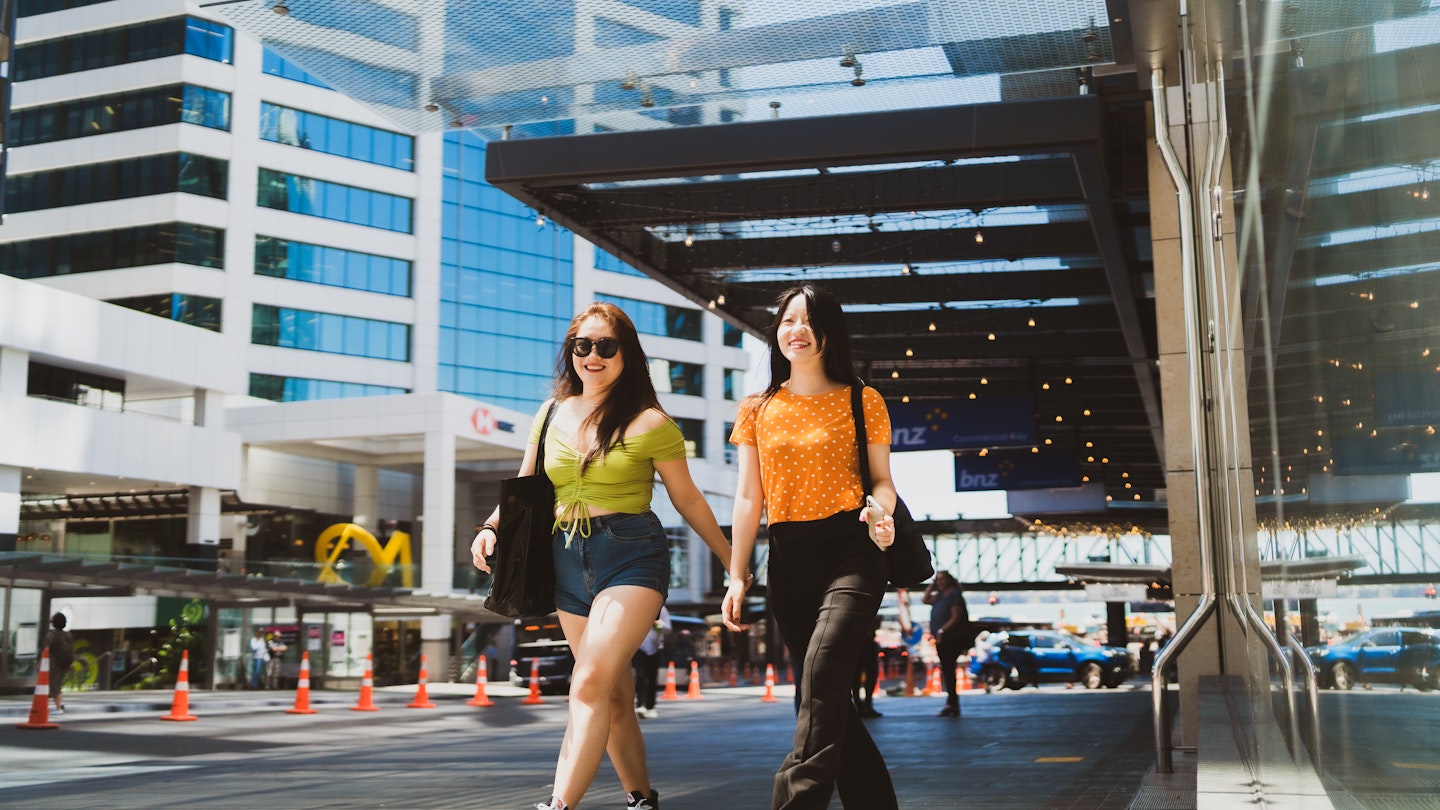
Peak UV levels can be 40% higher in New Zealand than similar North American latitudes, so sunscreen is a must-have © nazar_ab / Getty Images
While I was born and bred here in New Zealand – or Aotearoa, the country's Māori-language name – I’ve spent enough years away to understand how it’s a destination that can feel comfortingly familiar and completely strange to visitors all at once.
The butter is bright, beta-carotene yellow. Pies are filled with meat. You usually go up to the counter to pay for your meal. Never, ever sit on a table – it’s a taboo that has spread from Māori to the wider population.
But this diverse country of boiling mud pools, soaring mountains, subtropical beaches, rainforests and friendly people will make you feel – well, "sweet-as." (Yes, that means good.) Here are some things to know before going to New Zealand.
1. New Zealand’s weather may be relatively mild – but it also has the potential to be wild
An archipelago in the Pacific, New Zealand is a long, skinny country moored in tempestuous oceans heavily influenced by Antarctica. Its landmass stretches between 34 and 47 degrees south – the rough equivalent of northern Morocco to southern France – and the climate is often compared to Britain’s.
What does this all mean? The weather can turn bad quickly. It pays to pack for all seasons, with a hat and sunscreen being must-haves. New Zealand’s peak UV levels can be 40% higher than those in similar North American latitudes, thanks in part to its clean air. For some, a blistering burn can happen in minutes and will ruin your holiday for a good week or more. In summer, perhaps plan shadier activities, such as museums, for the peak hours of the day.
2. It’s okay to dress down
Casualness rules in New Zealand, even in urban areas. Depending on what region you’re in, even a wedding might see some Kiwis in jeans, their cleanest bush shirt (a tough woolen shirt) and gumboots (rubber boots) or jandals (flip flops). This is unremarkable.
Something particularly disconcerting to travelers is New Zealanders’ penchant for bare feet. When you’re out of the main cities you’ll see tough-soled Kiwis hot-stepping over bubbling tarmac and strolling through the supermarket unshod. Feel free to pack casual clothes.
3. What do you mean, there’s no bus?
Unbelievably, New Zealand’s public transport was arguably far better in the mid-20th century. But with many tram and railways ripped up for the sake of roads, the country has become very car-dependent.
With a population of only 5.2 million living on a landmass the size of Italy, car culture is proving difficult to shake. While cycling and public transport are making strong incursions, outside of Auckland there is nowhere near the density, quality, affordability and regularity of public transport you may be used to at home. Many New Zealand towns do not even have Uber or other rideshare apps.
With that being said, the country is reasonably well set up for visitors. For example, there are regular shuttle services to popular tourist destinations, such as Hobbiton and Waitomo Caves – but it pays to plan your transport well ahead.

4. Biculturalism is at the heart of Aotearoa’s culture
Unlike many colonized nations, in 1840 the British Crown signed a founding treaty, the Treaty of Waitangi with Indigenous Māori, who have lived in New Zealand since at least the 1300s. Although colonization’s effect on Māori continues to spark debate and protest, the result is that modern New Zealand is a strongly bicultural nation. Te ao Māori (the Māori worldview) is an integral part of even everyday interactions. This is evident to visitors, who have countless Indigenous-led tours, eateries and experiences to choose from.
To show respect, ask about local iwi (tribe) customs. As an example, don’t stand on the summit of maunga (mountains) including Ngāuruhoe (Mt Doom in the Lord of the Rings films) or Taranaki, if you go for a hike. As the head of an ancestor, mountain tops are regarded as tapu (sacred). New Zealand’s most famous son, Sir Edmund Hillary, may have said “we knocked the bastard off” when he and Tenzing Norgay climbed Everest in 1953, but modern travelers don’t have to.
Many place names and road signs are also in te reo Māori (the Māori language). When it comes to speaking it, Kiwis will appreciate you trying to pronounce the words as accurately as possible. ("Wh," for example, is generally pronounced "F.") An online pronunciation guide or podcast can help you with some of the more unfamiliar sounds; try Everyday Māori .
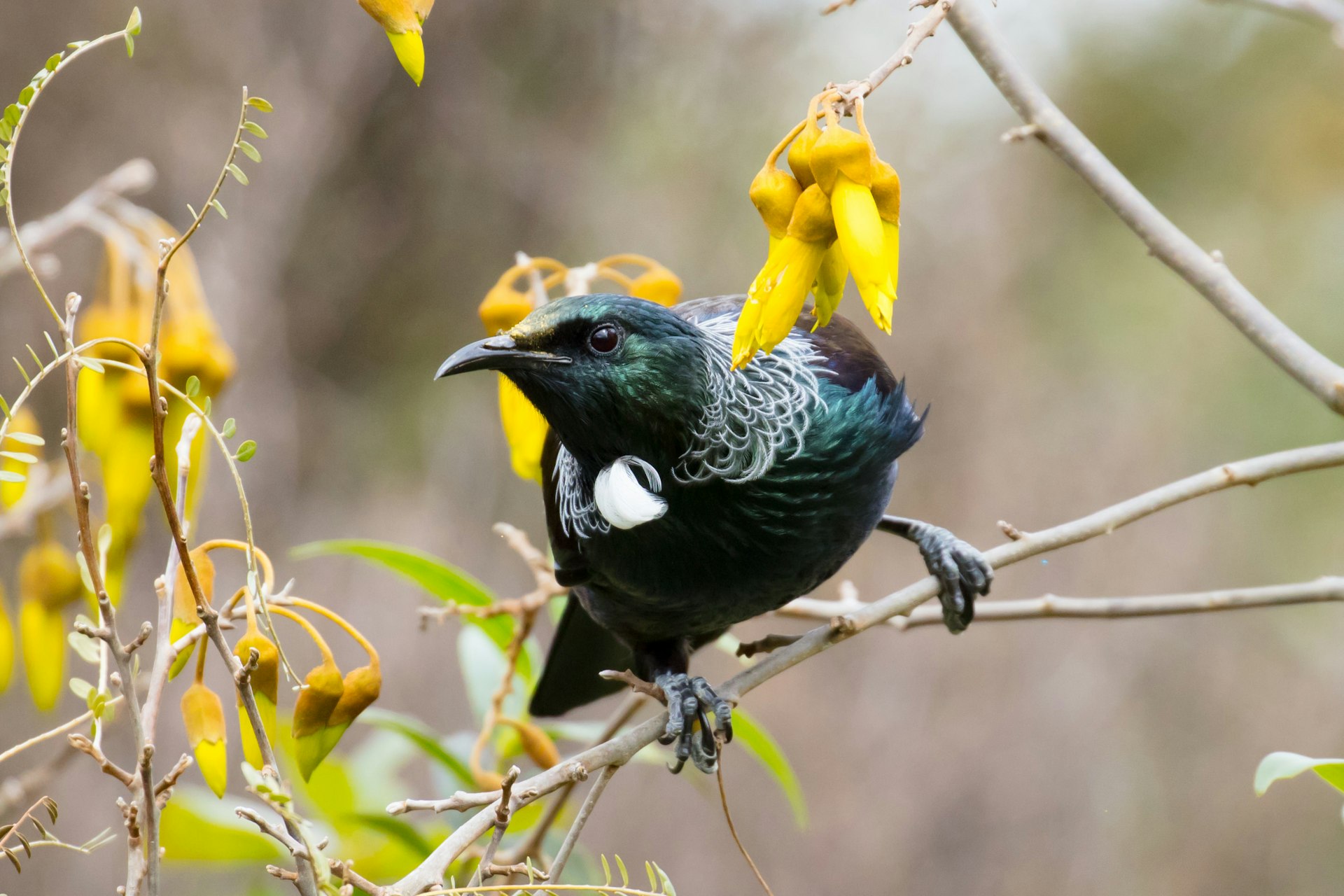
5. If you want to make local friends, ask about our birds
New Zealanders absolutely love talking about their native birds and will immediately consider you a "good sort" (a kind and likable person) if you show interest.
But prepare to settle in. From tūī, kererū (wood pigeons), pīwakawaka (fantails) or whio (blue ducks), everyone has their favorite. Conservation organization Forest and Bird even runs a hotly contested Bird of the Year competition.
We love our birds because we understand how precious they are. Many are endangered, some critically so. New Zealand was a paradise of birds before people arrived around the 1300s, bringing with them rats, pigs, dogs, stoats, mice, cats, rabbits, weasels and possums. These have wreaked havoc and sent biodiversity plummeting ; in the last 1,000 years, 40 indigenous species have become extinct. (Thank goodness early settlers did not introduce the mongoose to control the rabbit population, as was suggested in the 19th century.)
The country is currently in the first 10 years of its Predator Free 2050 strategy, which aims to wipe out as many introduced mammals as possible by 2050. It is hugely ambitious and has resulted in a massive groundswell of support as everyday Kiwis exercise their bloodlust, setting rat traps in the backyard.
As a traveler, you'll encounter many tourism operators doing the same. You can learn more about these efforts as you zipline across regenerating forests at Rotorua Canopy Tours or stay at Maruia River Retreat , which is in the process of converting to a fully electric resort powered by renewable sources. Projects are even popping up where tourists can help check traplines, such as Tongariro River Rafting's Blue Duck Experience .
Predator-free bird sanctuaries abound in many areas, including the Zealandia sanctuary in Wellington, a sprawling and peaceful city oasis where you may be lucky enough to see wild kiwi on a guided night tour.
6. ACC is a wonder – but not a replacement for travel insurance
One of the most humane things about New Zealand is its no-fault accident compensation scheme, ACC . Fall and break your leg skiing? Get a bit banged-up on a big night out? It doesn’t matter whose fault it is and that you’re a tourist; if it’s an accident, your medical care is free.
Of course, you’ll need to have your own travel insurance. There are a lot of things – such as travel delays or extra accommodation needs – that ACC won’t cover if you get injured.
7. New Zealand is generally safe, but…
New Zealand is a safe and welcoming country, but crime happens. For travelers, avoiding downtown clubbing areas after midnight is a good way to avoid most problems. Tourist vans can be a goldmine for thieves, and targeted especially when parked at freedom camping sites.
Many travelers have had an unfortunate souvenir of their time in New Zealand: a local newspaper article about how they lost everything in a break-in, ruining their dream Kiwi holiday. If you need urgent help, the emergency number is 111.


8. Pies are savory, not sweet
Kiwis love international cuisine, and you should be able to find something vaguely familiar to eat, especially in the main centers. But try a few quintessentially New Zealand treats, too. Other than the fun you’ll have browsing the supermarket and trying every block of Whittaker’s chocolate on the market, roadside eateries (called "tearooms") and cafes offer a range of snacks.
One of the most filling and affordable small meals is a savory pie, sold just about everywhere. They’re golden, crispy pastry cases with fillings like butter chicken, mince (beef) and cheese, and steak and mushroom. Hint: The best pies are made in the local bakery. To get a winner, choose pies sold in plain white paper bags (not branded plastic) and bite into it straight from the bag.
If you’re down south and spot cheese rolls on the menu, try them, too. Known as "Southland sushi," a magical alchemy occurs when white bread is spread with a mix of grated cheese, evaporated milk, onion and other flavorings, like mustard or garlic, then rolled, brushed with butter and toasted into an oozy, golden delight.
"Slices" are also popular and similar to what Americans call "bars." A cross between a tart and a cookie with a topping or two, they’re baked or refrigerated in a square tin and cut into squares or rectangles. Popular slices are peppermint, caramel (millionaire bar), tan square (caramel shortcake) and the unbeatable ginger crunch.
Lolly cake is another favorite: a coconut-malt, no-bake cookie studded with colorful marshmallow-like fruit puffs.
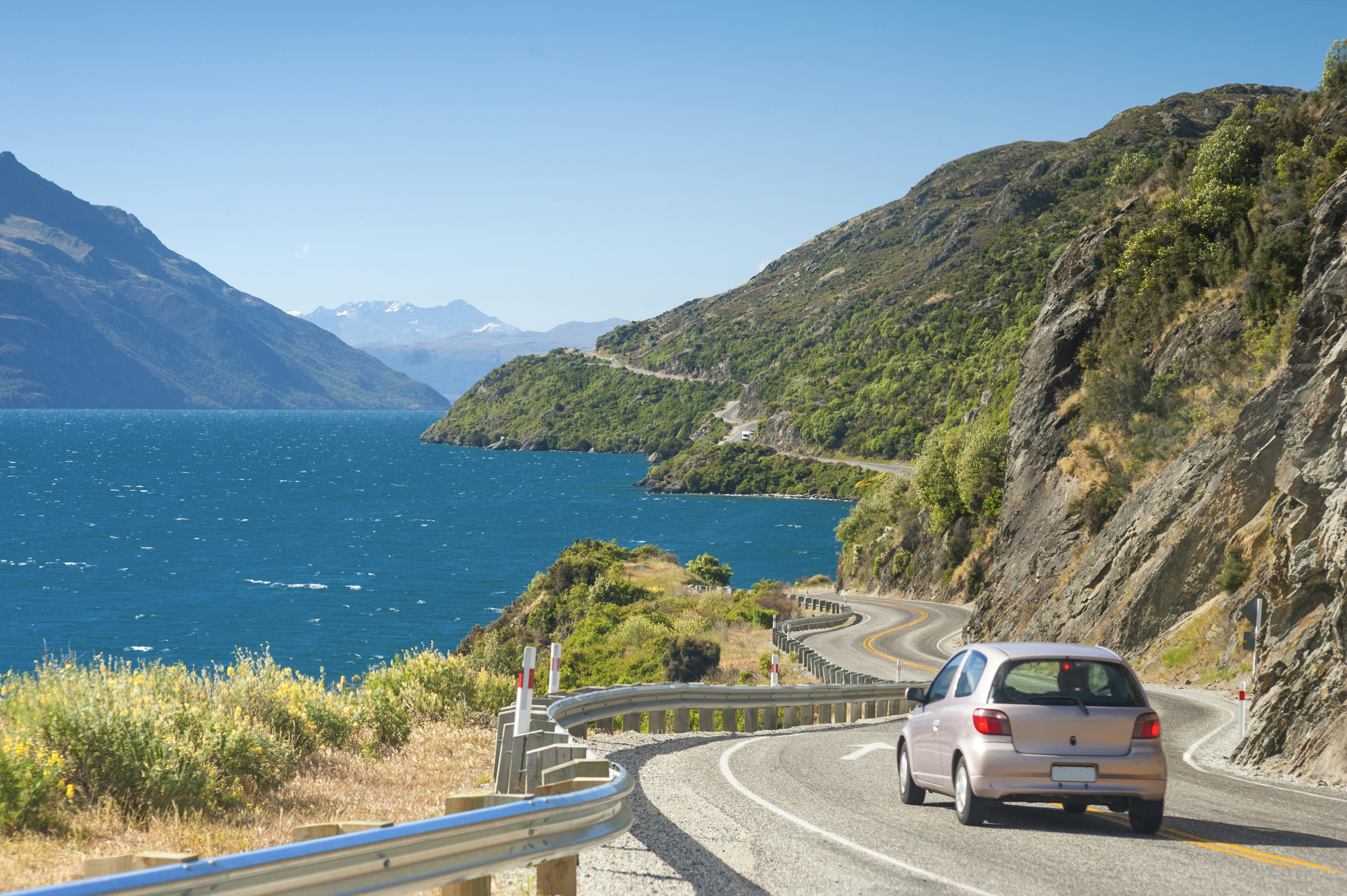
9. Driving is very different in New Zealand
Unlike the wide, multi-lane expressways of other countries, many of our major roads are only dual carriageway or a two-way divided highway. They’re often winding and hilly, with the added obstacles of construction and "slips" (a Kiwi word for landslides).
Before you head off, check NZTA for potential road closures. Take care not to plan an overly ambitious road-trip itinerary , such as driving from Auckland to Cape Reinga in a day with stops for activities along the way. That might look like five-and-a-half hours on Google Maps, but it’ll probably be slow and exhausting. There’s no such thing as setting the cruise control and chilling out, letting drivers pass on the lanes around you.
You'll need your wits about you, particularly if it is your first experience driving on the left. When everyone’s driving in single file, people get frustrated. Kiwi drivers can follow too close for comfort, pass aggressively and have a particular disdain for camper vans.
If you’re feeling nervous and notice a long line of cars behind you, you’ll be more relaxed if you regularly pull over where it’s safe and let the line of impatient locals pass. At least they’ll give a friendly toot of thanks.
Explore related stories
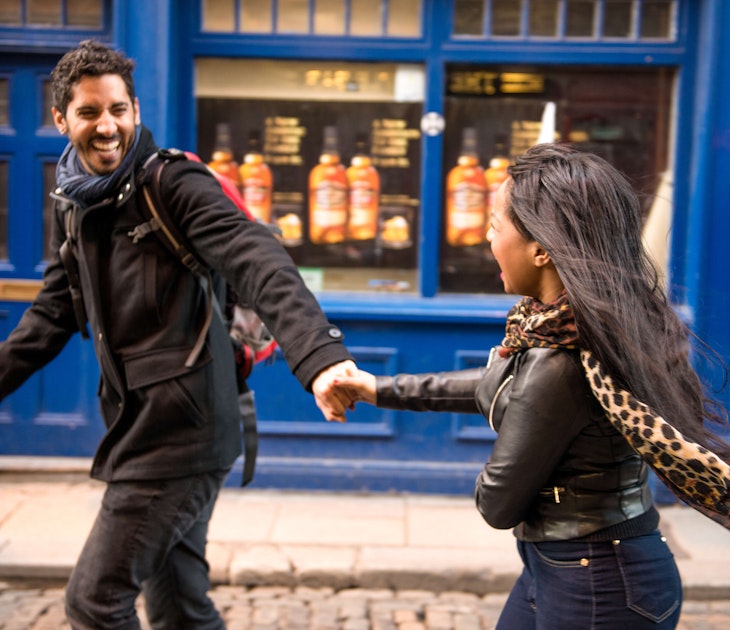
Destination Practicalities
Mar 30, 2024 • 4 min read
Who wouldn't jump at the chance to visit the Emerald Isle? Here’s how to check if you need a visa before setting off on your Irish adventure.
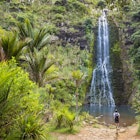
Mar 15, 2024 • 17 min read
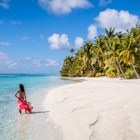
Jan 24, 2024 • 8 min read

Jan 17, 2024 • 8 min read

Jan 5, 2024 • 20 min read
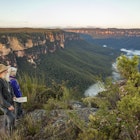
Nov 27, 2023 • 7 min read
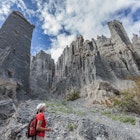
Nov 22, 2023 • 5 min read

Nov 17, 2023 • 10 min read

Oct 31, 2023 • 7 min read

Oct 22, 2023 • 7 min read

We Have Gone Tramping
Our family of three have gone to New Zealand to explore

Hiking in New Zealand without a car
New Zealand is the perfect destination stop for nature lovers and people who long for natural beauty. The island country is covered with beautiful mountains, forests, rolling fields, and much more. In spite of this, somehow New Zealand has its reputation for being costly for travelers which can be a bummer for anyone. However, this can be looked after if you plan your trip wisely. There are a plethora of ways to keep the cost down.
After all, traveling is all about gaining experiences and enjoying nature on our own.
So, without any ado let’s jump straight to the point.
Is it possible to hike in New Zealand without a car?
If only we can jot down the list of people who had done it before which is huge in numbers. So, it is possible not just to dream about hiking without a car but actually can do it for real. Hiking can be more fun if it is on our own terms not followed by fixed itineraries. There are a wide variety of places that you can travel on your own without renting a car.
Believe me, when I say New Zealand is the place that can make you fall in love with its incredible nature and diverse culture.
In New Zealand, one of the cheapest methods to get somewhere is by road and to enjoy some of the world’s most spectacular road trips. Not just this, New Zealand has a lot to offer, the place ensures that it can fulfill the needs of everyone. Whether it is pristine wilderness or multi-day adventures in rugged, the place offers a surprisingly varied selection of hiking for both newbie and pro.
What kind of walking and hiking can I experience in New Zealand?
When it comes to hiking, New Zealand has a lot to offer, it has a lot of tracks to wander. Not just this, it has an abundance of hiking choices to go with all levels of fitness and experiences.
- Try a short walk or day hikes – the very first on our list is a short walk or day hikes. The beauty about this is it gives you an opportunity to get to know New Zealand better. Mostly preferable for those who love hiking but also want it to end soon. The only prerequisite here is time, if you have enough time and don’t want to carry a heavy backpack for long then you can definitely give day hikes a try. Now, you must be wondering about getting lost then the answer is not to. All these tracks are signposted and well known. Plus, you can carry a map of the place.
- Multi-day walks are another great option – the next on our list is multi-day walks which involve hiking for days independently or with an expert. It involves overnight staying in nature. Such hikes will give an opportunity to see and feel the raw nature. It gives a sense of deep exploration.
- A great walk is well known among travelers – The Great Walks is well known for its cultural significance, beautiful scenery, and easy accessibility. If you want to enjoy the great walks in New Zealand, then the best time to experience them is in October and April. The walk can be challenging and fun all at the same time. The accommodation involves staying in huts with flushing toilets, cooking gas, and other things.
- Going for a guided walk seems reasonable – independent hiking offers freedom while guided walk makes hiking experience knowledgeable and worth remembering. During this, you will come across many facts and natural wilderness. Also, it is well guided and organized. The local guide enriches the whole hiking journey with stories and real experiences.
Essential things you keep in mind while hiking in New Zealand
An unplanned trip can be fun for a while but knowing everything in advance is a blessing. There are certain essential things you must keep in your mind while hiking. Here, I have hunkered down some points
- Always plan everything – as I have mentioned earlier unplanned trips can create a lot of trouble. So, my advice here is to plan everything. Planning is like giving a thought to something. It gives you a brief idea about everything in advance so in case things don’t go by plan then you must come up with some backup plan for it.
- Keep your family or friends posted about the places you are visiting- it is the most crucial point to always keep your friends and family updated about the place you’re visiting. It doesn’t matter whether your trip is short or long, safety is always first. Not just inform them but provide every little like what transport you’re taking, where you’re staying and all.
- Know the climatic condition of the place you’re visiting – weather conditions will give you heads up about everything. In case if you are allergic to any weather it will help you in staying top of it. It will also support you in packing according to the climatic conditions. If you know about the weather then you will wear clothes, keep medicines, etc accordingly.
- Learn basic first aid – learning a basic first aid is a lifetime skill. In times of crisis, you can only rely on yourself so knowing basic first aid is a must.
- Keep your trash with you – in other words, don’t leave anything behind. Always throw trash in dustbins or if not available then carry it with yourself until you find trash bins.
- Drawing a limit or boundary is important- it is important to be aware of what you’re capable of doing. Hiking is not a time to experiment with yourself. If you know that you can’t do it or it is out of your reach then my suggestion here is to not try it.
- Be a sport – it means always help out your partners and friends while hiking.
- Stay alert all the time – last but not least, one of the best hiking skills is staying alert all the time. So, always be alert, cautious, and proactive.
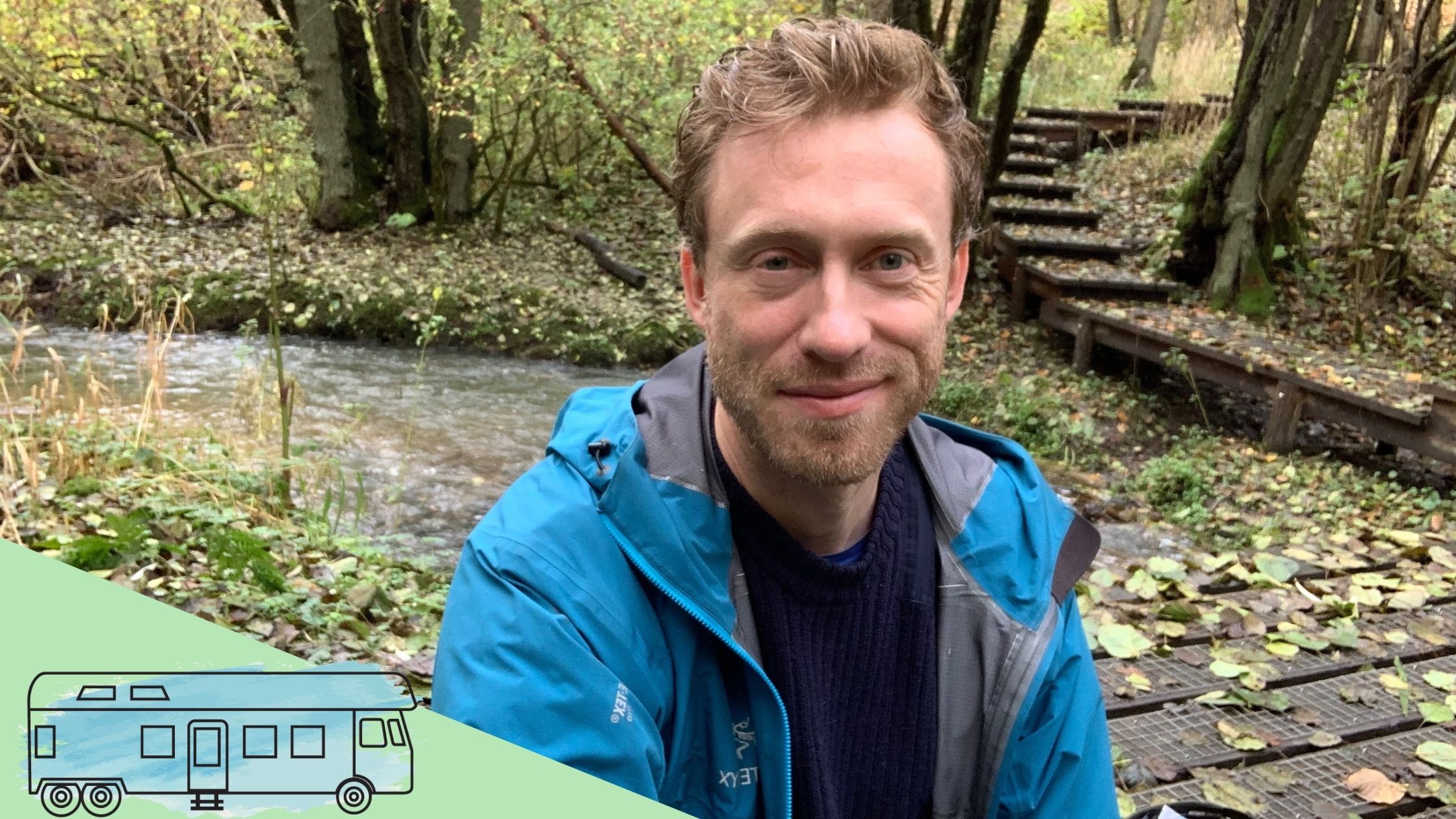
What to pack for hiking in New Zealand?
Let’s put a drape out of the biggest dilemma which is what to pack for hiking. It might seem vague to you but people literally forget about it. The very first thing to pack all the essential elements like medications, first-aid kit, flashlight, bug spray, hiking poles, hand sanitizers, wet wipes, and much more.
The next thing to pack is enough food that can last for long. While packing food don’t forget to pack protein supplements. Energy bars, peanut butter, muesli bars, etc are great options.
The equipment you need to carry while hiking is water bottles, a sleeping bag, tent, inflatable pillow, camping sport, headlamp, etc.
Safety measures should not be kept aside, so it is important for you to carry a knife and other sharp objects for your safety.
Lastly, always wear hiking boots, sunglasses, and hats. The bonus advice here is always packed according to the climatic conditions. After all, you don’t want to be sorry after visiting the place.
Easy hikes to do in New Zealand
Accomplishment is necessary for every field whether you’re running a business or traveling on your own. At the end of the trip, you want yourself to be praised that you did it. Accomplishment or achieving things is a must for humans to celebrate each and every moment.
However, hiking or tramping can be a little tough for someone who is not much sporty or active. To be very honest, it can be a tiresome process for who is not the hardcore hiking type. Well! Guess what if you planned to go for beautiful, easy, and enjoyable hikes, things might be different for you.
Keeping that in mind here I am going to tell you the easiest hikes to do in New Zealand without any trouble.
- Queenstown track – it is the steepest one as you have to climb 500 km above to witness the amazing views of Queenstown and Lake Wakatipu. But the walk involves the attractive pine forest. The trek takes around 2 hours to complete which I guess one can do easily.
- Wanaka track – if you long for mountains then this track is definitely for you. The track is semi steep. The place is kinda isolated and peaceful which makes it the perfect spot for everyone. While hiking you might notice some localities walking their dogs.
- Aoraki Valley Track – if you have 3 hours then it is enough for this track. It is one of the most beautiful sceneries in the country. The trail has three swing bridges which will give you a breathtaking experience. Not just this, it is covered with mountains, lakes, and rivers. And this hike is less tiring as it does not have any steep trail.
All these are easy hikes, so my advice here is to go for it and take as much as possible time to enjoy nature at its best.
How do you get around in New Zealand?
The very first question that arises in the mind of a solo-traveler or the one that is tight on a budget is can you get around New Zealand without a car?
Now, if you’re not renting a car how would you visit places in New Zealand? Worry not, as there are many other options available that will not put a burden on your pockets. Also, you will enjoy the New Zealand nature at its best while doing this.
- Rent a campervan – renting a campervan or moving trailer seems a good option when you are trying to save a little bit of cash. Not just it is budget-friendly but provides you absolute freedom. Campervan culture is quite popular in New Zealand which is a reason why a huge variety of campervan is available at cheap prices.
- Book a seat in national coaches – the national coaches bus service in New Zealand is not only cheap but also safe. It is the most affordable public transport service. Plus, if you’re lucky enough to get discount or bus passes then you can save a whole lot of money.
- Explore hop-on hop-off bus – it is widely used by travelers. Most of the bus owners allow hop-on hop-off services. The bus followed the set route, the only difference is they allow passengers to hop- off at certain locations for as long as they want. After the passenger is done exploring the place, he/she can take another bus at a later date. It seems more convenient and pocket-friendly to many travelers.
- Bus-touring can be fun – bus tours can actually be fun if you love traveling with peoples. With a limited amount of time, you can cover as many as possible destinations on a bus tour only. The reason for the same is they had planned everything before. The tour is well organized with accommodation and different activities.
- Hitch-hiking is a go-to move – if you put risk factors aside for a while then hitch-hiking is a go-to move for every traveler. There are various perks like saving money, meeting new people, and getting to know more about the place from the localities. However, well-being is everybody’s priority which is a reason why we can’t unsee the risk factor. But, if you are cautious enough then you can give hitchhiking a try. The other disadvantage is hitch-hiking can be time-consuming.
That’s all! Here I have provided the full disclosure of hiking in New Zealand without a car. It is true what they say about New Zealand, it is one of the spectacular places to visit in the world before dying. The wilderness of New Zealand is breathtaking. So, whatever your budget is, you can always make an exception when it comes to enjoying nature to its fullest.
Also, a planned or organized trip can do wonders. Just make sure of everything and you’re good to go. And for those who are traveling solo, New Zealand proffers the ultimate freedom.
This is all we have, for now, let us know in the comments section all about your hiking experiences in New Zealand.
Till then, happy tramping!
- Work With Us
- Blogging Bootcamp

- Van Conversion Academy
- Campervan Shop
- Campervan Rentals
- Plan a Trip
- Itineraries
- Destinations
- Responsible Travel
- Family Travel
- Budget Travel
- Scuba Diving
- Travel Credit Cards
- Digital Nomad
- Teach English Abroad
- Blogging Resources
- Income Reports
- Travel Shop
- Meet Katie & Ben
- About Two Wandering Soles
- Personal Stuff
- Portfolio & Press
How to Plan the Perfect New Zealand Itinerary
Home » Blog » New Zealand » How to Plan the Perfect New Zealand Itinerary
With miles of jaw-dropping landscapes and experiences, it can be hard to decide how to plan for a trip to New Zealand. We’re walking you through how to put together the perfect New Zealand itinerary based on our travels.
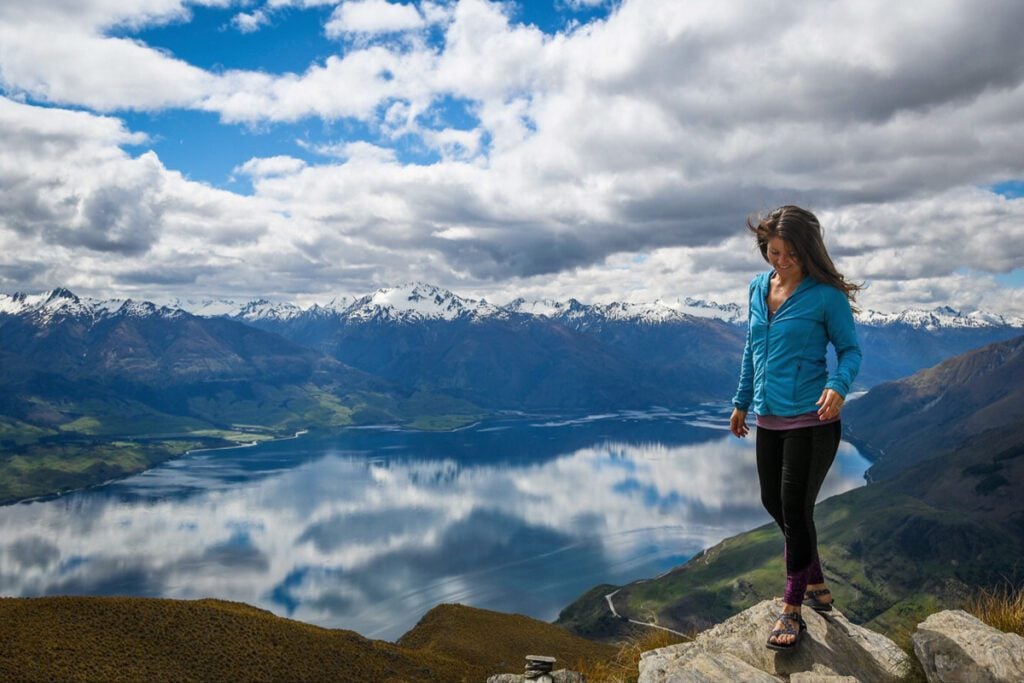
New Zealand is truly one of our favorite countries to explore. And if you know me, you know how hard it is for me to choose favorites.
The relatively small island nation is home to an astounding variety of scenery: lush forests, snow-capped mountains, volcanoes, ancient glaciers, stunning coastlines, rugged fjords, and rolling farmland.
There are tons of activities to get your adrenaline pumping in the “Adventure Capital of the World”. You can go caving, hiking, skydiving, skiing, climbing, bungee jumping, jet boating, swimming with dolphins, camping… just to name a few.
But there are also plenty of opportunities to slow down. On our trip, we soaked in hot springs, sipped wine, sampled the local cuisine , slept in mountain huts, and relaxed on the beach.
We spent 5 weeks traveling around New Zealand in a campervan, and we’ve been lucky enough to explore a lot of what this country has to offer!
In this article, we’ll walk you through exactly how to plan the perfect New Zealand itinerary, from how much time you’ll need to where to go and how to spend your days.
New Zealand itinerary contents
- Where to go
- Type of travel
- Where to start/end
- How many days
- Typical Budget
- Accommodation
- Perfect New Zealand itinerary
- Booking your trip
- Itinerary planning resources
Want to save time and energy on planning?
If you want to save yourself the hours of research and planning, we’ve got you covered with our ultimate done-for-you New Zealand Itinerary . This itinerary includes a lot of what you’ll find in this article, plus so much more!
We took our 5-week travels and condensed it down to 30 days (because so many people wanted a 1-month route) that hits the top destinations on both the North and South Islands in one epic road trip.
We’ll send you our complete 1 month itinerary, filled with tips and advice. Just click below to get your 30-day New Zealand road trip itinerary today!

Where to go on your New Zealand itinerary
From the vibrant cities and geothermal wonders of the North Island to the wild fjords and towering mountains of the South Island, below is a list of places to consider visiting on your New Zealand itinerary. We’ve included the country’s main highlights as well as some underrated gems not to be missed.
(Are you skipping the North Island all together? Jump down to the South Island .)
North Island
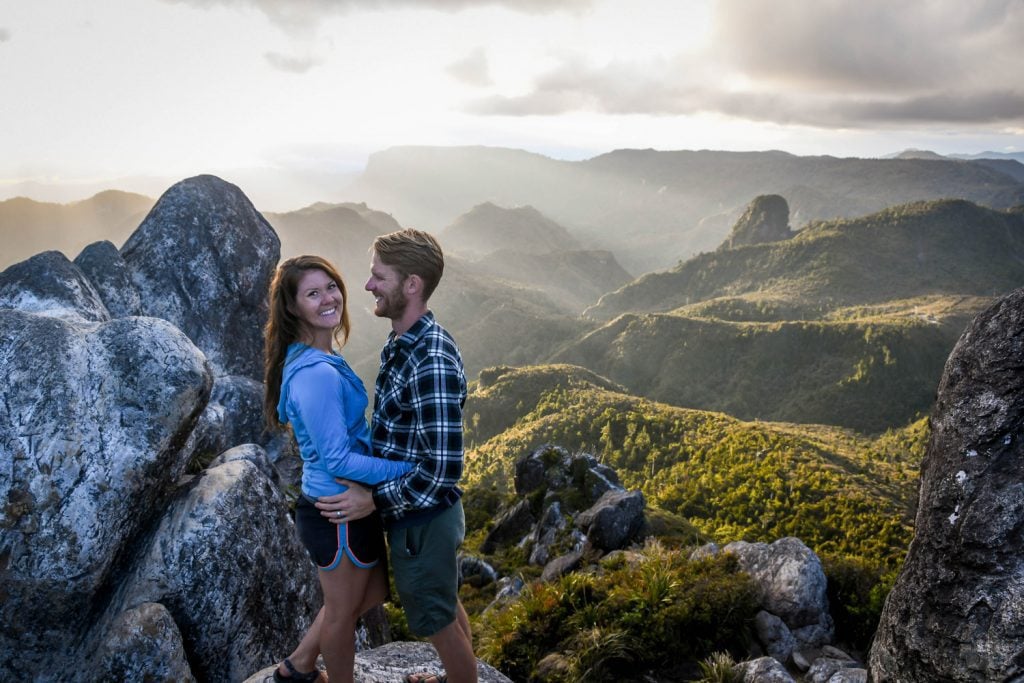
With thermal hot springs, white sand beaches and enough volcanoes to make your head spin, New Zealand’s North Island is not to be overlooked. Though it is often outshined by its more mountainous neighbor to the south, we found the North Island to be quite enjoyable.
If you’re looking for a shortcut, we created a perfect New Zealand North Island itinerary that brings you to all the major highlights, as well as hidden gems off the typical tourist path.
We’re even sharing where to stay and what to eat in the North Island, so you have all the information you need right at your fingertips!
Below we’ve listed all of the top places to consider visiting on the North Island of New Zealand.
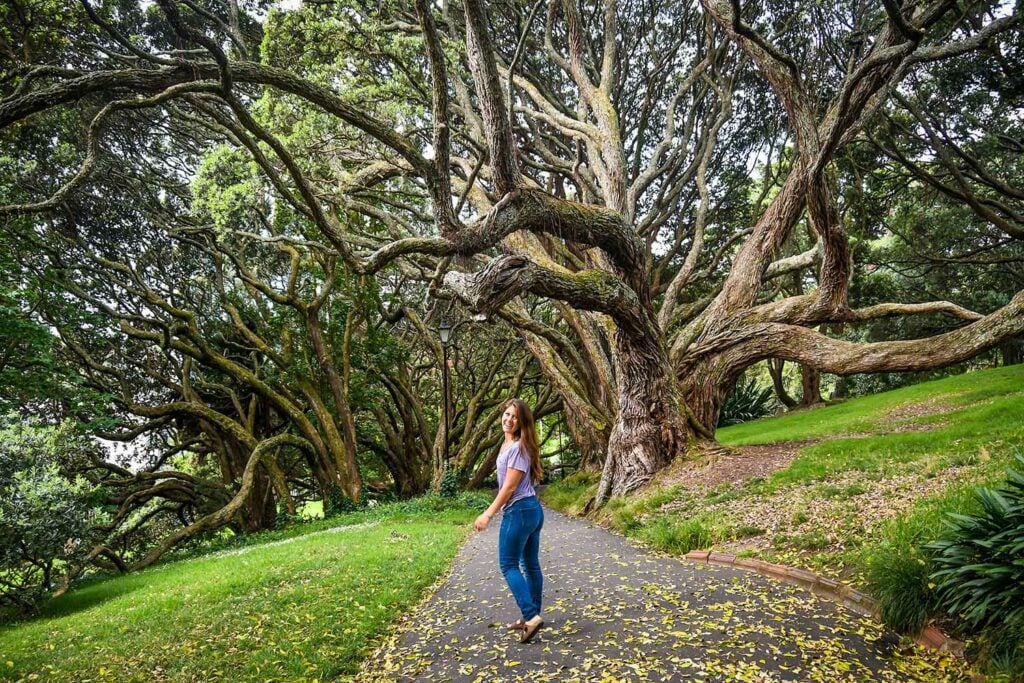
Due to its large international airport, Auckland is the entry point for most visitors to New Zealand. It’s also the country’s largest city, with more than a third of the national population residing here.
This “City of Sails” is a dynamic, multicultural metropolis with a buzzing waterfront, lots of green space, and a diverse dining scene. In addition to all the fun things to do in Auckland , it also makes a great base for some of the North Island’s best day trips.
Waiheke Island
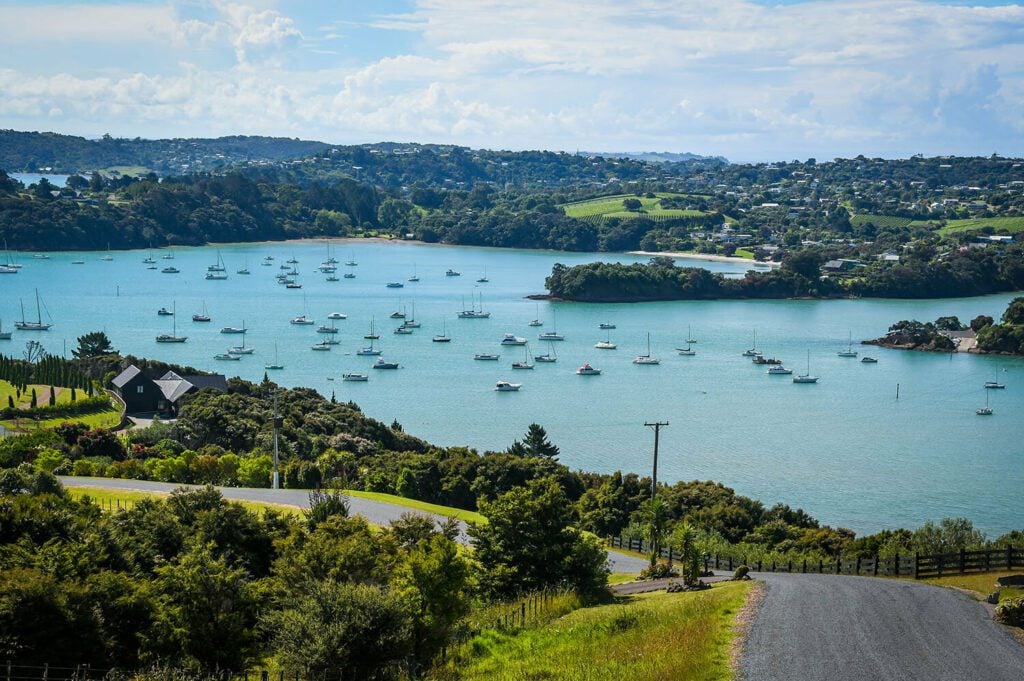
Just a short ferry ride from Auckland, Waiheke Island is a captivating gem known for its world-class wines, which visitors can sip while taking in the picturesque vineyards and olive groves that dot the landscape.
Nature lovers can explore pristine beaches, lush forests, and rugged coastal cliffs , while cultural connoisseurs browse art galleries, boutique shops, and fine dining establishments.
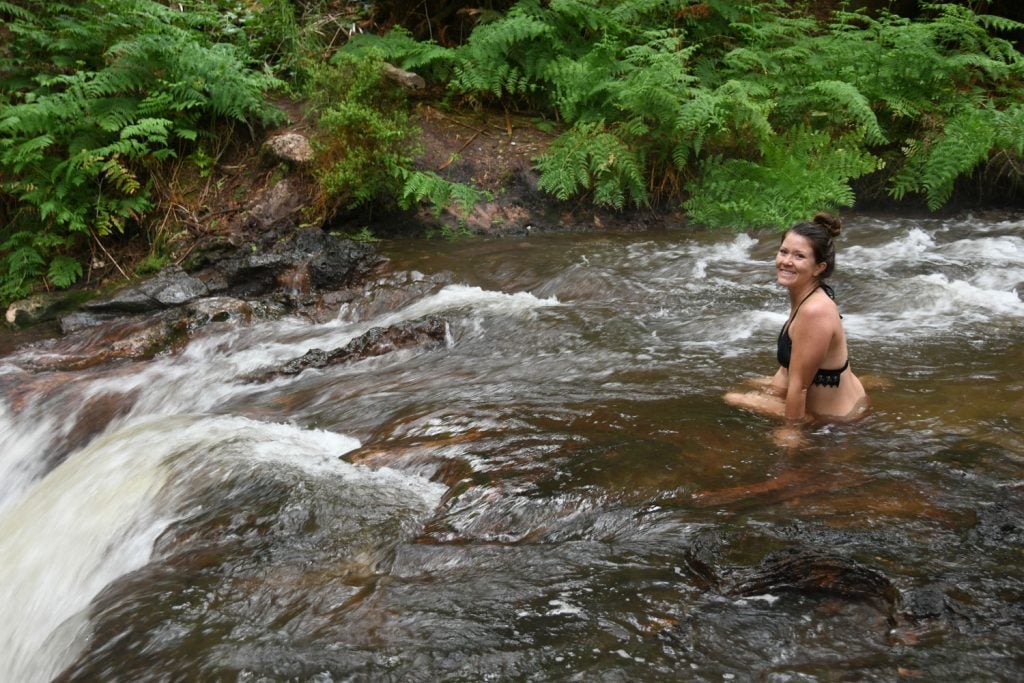
This geothermal wonderland of Rotorua boasts bubbling mud pools, steaming geysers, and colorful mineral-rich hot springs alongside lush forests and serene lakes. It is also home to the Whakarewarewa Living Maori Village and offers cultural experiences, including traditional Maori performances and cuisine.
Coromandel Peninsula
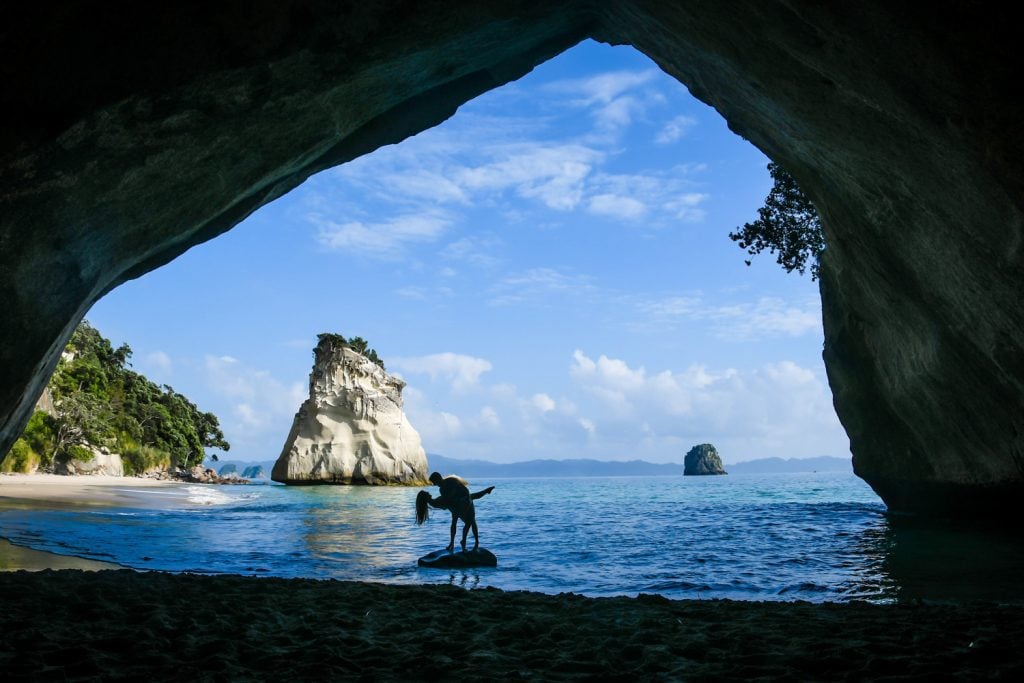
A coastal region with a laid-back vibe , the Coromandel Peninsula is home to some seriously bucket list-worthy experiences. Trek or kayak to the marine reserve at Cathedral Cove, dig your own personal hot tub at Hot Water Beach, or kick back in the charming seaside towns of Whitianga and Coromandel Town.
Mount Maunganui
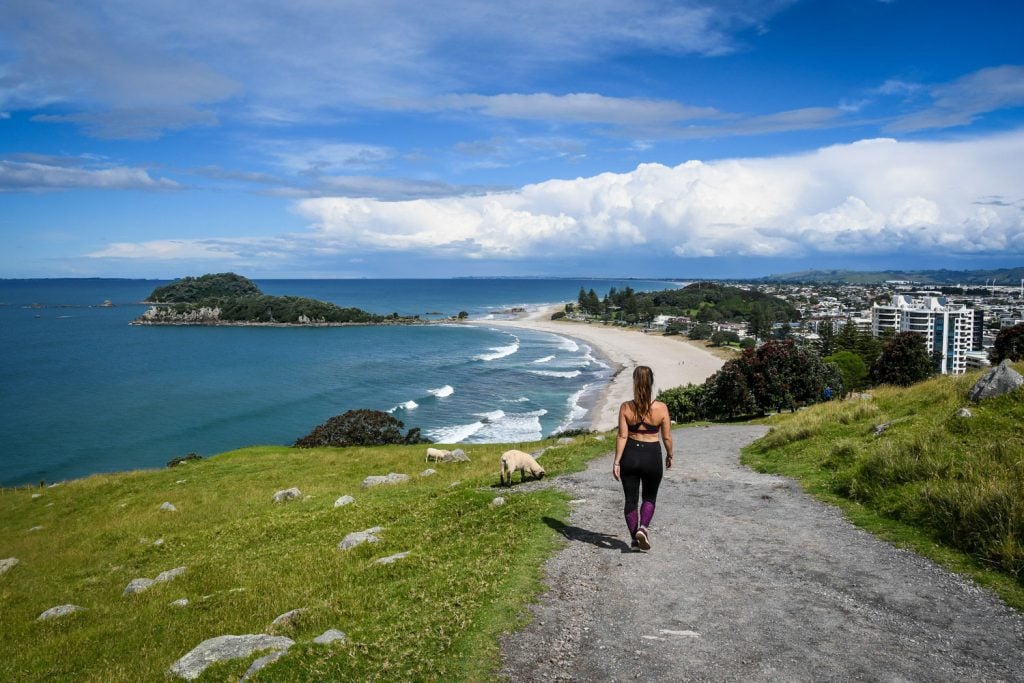
Located in New Zealand’s Bay of Plenty, Mount Maunganui is a dreamy destination for hikers, surfers, and beach bums alike. Summit the iconic Mauao, an extinct volcanic cone , for panoramic views of the surrounding land and seascapes.
Bay of Islands
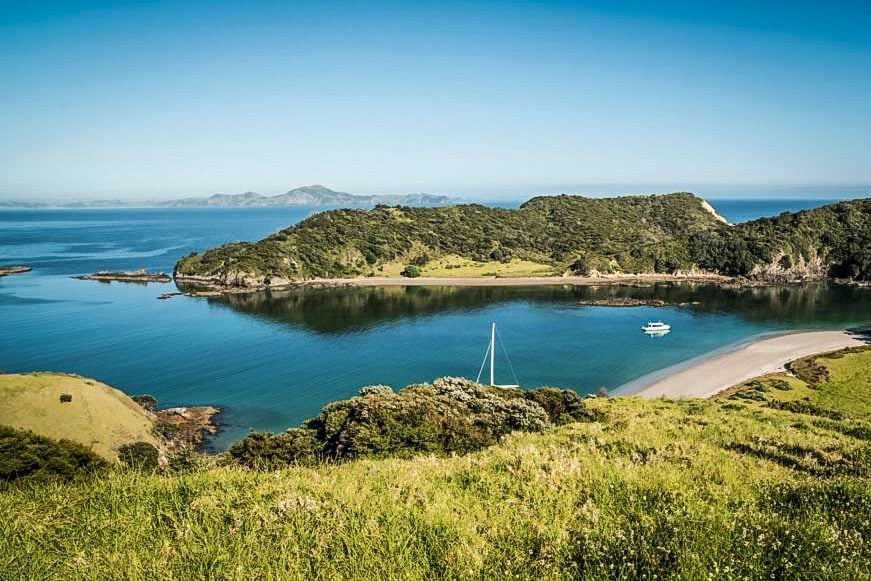
The 144 islands that make up this subtropical region are full of cute seaside towns and marine wildlife . The Bay of Islands is also historically significant, as this is where the Treaty of Waitangi (New Zealand’s founding document) was signed in 1840.
Cape Reinga
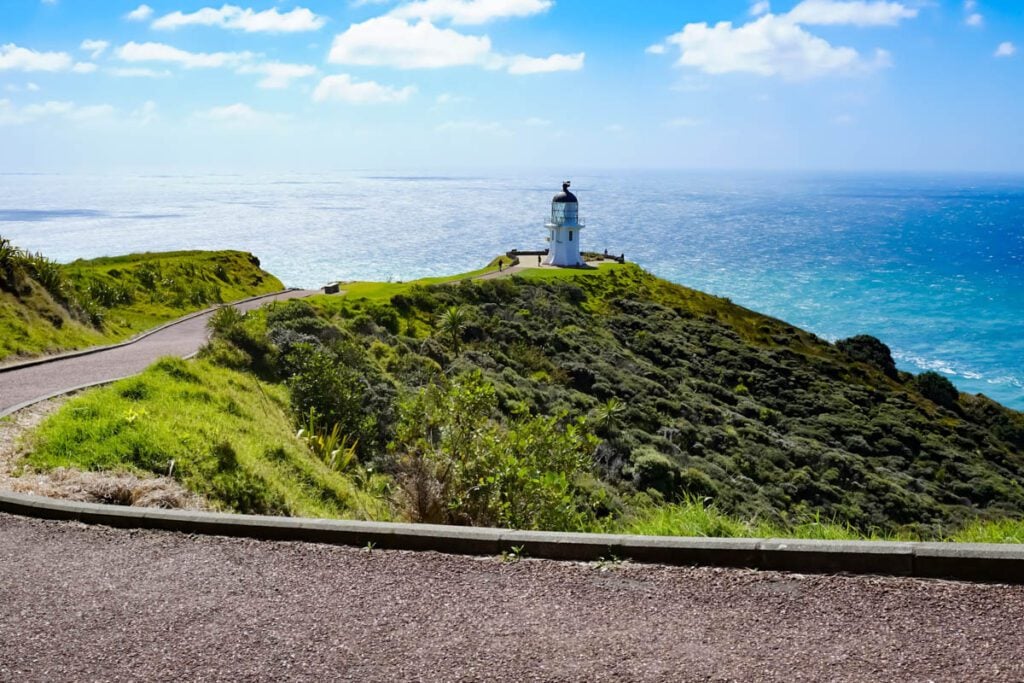
The Tasman Sea meets the Pacific Ocean at the northern tip of the North Island. The mesmerizing collision of currents makes it easy to see why Cape Reinga is a site of deep spiritual significance in the Maori tradition.
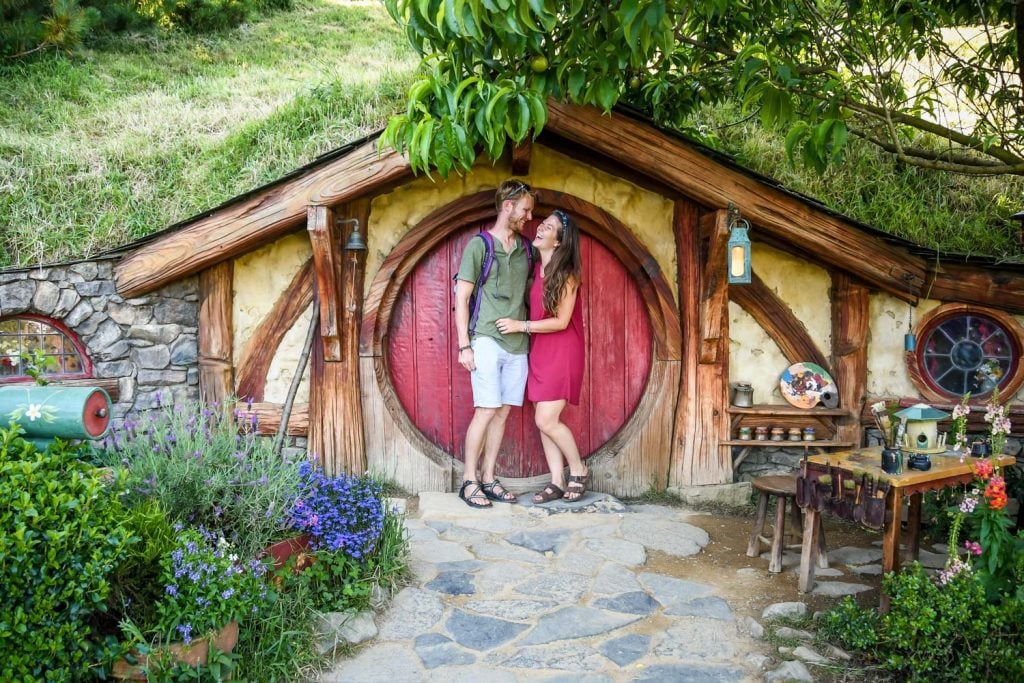
If you haven’t heard of Hobbiton, you may be living under a rock (or a hill!)… The Lord of the Rings film set is one of New Zealand’s most popular tourist attractions, complete with life-sized hobbit holes , magical gardens, and the iconic Green Dragon Inn.
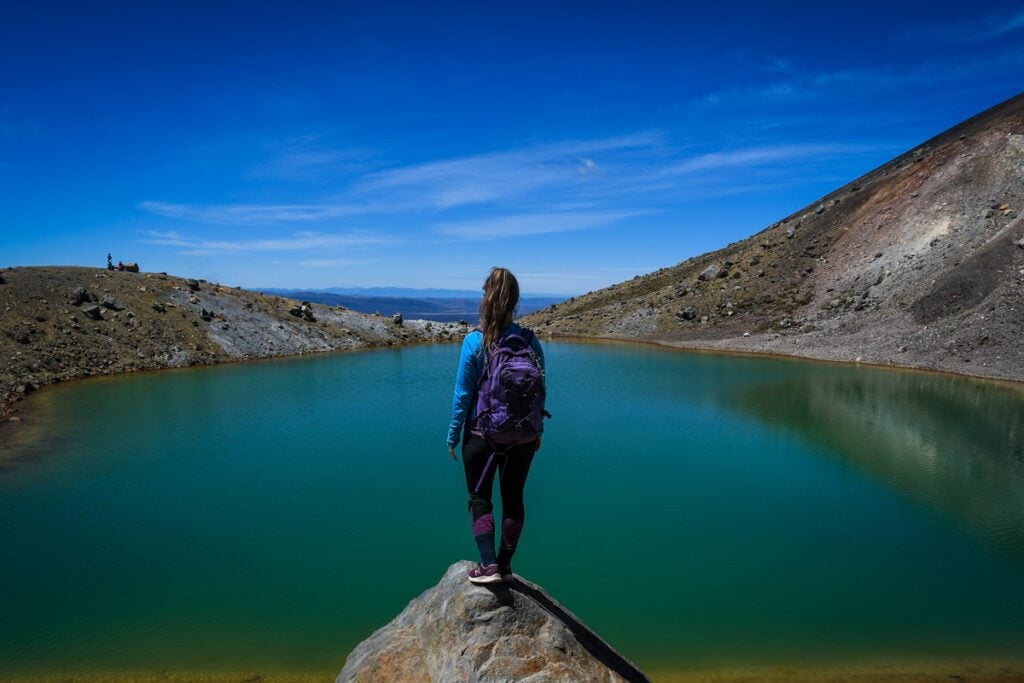
Nestled in the heart of the North Island’s volcanic plateau, the deep blue waters of New Zealand’s largest lake provide a scenic backdrop for swimming and boating. On the north shore of the lake, the town of Taupo serves as a gateway for Tongariro National Park, home to New Zealand’s best day hike .
Hawke’s Bay
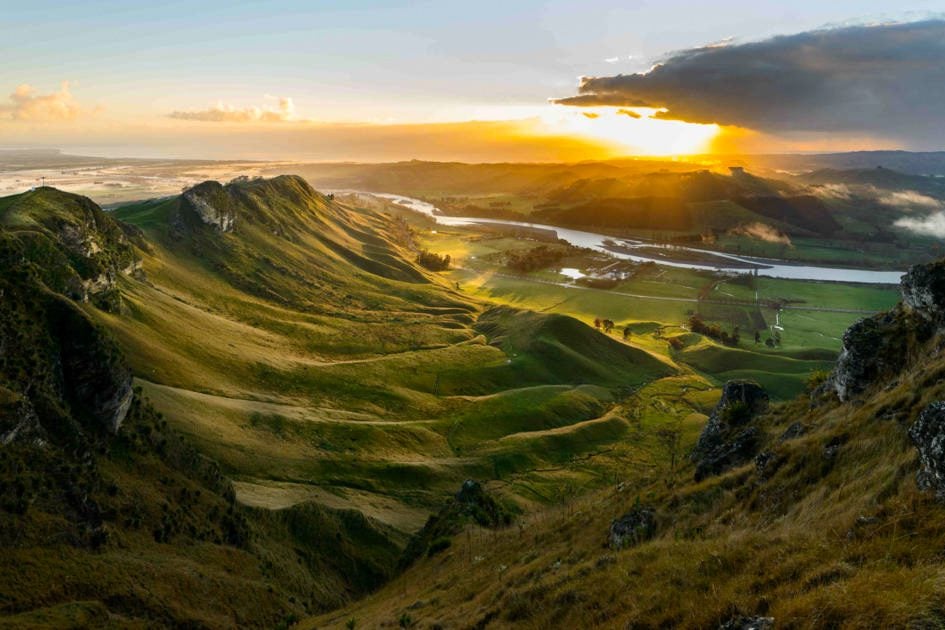
Hugging the North Island’s east coast, the region of Hawke’s Bay is known as “New Zealand’s Food and Wine Country” for good reason. With 200+ vineyards and 70+ wineries, Hawke’s Bay is one of the Great Wine Capitals of the World.
Not a fan of vino? You won’t be left wanting for other choices – craft beer, distilleries, fresh juices, cafes, and some of the country’s best restaurants – you’ll find it all in Hawke’s Bay.
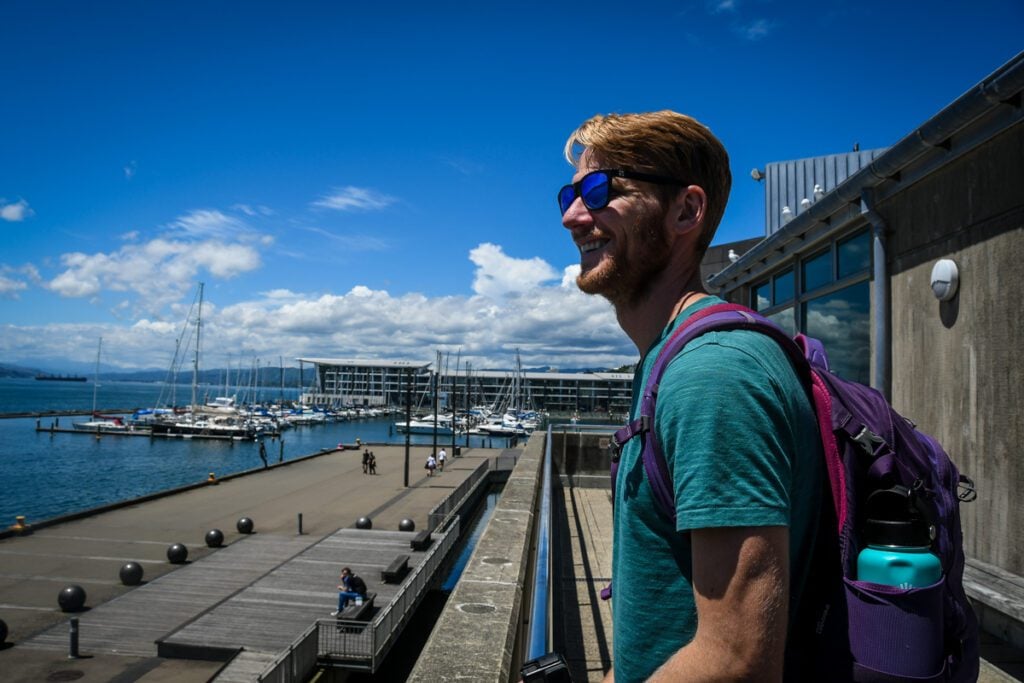
New Zealand’s capital is a compact but thriving harbor city at the southern tip of the North Island. Caffeine fiends (like us!) will enjoy the city’s famous coffee culture , while foodies (also us!) can indulge in an eclectic dining scene .
There are plenty of opportunities for cultural immersion in the urban hub with museums, galleries, theaters, and live music venues, as well as chances to explore the city’s natural surroundings.
Read more in our Wellington Travel Guide .
South Island
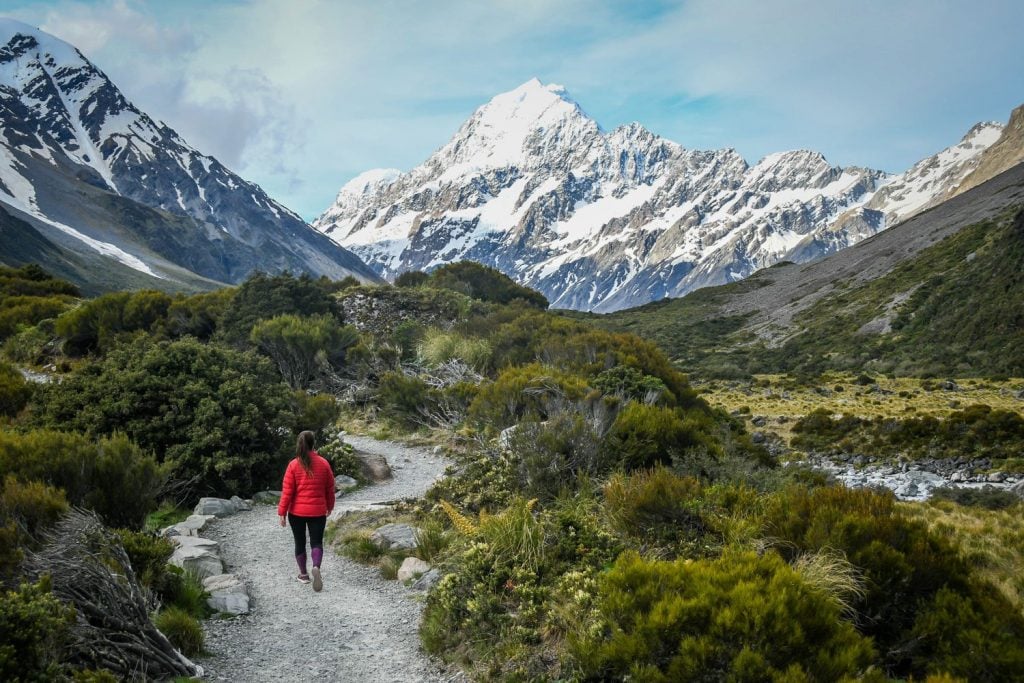
With picturesque fjords, snow-capped mountains, temperate rainforests, and black sand beaches, New Zealand’s South Island is a nature-lover’s paradise.
We’ve created an action-packed 2-week South Island New Zealand itinerary that hits the major highlights and gets off the beaten path.
We even included tips for altering it to fit a shorter trip, and recommendations for what to see if you have more than two weeks to explore!
Below are some of the places we’d recommend including in your travels on New Zealand’s South Island.
Christchurch
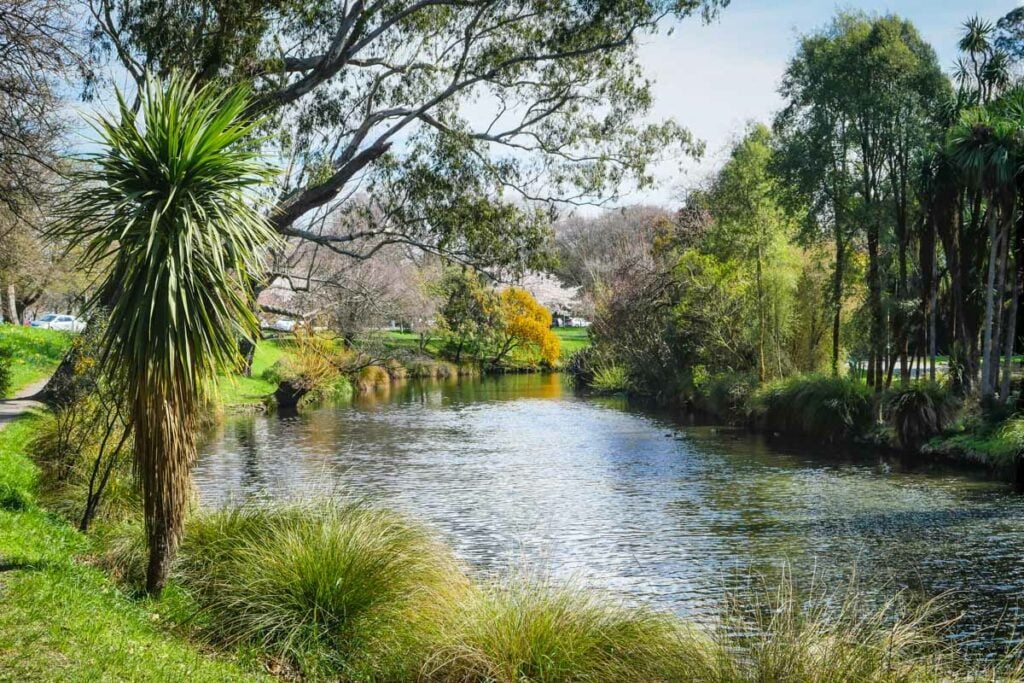
Known as the “Garden City” for its parks, green spaces, and famous Botanic Gardens , Christchurch is a lively city with a buzzy vibe.
Rebuilding efforts following the devastating earthquakes of 2010 and 2011 focused heavily on environmental initiatives and Christchurch has since become a shining example of innovative urban planning and sustainability .
Lake Tekapo
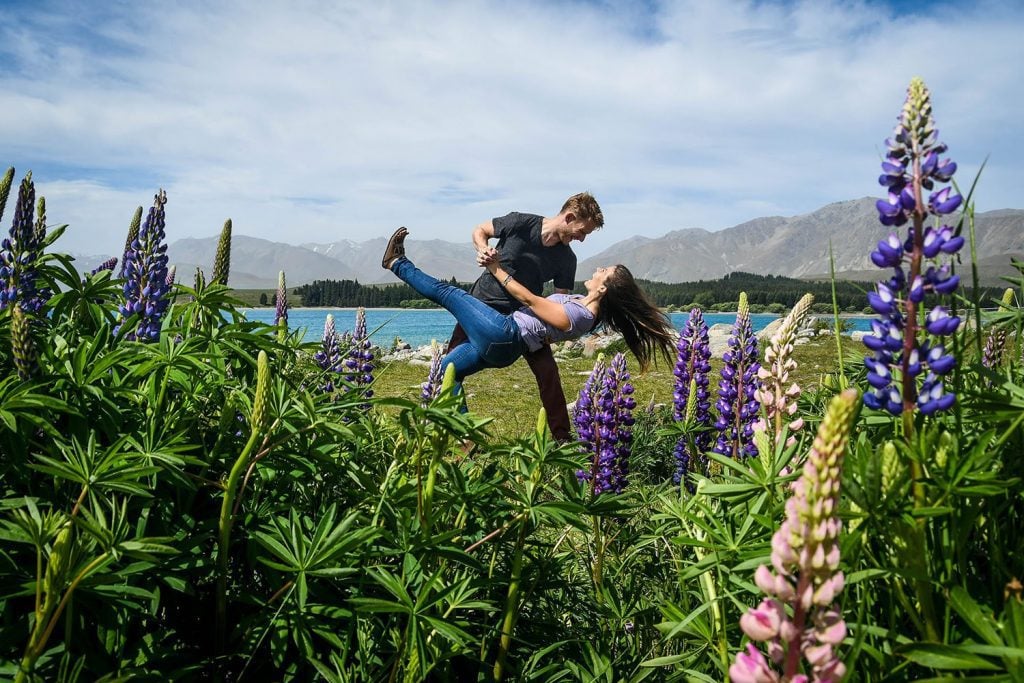
Situated in a UNESCO Dark Sky Reserve and surrounded by the rugged Southern Alps, Lake Tekapo offers a tranquil escape on the South Island. With turquoise glacial waters by day and dazzling star-filled skies by night, the scenery at Lake Tekapo is nothing short of breathtaking.
Lake Pukaki
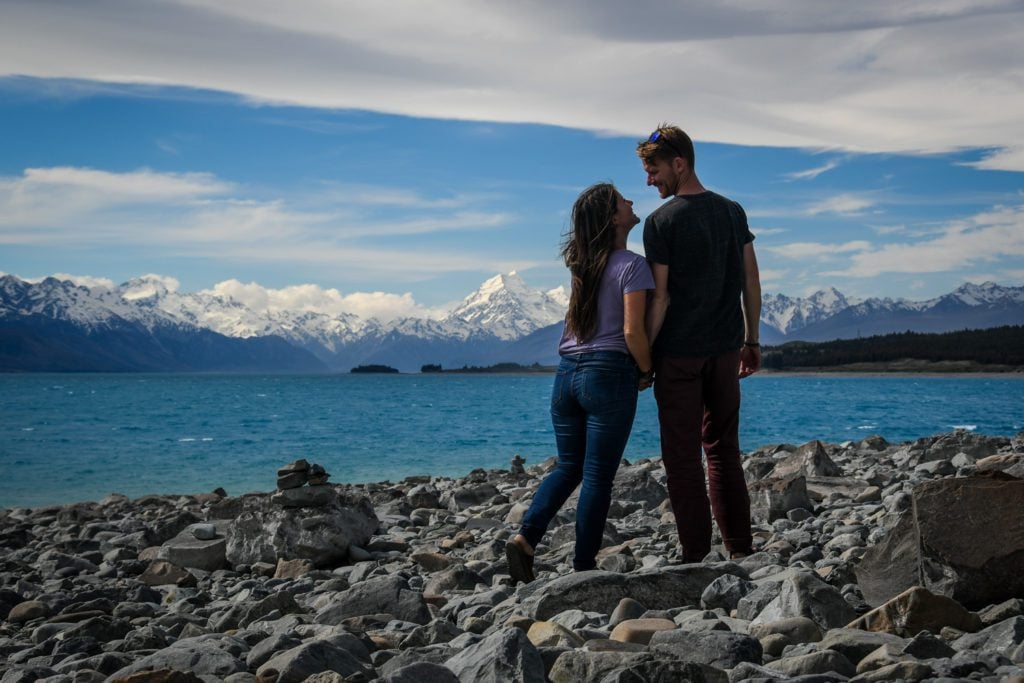
Another stunning alpine lake, the vivid turquoise color of Lake Pukaki is caused by “rock flour” suspended in the meltwater from the Tasman and Hooker glaciers. Its postcard-worthy surroundings and proximity to Aoraki Mount Cook National Park make Lake Pukaki a must-visit destination for nature lovers and outdoor enthusiasts.
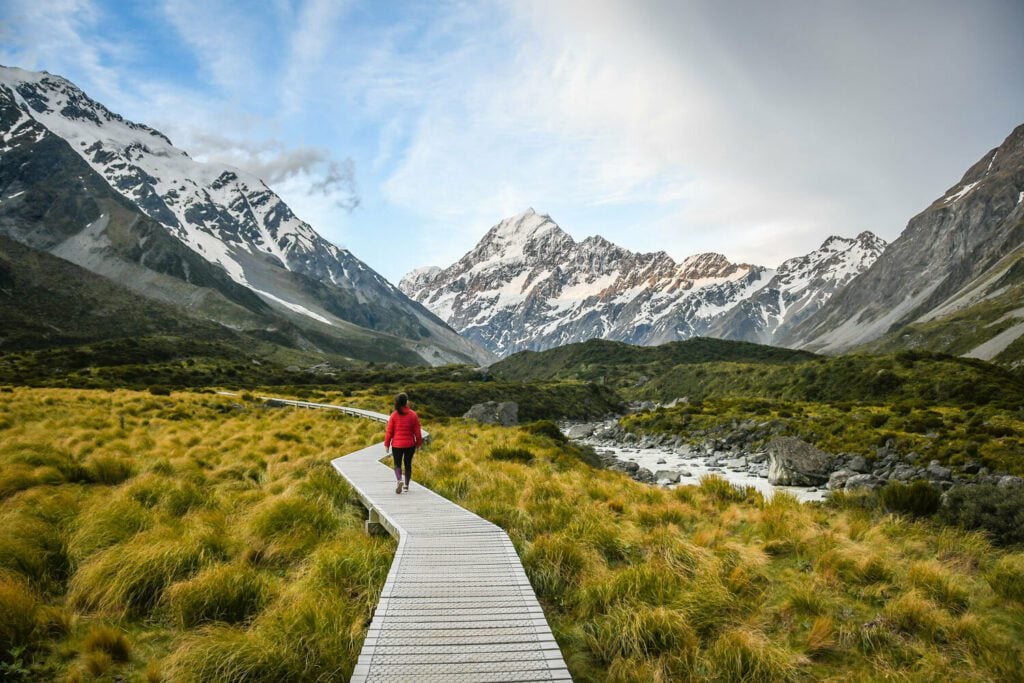
At 3,724 meters (12,218 feet), Mount Cook is New Zealand’s highest peak and the crown jewel of Aoraki Mount Cook National Park. It’s a haven for hiking and mountaineering; in fact, the majestic peak famously aided Sir Edmund Hillary in preparing to summit Everest. But don’t worry, you don’t have to be a legendary mountain climber (or even a hiker) to enjoy the park’s breathtaking glacial vistas and alpine scenery.
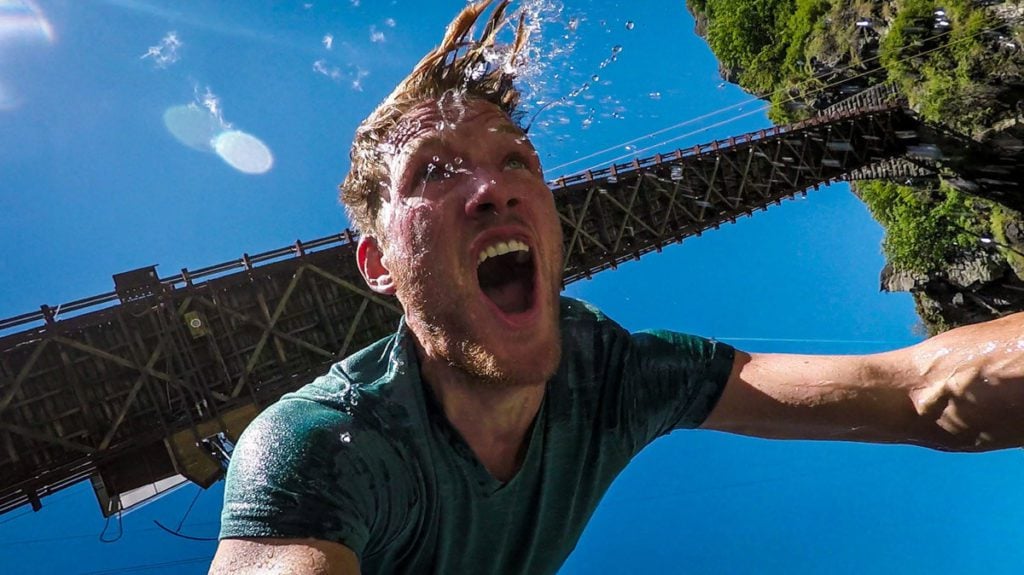
Not only is Queenstown credited as the birthplace of bungee jumping , it also offers a plethora of other heart-pumping activities, earning itself a reputation as the “Adventure Capital of the World”. Not an adrenaline junkie? No problem! From cultural activities to culinary adventures, there are plenty of things to do in Queenstown for all ages and interests.
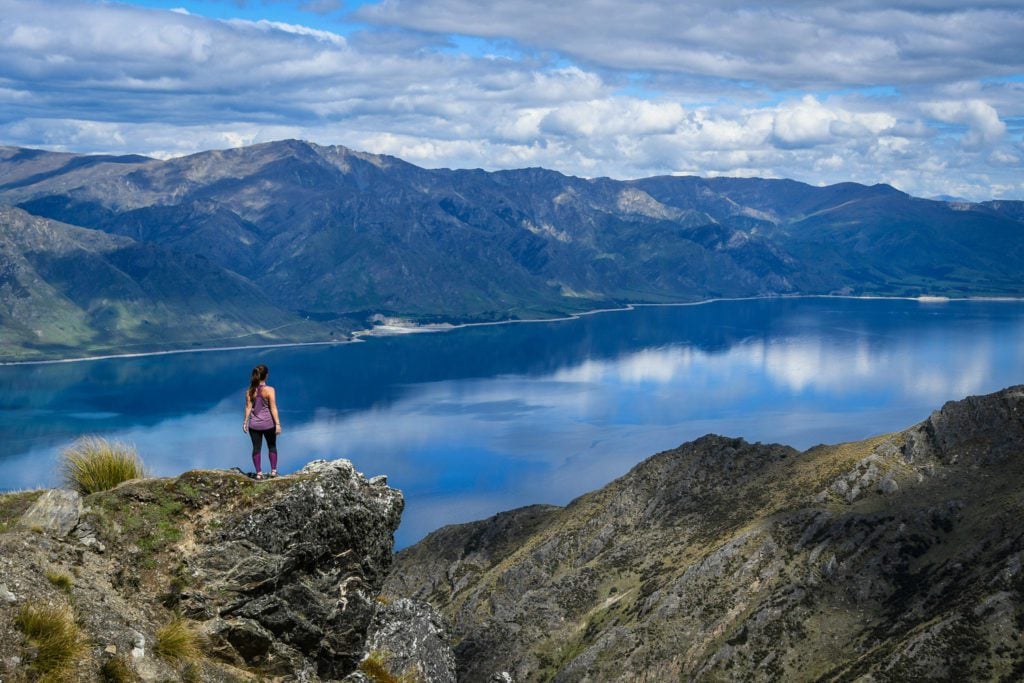
Nestled on the shore of its namesake lake, Wanaka is a charming resort town with a proud craft beer culture. In the evenings, you can find outdoor enthusiasts enjoying a pint in one of the local breweries after a day of hiking, mountain biking, skiing (winter), or water sports (summer).
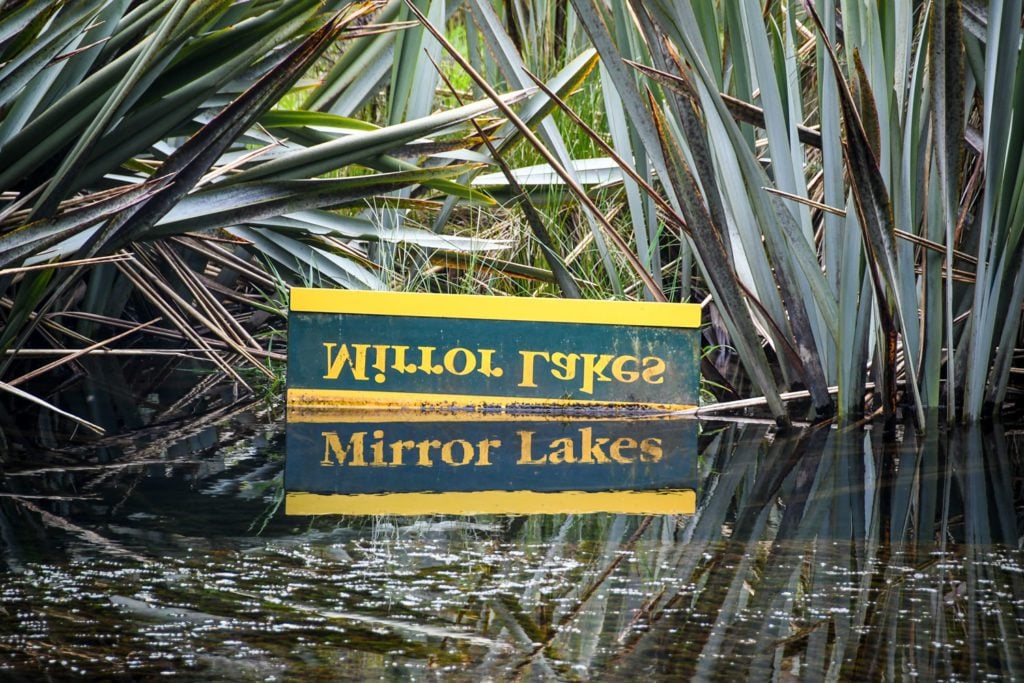
This idyllic lakeside town is the perfect base for exploring some of New Zealand’s most iconic natural attractions, such as Fiordland National Park, Milford Sound, and 3 of the country’s 10 Great Walks. Meanwhile, Te Anau itself offers both relaxing and adventurous activities, including l ake cruises, glowworm caves, and a bird sanctuary .
Milford Sound & Fiordland National Park
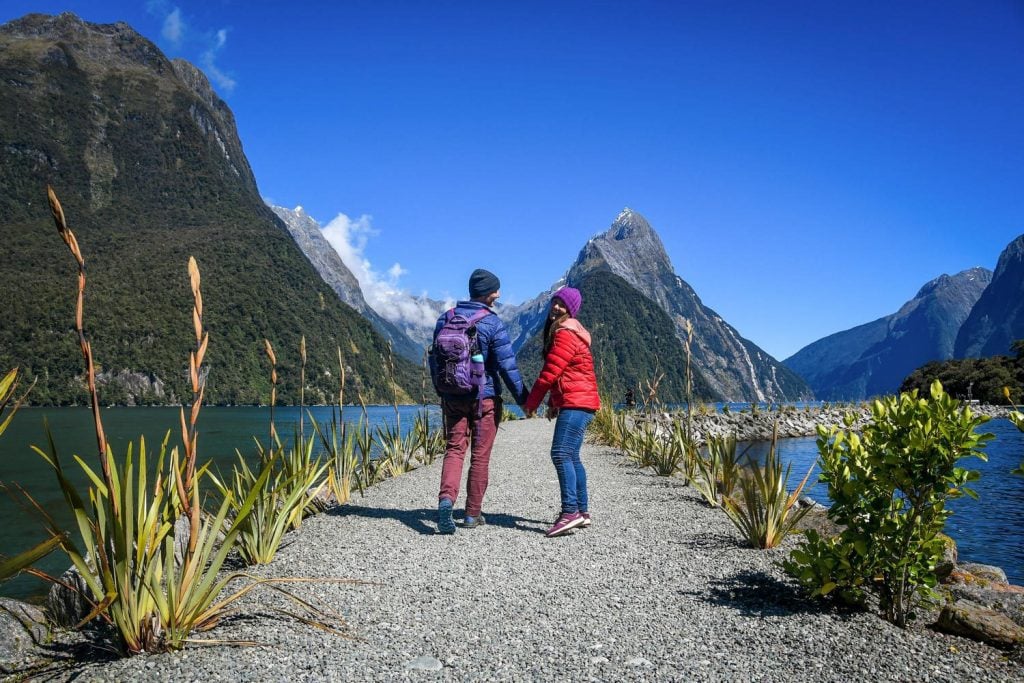
Fiordland National Park is a UNESCO World Heritage Area known for its untamed wilderness and biodiversity , and Milford Sound is the star of the show. With towering cliffs, cascading waterfalls, and verdant rainforests, Milford Sound is one of the most breathtaking natural attractions in the world.
Read more in our Milford Sound series:
- Milford Sound Cruise Guide
- Milford Sound Travel Guide
- Queenstown to Milford Sound Road Trip Guide
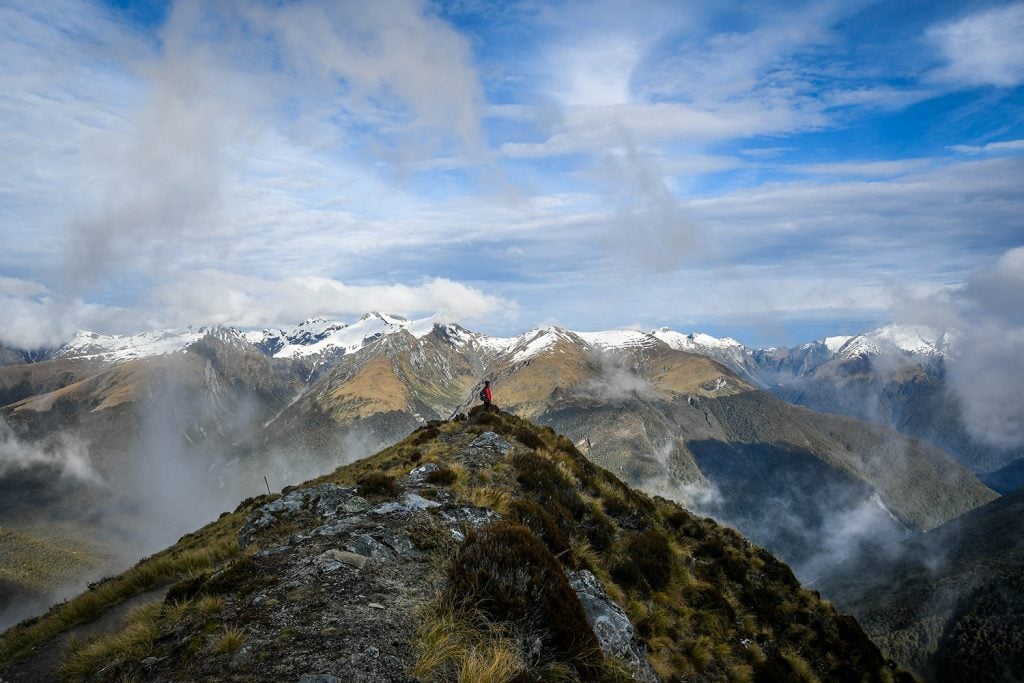
First thing’s first: “West Coast New Zealand” is a specific region, stretching from Haast to Kahurangi National Park on the South Island’s – well – west coast.
Okay, now that that’s cleared up…
The West Coast was one of our favorite regions in the country, a wild and untamed wilderness ranging from glaciers and snow-capped alps in the south to palm trees and white sand beaches in the north.
Read more in our West Coast Travel Guide .
Lake Rotoroa
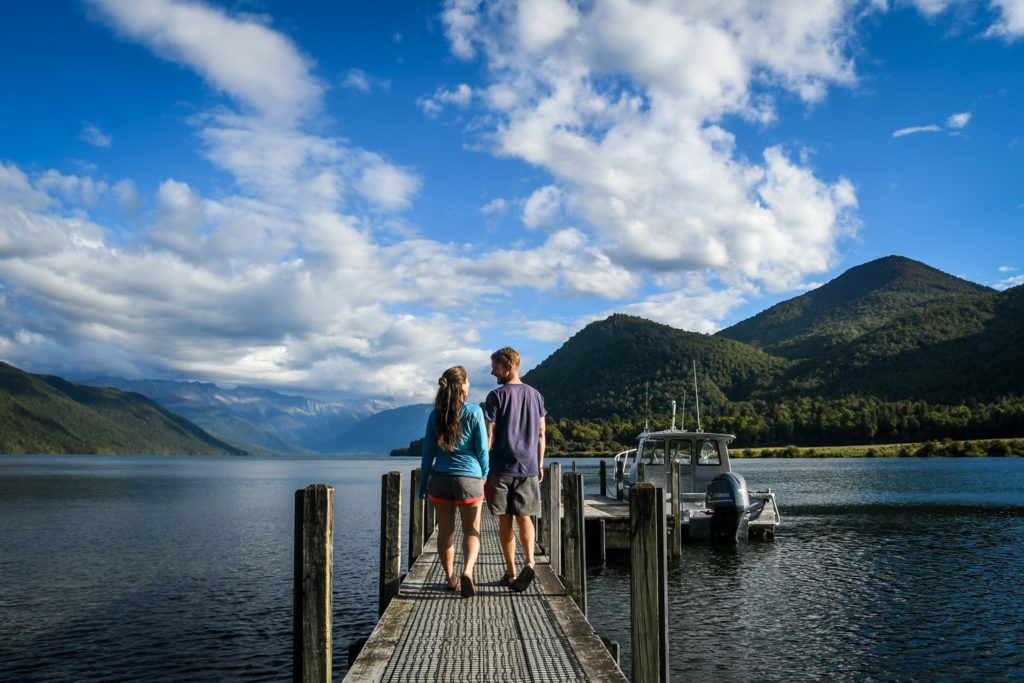
Enveloped by soaring mountain peaks and thick beech forests , Lake Rotoroa offers a remote escape 40 minutes from the nearest village of St. Arnaud. The surrounding Nelson Lakes National Park is threaded with trails ranging from leisurely walks to strenuous hikes. Bring your binoculars for birdwatching!
Abel Tasman
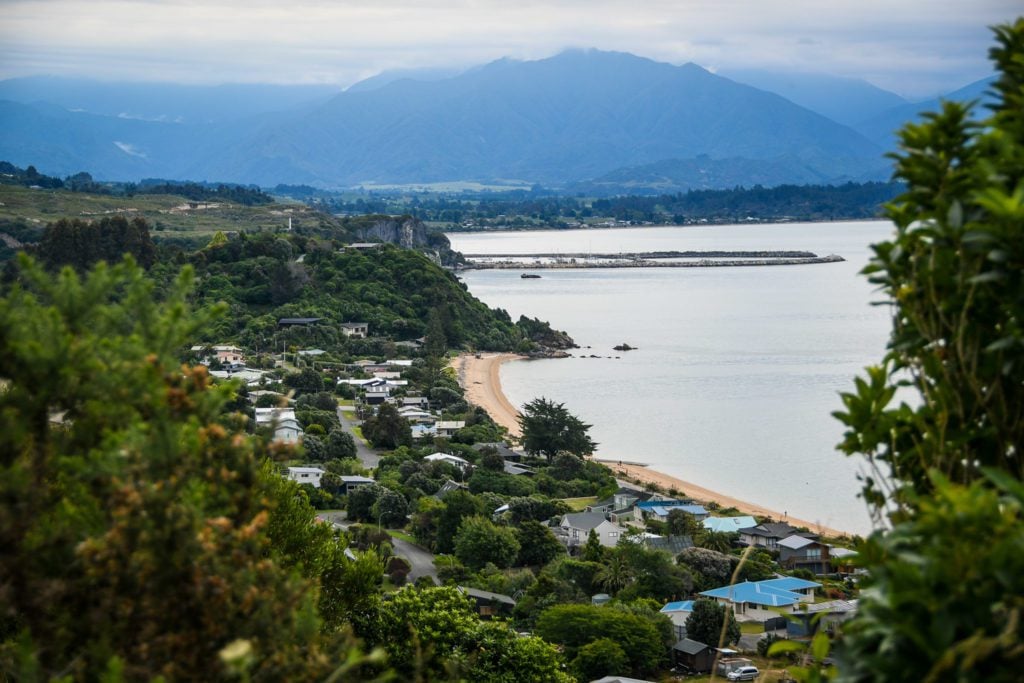
New Zealand’s smallest national park packs a big punch with golden sandy beaches, clear turquoise waters, and lush native forests. This coastal paradise holds secluded coves and hiking trails that are perfect for kayaking and spotting wildlife, such as dolphins and fur seals .
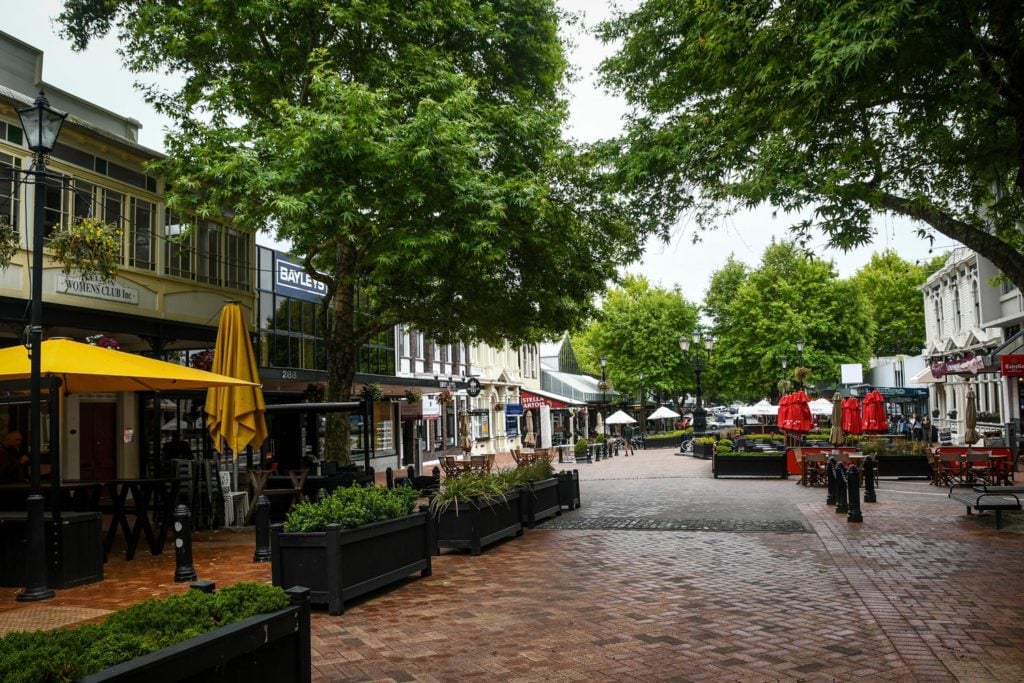
Situated on the shores of the South Island’s Tasman Bay, New Zealand’s sunniest city is a hub for artists and craftspeople of traditional, Maori, and contemporary persuasion. Visit the weekend markets for a chance to taste artisanal products and find a handcrafted souvenir to take home.
Marlborough
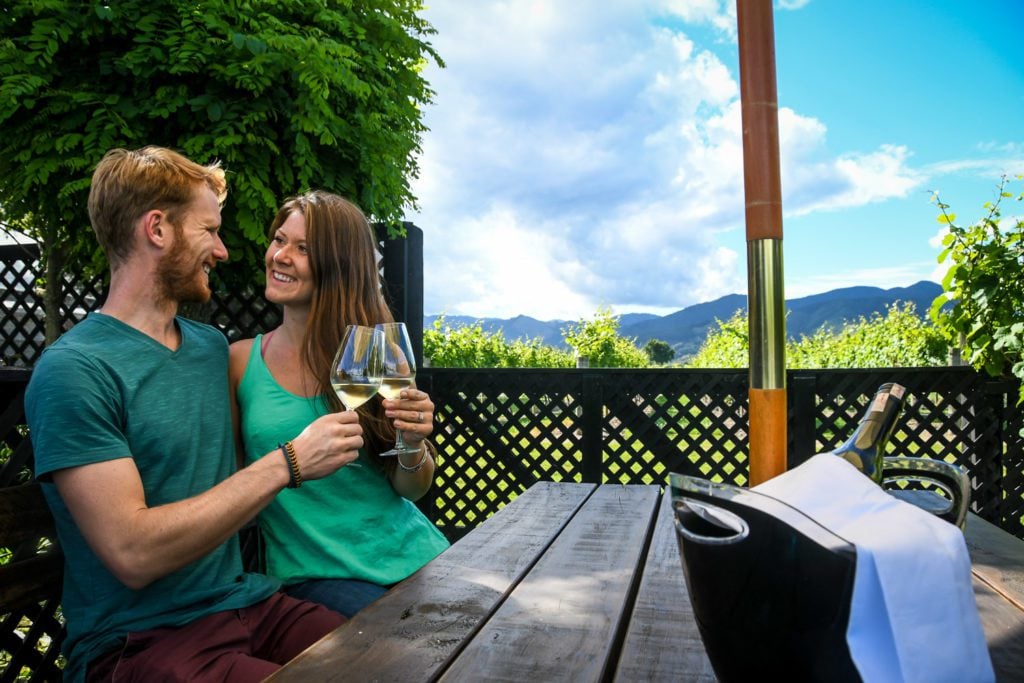
As New Zealand’s largest wine region, Marlborough is best known for its Sauvignon Blanc and fresh seafood (a match made in heaven!), as well as its diverse and stunning scenery. Rolling vineyards give way to the Marlborough Sounds, an intricate network of sheltered waterways and island sanctuaries that are home to dolphins, whales, seals, and the iconic kiwi bird.
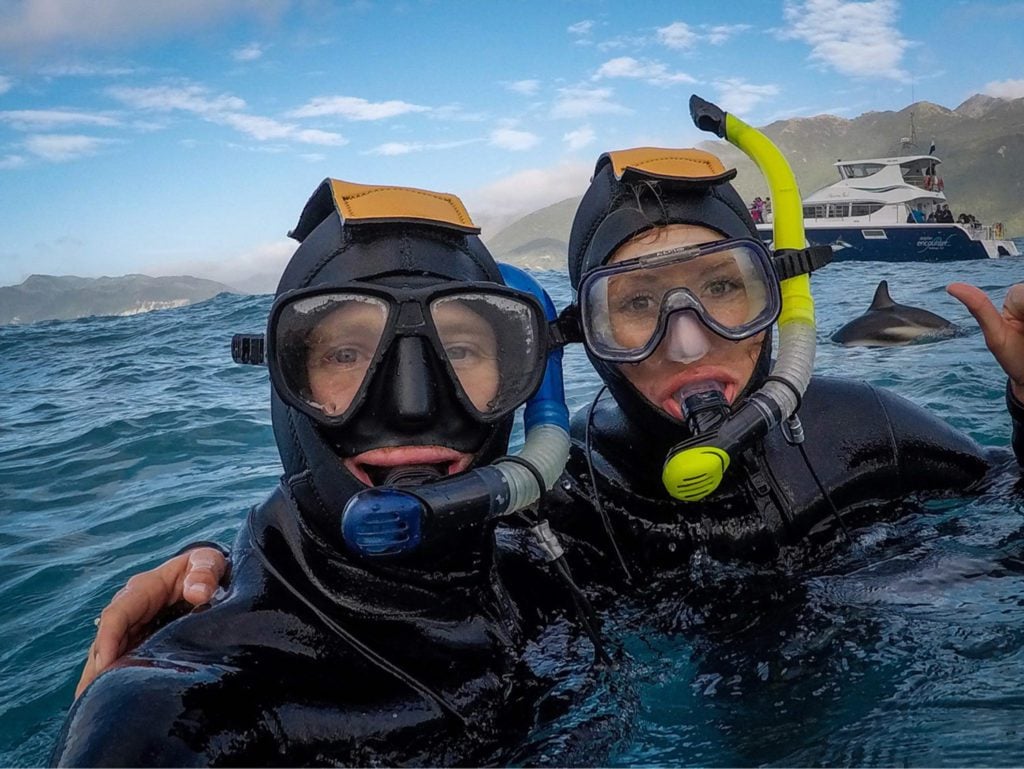
The coastal town of Kaikoura is renowned as one of the best places in the world for marine wildlife encounters, including whale watching and swimming with dolphins (ethically!). The abundant marine life coupled with its striking position between the dramatic Kaikoura Ranges and the Pacific Ocean make this a truly one-of-a-kind destination.
Dunedin and Otago Peninsula
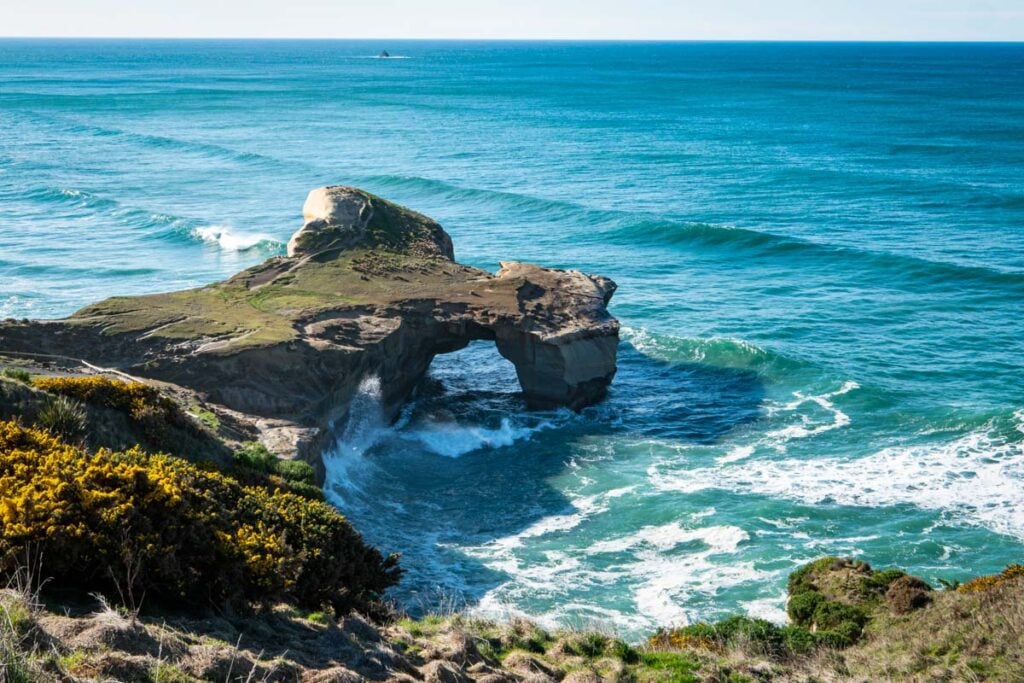
Dunedin rests at the head of a sheltered harbor, cradled by the Otago Peninsula on the South Island’s eastern shore. The city is steeped in Scottish heritage and historic architecture, including New Zealand’s only castle.
On the Otago Peninsula, scenic drives and hikes offer opportunities to view penguins, seals, sea lions, and albatross in their natural habitats.
Stewart Island
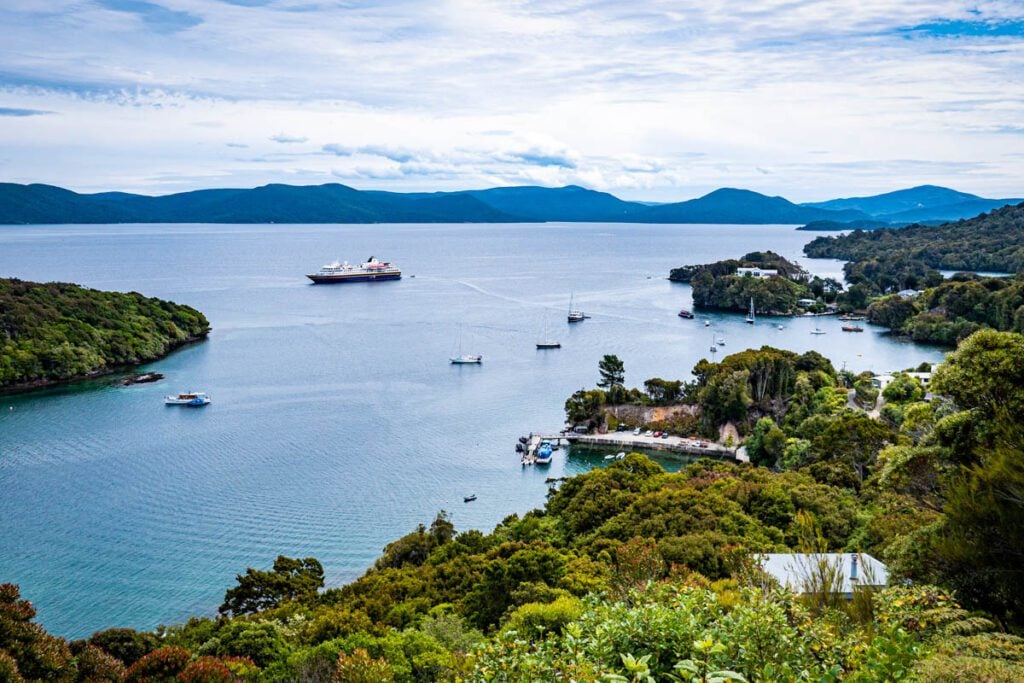
Located 30 kilometers south of New Zealand’s South Island, Stewart Island is a perfect place to get away from civilization. This remote island is known for excellent bird spotting, hiking, stargazing , and the peace that comes with being on an island with just 400 permanent residents.
Great Barrier Island
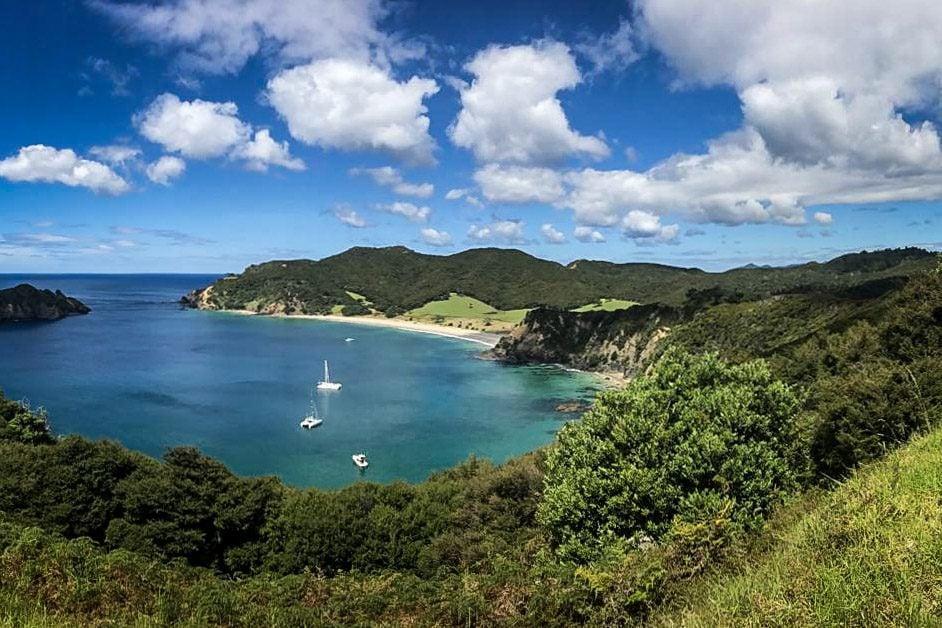
For picture-perfect beaches, untouched forests, and secluded bays, Great Barrier Island is a place to get away from it all. This tropical-feeling island is completely off-grid and has a population of 1,000 people. Getting here requires a 4.5-hour ferry ride from Auckland or a 30-minute flight.
When to go to New Zealand
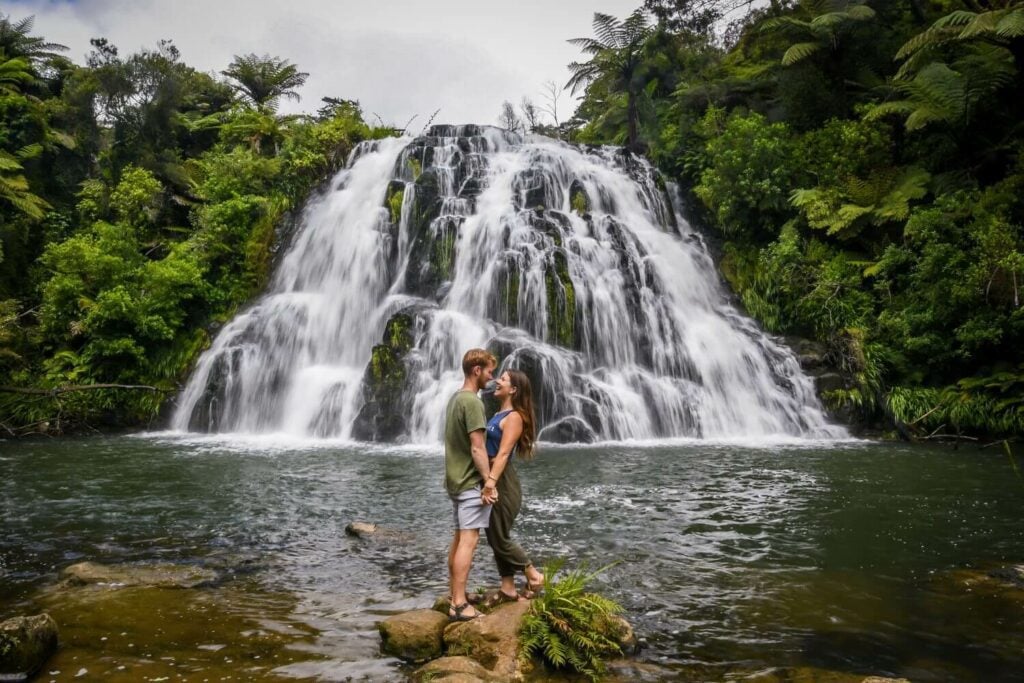
Spring (December – February) in New Zealand means temperatures are warming up and the days are getting longer. This is also lupin season, which is a big draw for photographers.
Summer (January – March) brings long and sunny days with warmer temperatures — great for hiking and long days at the beach.
Fall (March – May) is a great time to avoid high season crowds (and prices!) while still having enough daylight and comfortable temps to enjoy an array of outdoor activities.
Winter (June – August) in New Zealand is great for winter sports like skiing and snowboarding. Or if you are on a tight budget, this season brings the most discounted rates and the fewest crowds of the year.
Our personal pick would be to plan your New Zealand itinerary during the shoulder season between spring and summer (November/December).
For an in-depth guide on the regional seasons, weather patterns, and other factors, check out our complete guide to the best time to visit New Zealand .
Car vs. Campervan: How to get around on your New Zealand itinerary
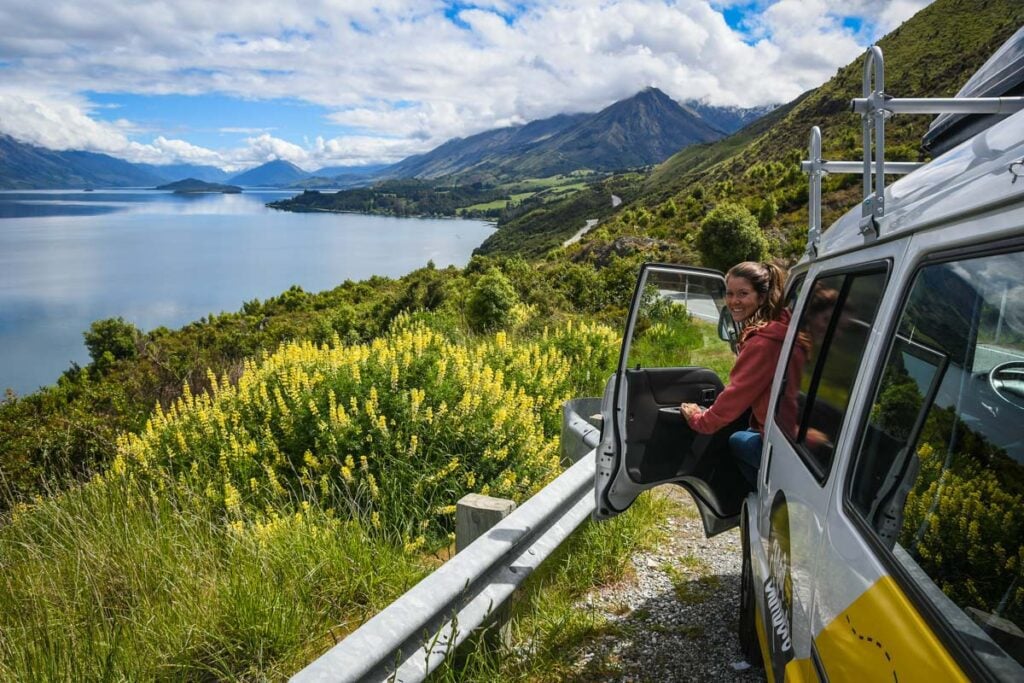
Though public transportation in New Zealand is pretty good, having your own set of wheels is hands-down the best way to explore the country for a few reasons:
- You can see hidden gems and get off the beaten path.
- You’ll be able to travel on your own schedule, and getting from point A to point B is faster.
- Driving in New Zealand is easy and parking is plentiful.
Now that we’ve established you’re renting a vehicle, you might be wondering, car or campervan?
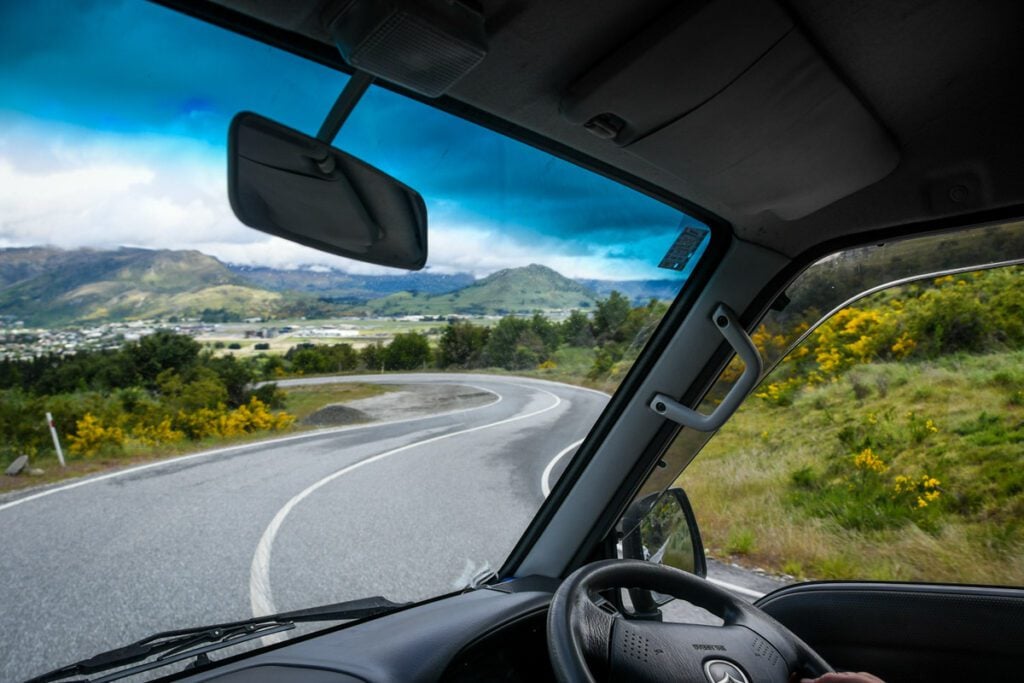
Renting a car in New Zealand is fairly straightforward, but it has a few little quirks that might surprise you, even if you’re a pro at car rentals. We put together a huge guide to New Zealand car rentals to share all our insider information with you, including things we wish we’d known before our trip.
The main advantage of renting a car (as opposed to a campervan) is that a smaller vehicle is generally easier to drive and park. And unless you’re really into campervans (like us!), you’re probably more used to driving a car and might be more comfortable with this option.
Be sure to book your rental car and any rental gear before your trip begins. And don’t forget travel insurance ! Picking a policy that covers your rental car is often cheaper than buying a separate policy through the rental company.
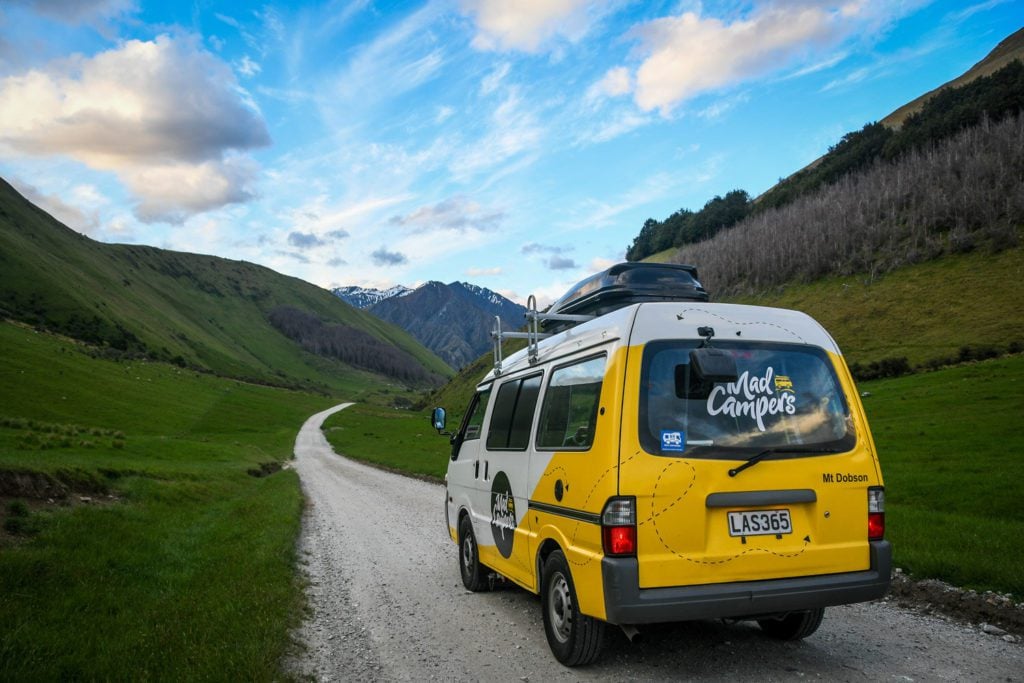
We personally traveled by campervan for 5 weeks in New Zealand and loved every minute of it! We think it’s the best way to explore this glorious country. Here are a few reasons why we love it:
- It’s easy. There are few countries in the world as well set up to accommodate campervans as New Zealand, and there are tons of places to camp (some of which are free!).
- You can save money. When you see the price tag attached to a campervan rental, you’ll probably think “Whaaat?! That ain’t cheap!” But what you have to remember is that this is your rental vehicle and your accommodations all in one!
- You can save money (again). Is there an echo in here? You can also save money in a campervan by cooking your own meals , so I think it’s worth repeating!
- It’s the adventure of a lifetime! Campervan travel adds a level of freedom even beyond driving a car, as well as experiences you won’t get at a hotel. It’s magic. Trust me.
If this got your attention, we have a guide to the best campervan rentals in New Zealand that walks you through your rental options and what to look out for. We’ve even included an exclusive discount for our readers!
We also put together a HUGE guide to planning your New Zealand campervan trip with tons of insider tips and advice. Make sure to give it a read before booking your trip!
Where to start and end your New Zealand itinerary
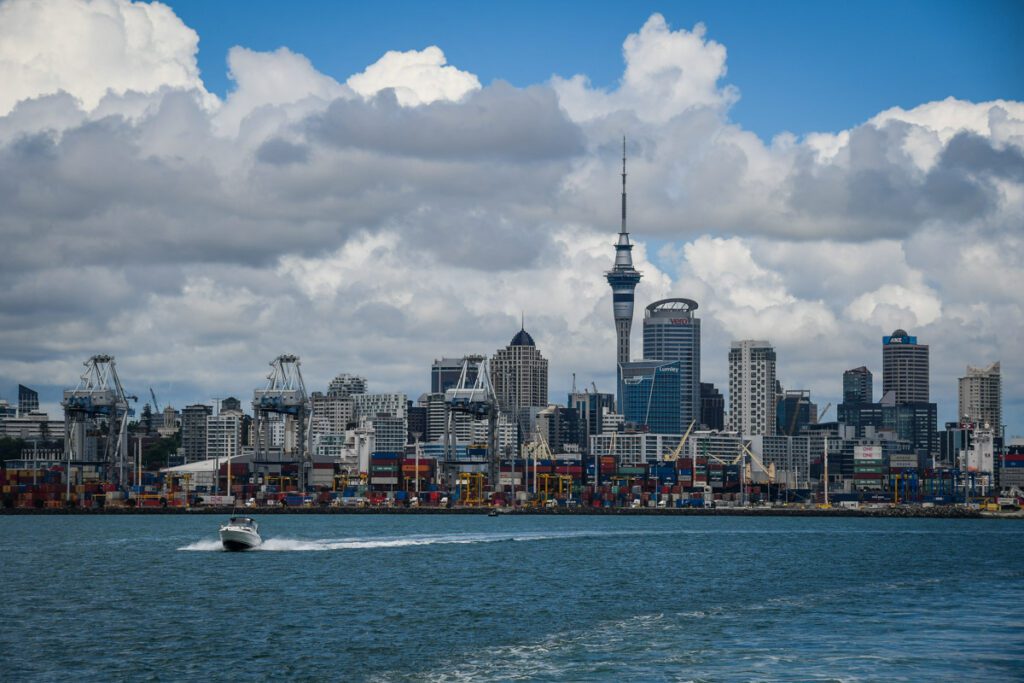
Deciding where to start and end your travels is another factor you’ll want to consider when planning the perfect New Zealand itinerary.
New Zealand has quite a few international airports – there’s one in just about every major city. So you’ll have a lot of options to choose from.
We’ve done the research, and we personally recommend starting your itinerary in Auckland .
For starters, you’ll likely fly into Auckland, since it has the biggest international airport. And as New Zealand’s largest city, you’ll find a wide selection of rental cars and campervans you can pick up in Auckland.
However, if you want to start your road trip somewhere else, Wellington, Christchurch, and Queenstown also have plenty of options for campervan pickups.
We’ve designed our 1-month New Zealand itinerary to begin in Auckland and end in Christchurch. Some rental companies will allow you to pick up and return your vehicle in different locations (sometimes for a fee). If not, you can always hightail it back to Auckland to return your rental.
Cook Strait Ferry
The Cook Strait Ferry operates between the North and South Islands in New Zealand, connecting the cities of Wellington and Picton. The ferry service provides both passenger and vehicle transportation, making it a vital link for travelers exploring both islands.
Not only is it an efficient way to get from one island to the other (especially if you are traveling by campervan or car), the ferry is an iconic journey across the Cook Strait with incredible views. Many people believe it’s the most scenic ferry crossing in the world!
How many days is enough for New Zealand?
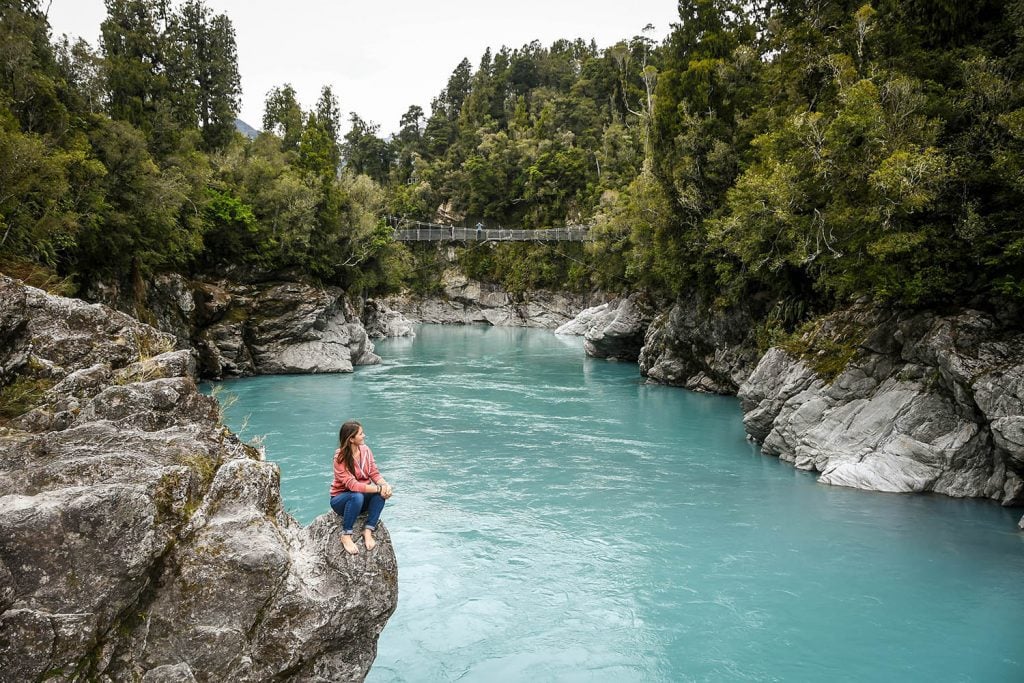
This is a tough one to answer because even a lifetime wouldn’t be enough. Seriously.
We spent 5 weeks traveling around New Zealand in a campervan, and we’ve been lucky enough to experience a lot of what this country has to offer. Even so, we still left with a loooong list of things to do “ next time ”.
That said, we do have some suggestions based on the amount of time you have to explore New Zealand:
1 Week New Zealand
If you have just one week, we recommend focusing on a specific area. Base yourself in a city like Queenstown or Auckland and plan for a couple of day trips.
2 Weeks New Zealand
Choose one island to explore. We have perfect 2-week itineraries ready-to-go for both the North Island and South Island . All the hard work is done for you!
1 Month New Zealand
We think a month is ideal for your first trip to New Zealand . With our 30-day New Zealand road trip itinerary , you’ll experience a good chunk of the country’s must-sees and hidden gems (we have lots!).
5+ Weeks New Zealand
Extra time? Even better! Our 1-month New Zealand itinerary is packed with insider tips to customize your trip , including what to add if you have more time.
What is a typical travel budget for New Zealand?
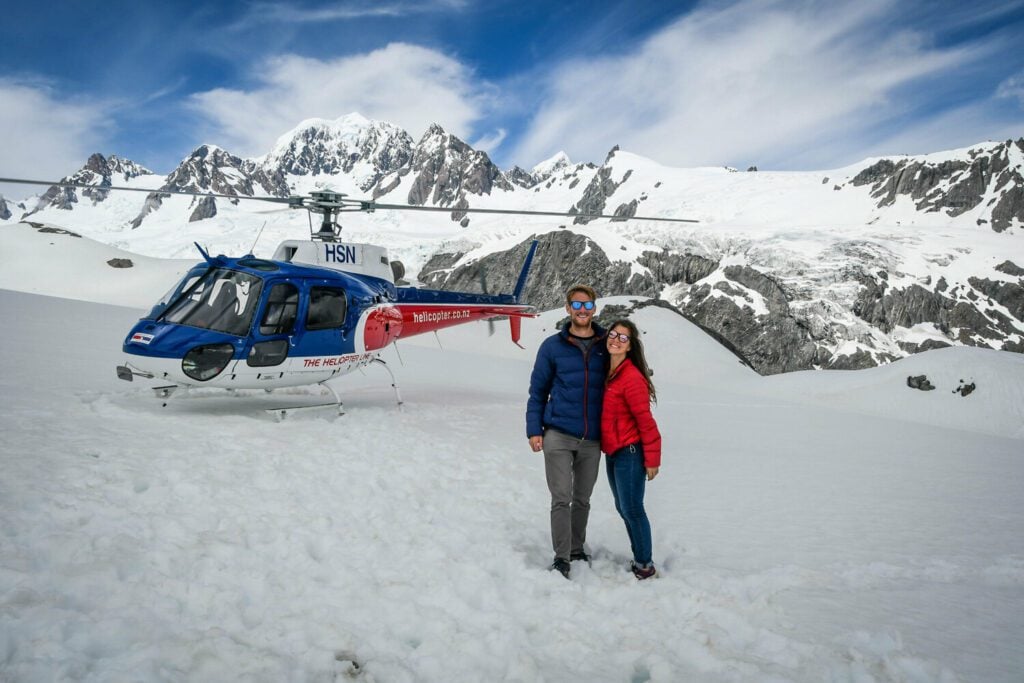
I’ll give it to you straight: New Zealand ain’t cheap. But don’t let that stop you – it is still totally possible to explore New Zealand on a budget .
If you are on a tight budget and watch your spending closely, you could get by with a daily budget of $60 – $90 per person.
If you want a few splurges and to stay in nicer accommodation, plan to budget $100 – $150.
On the other hand, you could easily blow through upwards of $200 per person per day if you book luxury hotels, eat out, and pack your itinerary with tours like bungee jumping and scenic helicopter flights.
For a more detailed breakdown, see our New Zealand travel guide .
Where to stay around New Zealand
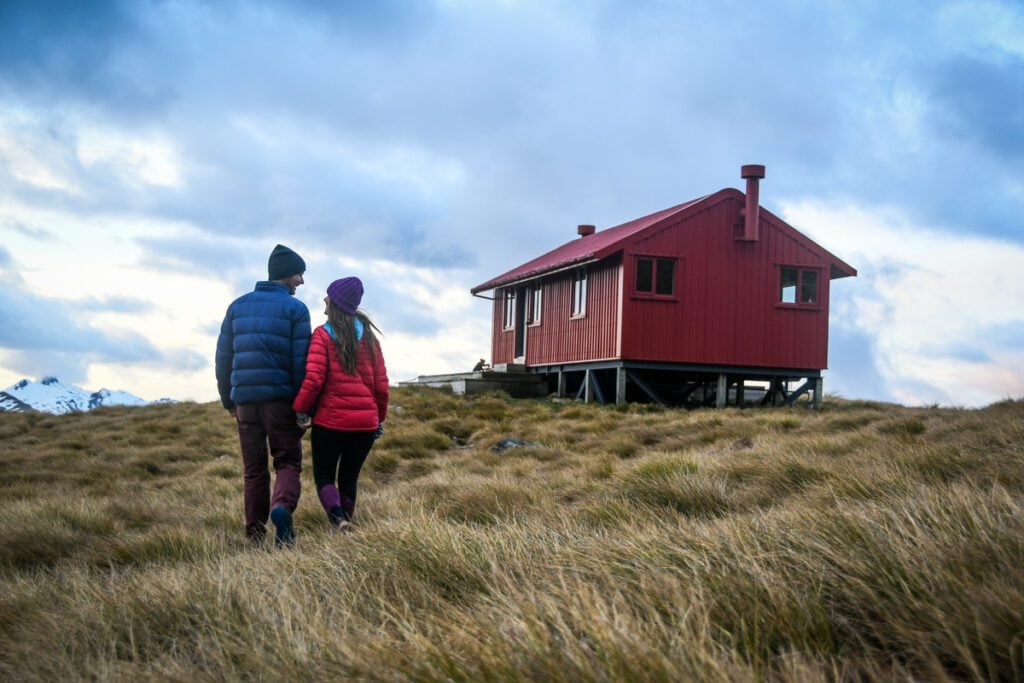
New Zealand is a developed country with lots of accommodation options. As with any destination, lodging will be more plentiful (but generally more expensive) in the city centers, and prices will be higher during peak tourist season (December to February in NZ).
Our New Zealand itinerary has options for hotel/Airbnb stays as well as campsites, so you can tailor it for your personal travel style.
From chains like Holiday Inn to boutique hotels and resorts, you can find it all in New Zealand. Hotels are usually concentrated around metropolitan centers and may not be available in some remote areas. We recommend using Booking.com to search for hotels and compare prices.
Insider Tip: Traveling on a tight budget? Use Booking.com to search and compare prices for hostels. With the exception of certain campsites, hostel dorms are usually the cheapest accommodations out there.
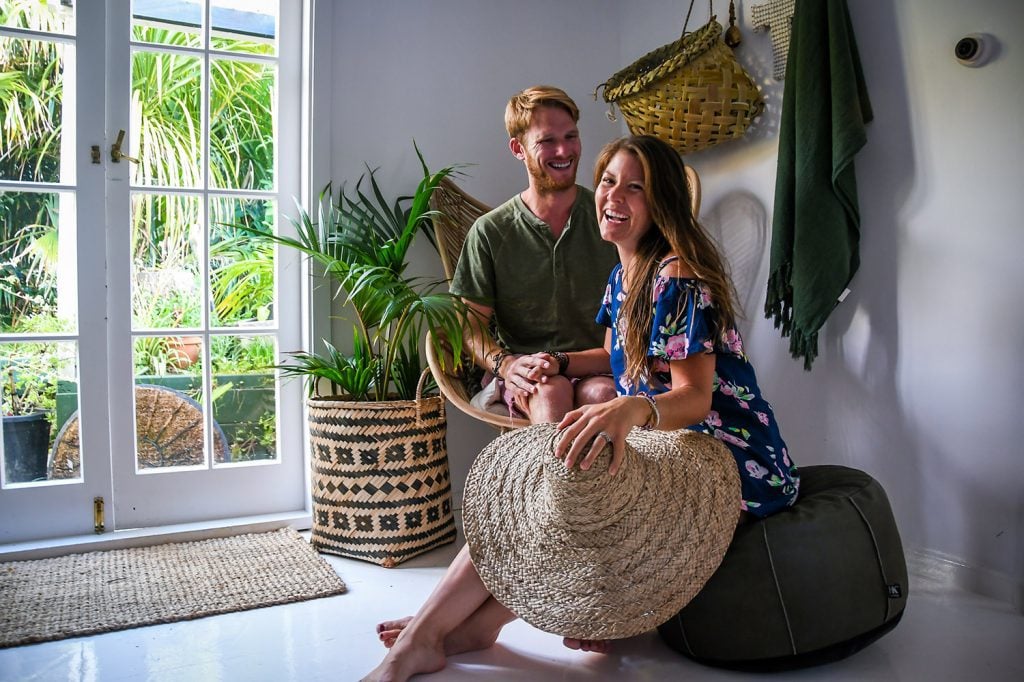
Renting an Airbnb is one of our favorite ways to get to know a place. Plus, they offer experiences you won’t get in a hotel:
- Get off the typical tourist track and experience the country from a local’s point of view.
- Stay in the suburbs or the countryside, outside of the major hotel areas.
- Enjoy perks like having your own kitchen and laundry – especially for a long-term stay.
- Psst! Read about why we prefer Airbnbs over hotels when traveling with a baby.
- Save money!
- Find unique stays, like this rainforest retreat near Auckland .
Never booked an Airbnb before, or worried about getting a dud? No sweat – we have Airbnb basically down to a science. We even created a whole guide to booking Airbnbs where we share all our tried and true secrets to ensure a great experience.
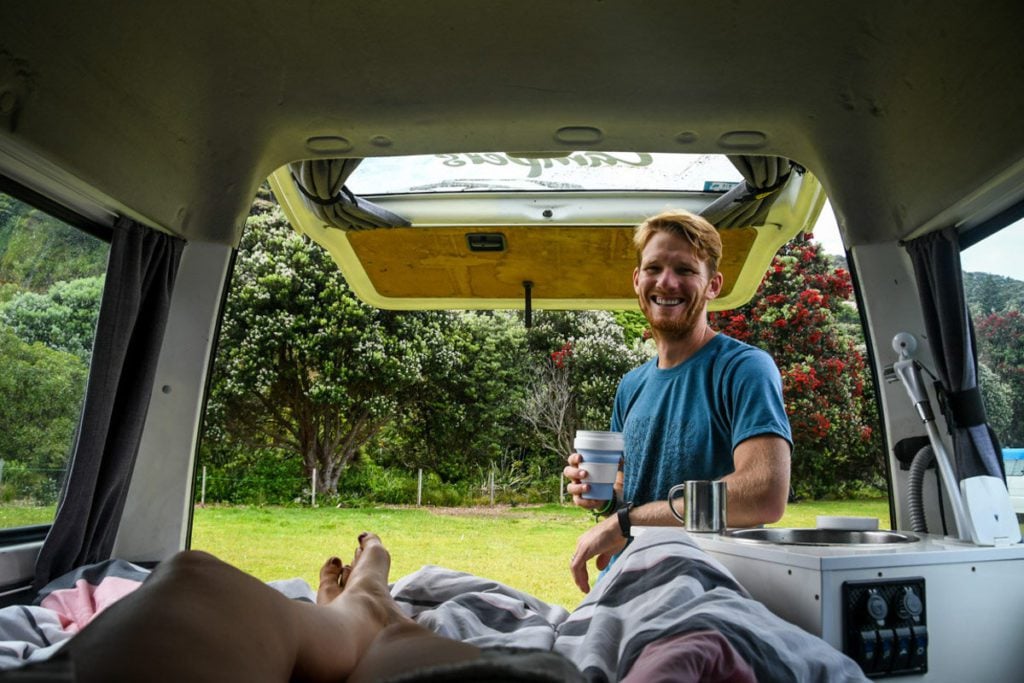
There are all types of campgrounds in New Zealand, from totally free to pretty pricey (like $70 NZD per night), from unmaintained sites to holiday parks with hot showers, BBQs, and all the frills. And then there’s everything in between.
New Zealand campsites are also quite different from those in North America. Most of the camping in New Zealand is more or less a field where campervans have space to park.
We know how overwhelming it can be to sift through tons of campsites while trying to decipher unfamiliar jargon (what exactly is a “holiday park?!”). So we created a New Zealand camping guide , complete with a rundown of the rules and a map of the best campsites in the country.
Our perfect New Zealand itinerary
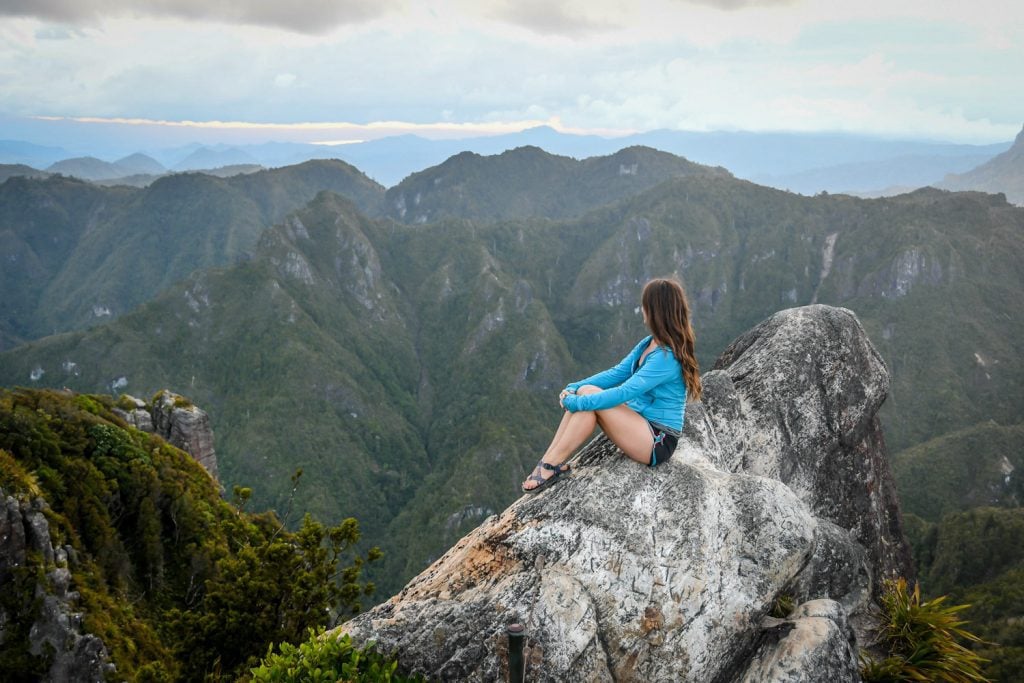
Countless hours were spent researching our route for New Zealand. We pored over article after article. We talked to Kiwis and asked for their local advice. And we finally came up with a plan.
All our research paid off: We had an incredible road trip! So, we’ve taken our road trip route and made it even better for you.
We took our 5-week travels and condensed it down to 30 days (because so many people wanted a 1-month route) that hits the top destinations on both the North and South Islands . We added some things we wish we would have made it to and we altered a couple things here and there that we wish we would’ve done differently.
This New Zealand itinerary is set up to be done as a campervan road trip . However, you can also follow this route if you’re traveling with a rental car and staying at hotels or Airbnbs along the way.
Important Note: One thing to know about traveling in New Zealand is you’ll need to be flexible. The weather in this country can be highly unpredictable (especially on the South Island), and a day of heavy rain or a surprise snowfall might derail your plans of hiking or bungy jumping. We would highly recommend having some “flex days” so you can alter your plans if you encounter weather that is not ideal. Trust us on this one.
Highlights of our New Zealand itinerary
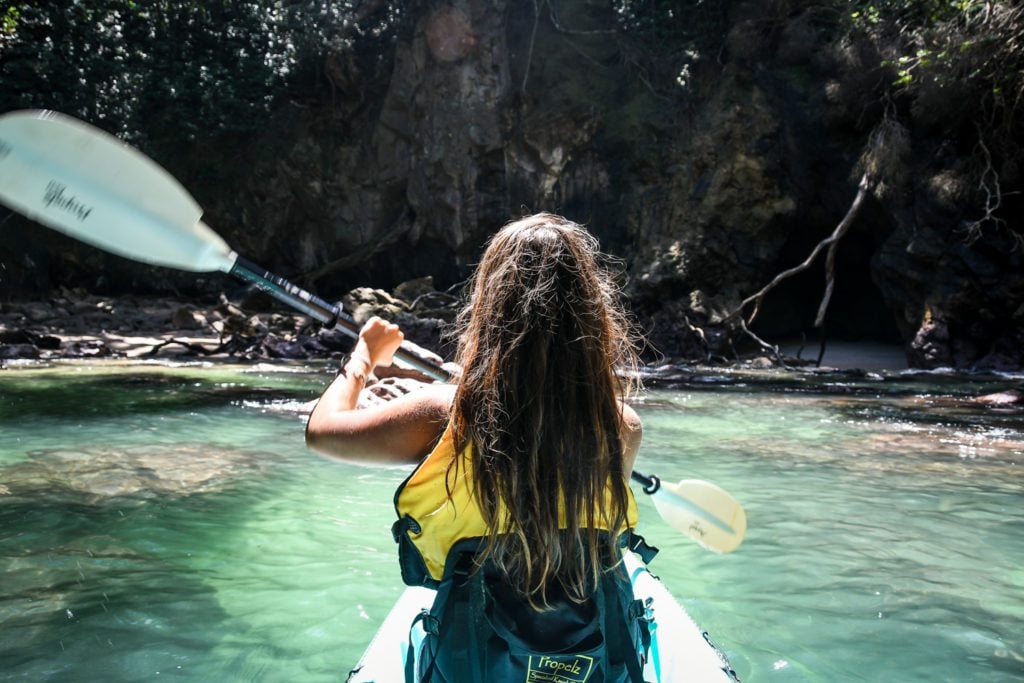
Below are some of the can’t-miss things to do in New Zealand that we’ve included in our epic one month itinerary.
- Discover Auckland and Waiheke Island
- Hike to Pinnacles Hut and witness the sunrise over the Pinnacles
- Explore the beaches on the Coromandel Peninsula
- Sea kayaking to Donut Island and camping on the beach
- Take the Hobbiton movie set tour
- Hiking in and around Rotorua and Lake Taupo
- Trek the Tongariro Alpine Crossing
- Eat and drink your way through Wellington
- Swim with dolphins (ethically!) in Kaikoura
- Wine tasting in Marlborough
- Explore Abel Tasman National Park
- Go rafting through a glowworm cave
- See Pancake Rocks
- Get up close and personal with Franz Josef Glacier
- Drive the beautiful Haast Pass
- Hiking around Wanaka
- Adventure activities in Queenstown
- Cruise Milford Sound
- Enjoy the laid back but incredibly scenic Key Summit hike
We’ve spent hours of research putting this all together, just for you!
In full transparency, this is a paid itinerary since it has taken an incredible amount of time for us to create.
However, we keep all of our paid itineraries affordable – just $15 for an entire 1-month itinerary. We think this is an extraordinary value considering almost all your planning will be done for you!
If you don’t have enough time to do both islands, we broke down our full itinerary into separate itineraries in the following articles:
- North Island Itinerary
- South Island Itinerary
Booking your New Zealand trip
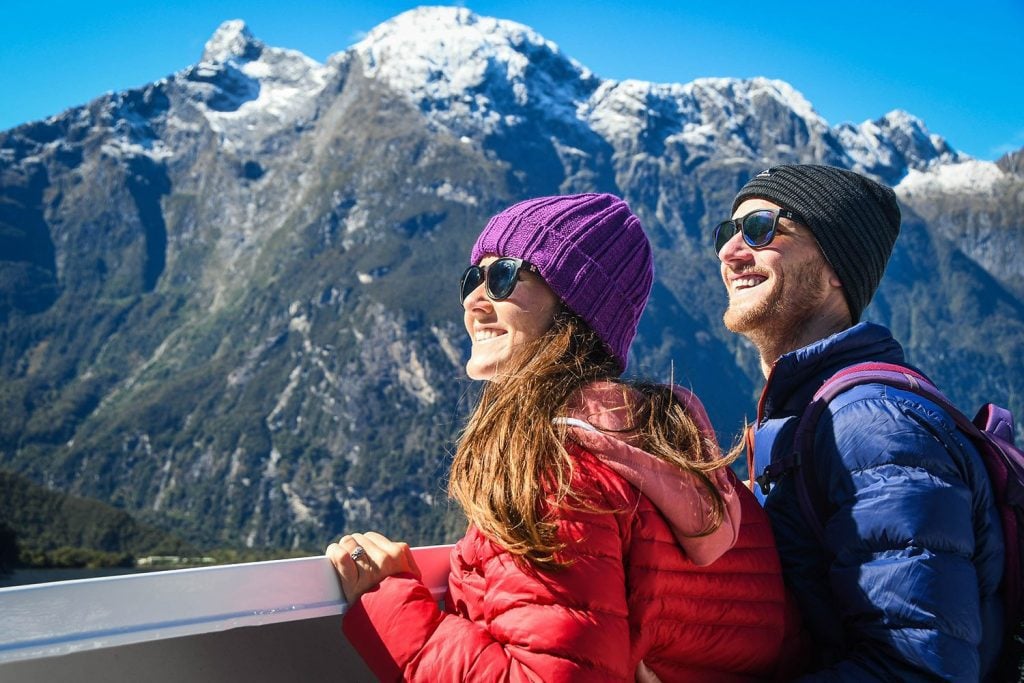
We have a handful of go-to resources that we use when planning nearly all our trips. Here are the platforms we use to book our most basic travel needs:
- Flights: Skyscanner
- Campervan rentals: Motorhome Republic
- Rental cars: Discover Cars
- Hotels: Booking
- Unique accommodations: Airbnb
Don’t forget about travel insurance!
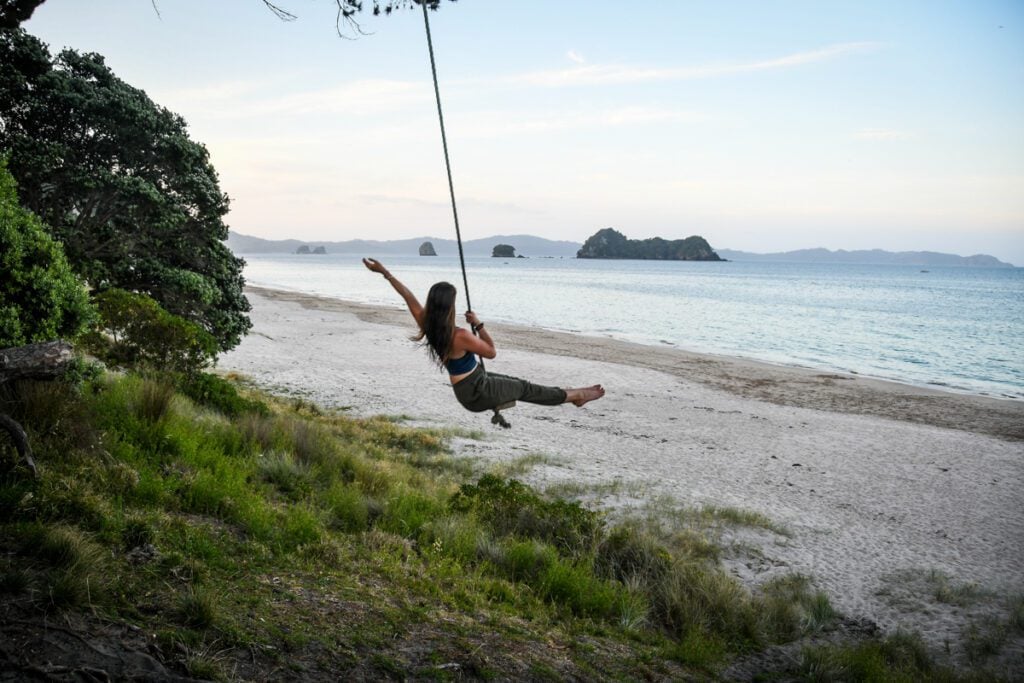
Hold up – don’t even think about getting on a plane without this! Travel insurance is just as important as your passport and, contrary to popular belief, it is not expensive.
We know a lot of people will forego this step simply because they get too overwhelmed by all the options.
Please don’t do that!
We made a comprehensive guide to travel insurance to help you out. We share which companies we use and what policy details to look for when you go over your travel insurance comparison.
Our recommendation:
Our personal pick for travel insurance is SafetyWing . Their policies are geared toward frequent travelers and digital nomads, and they’re one of the few providers who have coverage for Covid-19.
What sets SafetyWing apart is their emphasis on flexibility and adaptability . Unlike traditional insurance policies with fixed durations, SafetyWing’s coverage is designed to be subscription-based, allowing travelers to pay on a monthly basis and enjoy continuous protection while on the move.
New Zealand itinerary planning resources
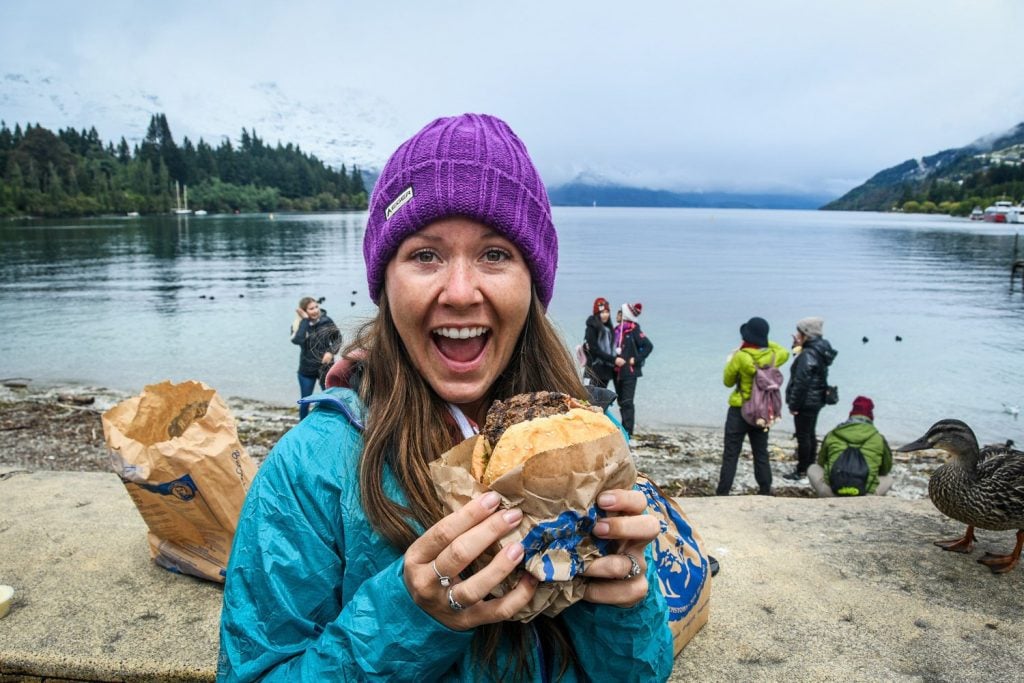
We have TONS of resources for planning your trip in our New Zealand travel guide . Below are some of our top recommended articles for New Zealand itinerary planning…
- Things to Know Before Traveling in New Zealand
- Exciting Things to Do in New Zealand on Your First Visit
- New Zealand Travel on a Budget + Money-Saving Tips
- Best Time to Visit New Zealand: When to Go & When to Avoid!
- Ultimate Guide to Planning Your New Zealand Campervan Trip
- Best Campervan Rentals in New Zealand
- Best New Zealand Campsites: Ultimate Guide + Map
- Car Rental in New Zealand: Essential Guide + Tips
- Incredible New Zealand Hikes + Local Tips
- Best New Zealand Foods to Try (& what to skip!)
Be sure to download our complete packing list for New Zealand ! It’s full of good suggestions and insider tips to help plan your campervan trip in New Zealand. And it’s completely FREE , so why not!?
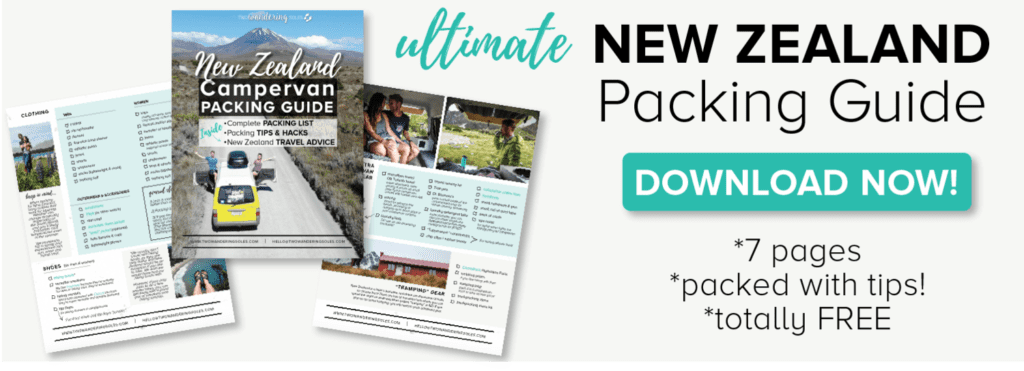
Want your itinerary planned for you?
- Perfect 1 Month New Zealand Itinerary
- South Island New Zealand Itinerary: Epic 2-Week Road Trip
- North Island New Zealand: 2-Week Road Trip Itinerary
Save this article on Pinterest for later!
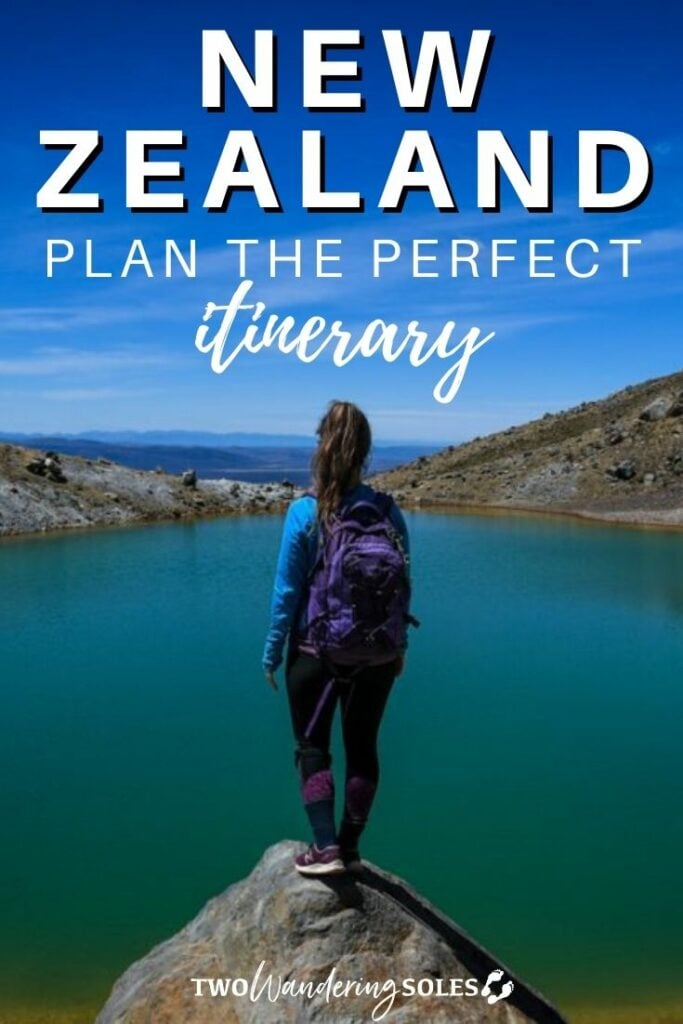
We want to hear from you!
Are you planning your own perfect New Zealand itinerary and still have questions? Let us know in the comments below and we’ll do our best to get back to you!
Comment (1) on “ How to Plan the Perfect New Zealand Itinerary ”
Great article! I am thinking of a two month New Zealand trip next year, in October, November, and December. Will probably fly into Auckland and spend about three weeks to a month road tripping the North Island. Then will go down to the South Island and spend about a month to five weeks road tripping before going back up to Auckland and flying home. How is the weather in the North island during mid October to mid November? Will I be able to hit up beaches? Also, is mid November to mid December a good time to see lupins on the South Island? What would be the ideal (female) packing list during this time? Thanks in advance!
P.S Hope you enjoyed your Arizona hike! Can’t wait to hear about it!
Leave a Reply Cancel reply
Your email address will not be published. Required fields are marked *
Save my name, email, and website in this browser for the next time I comment.

10 Important New Zealand Travel Tips to Know Before You Go
N ew Zealand is epic, it’s beautiful, it’s exciting… and it’s a heck of a trip to plan on your own. You’re probably coming from the other side of the world and heading to a country that most people you know have never visited. That was certainly our experience.
We spent hours and hours researching everything we needed to know for our six week New Zealand trip (part of our family gap year) and mostly things went off without a hitch. But we certainly learned a lot along the way so I’ve put together these important New Zealand travel tips for you to read before you go to the Land of the Long White Cloud ( Aotearoa in Maori).
We’ll cover important topics like how to visit New Zealand on a budget, nuances of renting a car in New Zealand and driving in New Zealand, how to find the best places to stay in New Zealand and more. Ready to start planning?
First: some basic facts about New Zealand
- New Zealand is an island nation surrounded by the Pacific Ocean and the Tasman Sea, which separates it from Australia.
- It’s roughly the size of Colorado but with 15% fewer people.
- The local currency is the New Zealand Dollar, abbreviated NZD – check the current exchange rate .
- New Zealand uses the same three-prong outlet as Australia and China. For typical digital electronics, this dedicated New Zealand power adapter will work or you can buy a universal international power adapter . Leave the hair dryers at home though! They require a voltage step down so you might just want to borrow or buy one locally.
- Driving is on the left side of the road. The traffic in Auckland is horrendous and you’ll be jet lagged when you arrive, so take it slow!
- The Maori people have lived in New Zealand for about 700 years, while Captain James Cook arrived 250 years ago.
- Though the ratio isn’t as out-of-balance as it used to be, there are still roughly 6 sheep for every human resident of New Zealand.
No matter how much time you visit, it won’t be enough
Road to Mount Cook, New Zealand
We spent six weeks traveling around the North and South Islands of New Zealand and still feel like we missed so many amazing places!
One of the best things about visiting New Zealand is that there’s a huge range of activities to pursue – hiking to glaciers, relaxing on beaches, snorkeling with the world’s tiniest dolphins, visiting Hobbiton and so much more. But the reality is that unless you move to New Zealand or visit for many months, there’s no way you’ll be able to see it all… or even close.
How long should you stay in New Zealand? I’d say that two weeks is enough to explore one of the two main islands if you’re planning a New Zealand road trip. For visitors who are short on time, the one place I’d recommend shorting is Auckland – it’s a sprawling metropolis but not nearly as unique as basically everything else in New Zealand. It’s a good place to recover from your jet lag and spend one or two days.
Since the drive time from Auckland to Wellington is around 9 hours (in ideal conditions), you could probably get by with spending 10 days on the North Island if you blazed through… but where’s the fun in that? The South Island takes an absolute minimum of 12-13 hours to drive and has so many nooks and crannies that you won’t want to miss, which add to that drive time.
Check out some of these books to help you prioritize the best things to do in New Zealand:
- Lonely Planet New Zealand – a good general overview guidebook to help you plan your route and most important stops
- NZ Frenzy North Island and NZ Frenzy South Island – these are specialized New Zealand outdoor guides written by a local expert
- New Zealand: Travel for kids – if you’re visiting New Zealand with kids, this book provides a great introduction to the history, geography, culture and wildlife
Everything is farther apart than you think
Ok, so those drive times above? Those are the estimates from Google Maps. They assume that you aren’t traveling in New Zealand winter (northern hemisphere summer break), that you don’t need to stop for a herd of sheep, that no one is car sick going over the hill between Tasman and Nelson and that you don’t want to stop for the seventy third photo break.
Yes, there are even your garden variety slow traffic pockets if you’re visiting during peak season.
More importantly, once you get off the main highways there are plenty of spots where the roads are just slow. In some places they’re not as modern and kept up as you might hope. In other places, they’re narrow and windy and you’re just hoping not to drive off the side of a mountain.
Watch for one lane bridges, especially on the South Island! A sign with a blue outline means you have the right of way, a sign with a red outline means that oncoming cars have the right of way. No matter which sign you see, STOP and observe before you try to cross!
You may want to bring this durable map with you to help with navigation in case you end up in an area with spotty cell service – and there are many.
New Zealand and Australia are not that close to each other
How long is the flight from New Zealand to Australia? It’s about 4 hours from Auckland to Sydney. Compared to the 13 hour haul from the west coast of the US, that’s not too bad.
But when you account for arriving to the airport several hours early since it’s an international flight, dealing with traffic in Auckland or high winds in Queenstown and then the lengthy arrivals process in Sydney… it’s easy to see how you can lose an entire day of your trip.
And even more so than New Zealand, it’s extremely hard to do Australia justice in an abbreviated visit. We were there for almost two months and still had more to explore! If you think you’ll never make it back to the region and want to combine the two countries, start planning your Australia itinerary here .
We hear people say all the time that they’re planning a 10 day visit split between the two countries and all we can say is to please reconsider.
You need proof of onward travel
This was a new one for us. New Zealand requires proof of onward travel. That means you can’t enter the country as a tourist without demonstrating that you plan to leave within 90 days. If you’re a typical traveler on a round-trip ticket, you probably only need to complete an Electronic Travel Authority , which is done online and can be ready in a few minutes or a few days. (This only started in August 2019 so we haven’t done it ourselves.)
If you plan to leave New Zealand by way of another country, make sure you purchase that outbound ticket before you try to board your flight to New Zealand. Yay, we did that right!
Except that we kind of didn’t. If you’re going to Australia next, read this . Australia requires many visitors to apply for their Electronic Travel Authority in the Australian ETA app before they arrive – including Americans. I know, we’re spoiled and don’t usually have to worry about this stuff! Your onward ticket to Australia doesn’t count unless you have already applied for your ETA.
Lucky the ETA is fast – our approvals only took about 5 minutes. They cost $20 AUD per person as of this writing. But wow was it a stressful experience to deal with at the Internet cafe in the Buenos Aires airport when we arrived for our flight to Auckland. We didn’t plan to visit Australia until six weeks later so we hadn’t thought to get our ETA so early, but it is required.
If you’re going elsewhere on a one-way ticket after New Zealand, be sure to check that country’s visa requirements before you go to the airport heading for New Zealand.
They’re really serious about not bringing in certain foods
When you arrive at airports in New Zealand, there are numerous signs on the way to customs alerting you to which foods you can’t bring in with you . Agriculture is such an important part of the local economy that there’s genuine concern about pests or diseases from other countries sneaking in.
You can’t bring any produce, meat, fish or honey. It was the last one that nearly got us in major trouble. We’d had an amazing visit to the bee farm in Boquete, Panama and picked up some lovely (expensive) creamed honey while there. What we didn’t realize was that there was still one more neatly wrapped jar hanging out in the bottom of one of our huge travel backpacks underneath a bunch of other stuff.
Not remembering that we had it, we had not declared the honey on our entry card. As we went through one set of signs after another, we discarded anything we thought might be problematic. But at the last station before exiting the airport, the backpack was scanned and a serious agent asked what was in the jar. What jar???
Sadly, our delicious honey ended up in the bin. Fortunately, she took pity on us and didn’t fine us! But many visitors are fined every year for bringing illicit foods into New Zealand! The fines can be hundreds of dollars and that’s a really crummy way to start your vacation. Consider yourself warned.
It’s really expensive
New Zealand was the first place we ever felt “expensive fatigue”, and that’s saying a lot from people who lived in LA for decades. Food is expensive, gas is expensive, Airbnbs are expensive.
The ways we managed to save money during our time in New Zealand probably deserve an entire article of their own. For now, here are a few helpful ways to visit New Zealand on a budget:
- Buy your groceries at PAKn’SAVE. It’s more basic than some of the other options, but much cheaper. The produce in New Zealand is gorgeous , even at the least expensive grocery stores. The best thing we bought during our time in New Zealand was a hard-sided cooler and a set of ice packs. When you’re packing up and moving every 3-4 days, you don’t want to be throwing away those super expensive groceries you just bought!
- For non-grocery items, you can find reasonable prices at K-Mart and The Warehouse. Neither will be as cheap as buying things in the US, as Kiwis earn a higher minimum wage than Americans.
- Definitely take advantage of the best free things to do in New Zealand: beaches, hikes, scenic drives. Honestly these were many of our favorite experiences and they didn’t cost a penny. We always made sure to pack the cooler with a picnic lunch, snacks and plenty of extra water so that we didn’t have to eat out unexpectedly.
- Book your rental car early, and then check back to see if the price has gone down as your trip gets closer. I think I must have checked nearly every month! I did end up re-booking once when the price dropped. I love booking with RentalCars.com since they make it so easy to compare rental car companies – and to cancel when you find a better rate. Make sure to check if there’s a one-way fee on your car rental. It’s also worth checking Apex if you’re on a really tight budget, but know that the cars may be very old and have high mileage – we didn’t feel comfortable with those conditions for as much driving as we planned to do out in the countryside and over big mountains.
- If you plan to do a New Zealand road trip on both islands and then fly the return leg domestically, consider flipping the order and starting in Queenstown. You may find the rental car to be cheaper and staying flexible might give you better availability for accommodations in the busiest season.
You may have to get a new rental car when you switch islands
This one was a surprise to me! We got a great deal on our rental car with Avis through RentalCars.com and booked it for our full six week journey through both the North and South Islands. We planned to pick it up at the Auckland airport and drop it off at the Queenstown airport, taking the ferry in between.
When we picked up our car, weary and bleary-eyed after an overnight flight from Argentina (which skirted the edge of Antarctica!!!!) we were told that we could only take our car as far as the ferry terminal in Wellington. The good news is that it’s not a big deal as long as you know what to expect.
The ferry terminal is structured sort of like a tiny airport. There are rental car buildings adjacent to return your car. If you have a lot of luggage (or a heavy cooler full of food), you may want to drop if off directly at the ferry building with the rest of your party. It’s not a long walk, but can be annoying if you have lots to carry – like, let’s say, an entire family’s worth of stuff for a year plus a newly purchased cooler.
Once you get inside the ferry terminal you’ll check your luggage just like on a flight! This was a little surprising but worked well. The staff even taped our cooler shut to keep our pricey groceries safe. We each just brought a carry-on backpack with us to keep our valuables safe and handle our on-board needs.
The Interislander ferry ride itself is a fantastic experience and probably deserves its own article! Suffice it to say that the ride is pleasant, pretty and generally uneventful (though seas can be rough, so bring these if you get seasick). You’ll arrive in Picton about 3.5 hours later.
As with Wellington, the Picton ferry terminal resembles a small airport terminal. But it’s small and lots of people like you had to drop off their rental cars in Wellington! And that can mean only one thing: LONG LINES.
Take my advice: send the driver from your group to the rental car desk immediately to get in line for car pick up. Getting the new car wasn’t difficult but it took close to an hour in total. Everyone else can stay inside at baggage claim to collect your luggage and hang out. Why inside? Because Picton has a huge sand fly population! In two minutes flat my feet were absolutely covered in extremely itchy bites. They won’t kill you, but they’ll sure make you miserable.
The long and short is that swapping cars when you move islands is very common and not a terrible inconvenience. It just takes time, so plan accordingly. Be sure to check your car rental company’s policy on moving cars between the islands.
Some of the smaller local car rental companies like Apex do permit you to take your rental car across the Cook Strait. What’s the catch? Depending on the length of your car rental, you may need to food the bill for your car’s ticket on the ferry. That can add more than $200 to your costs in peak season, so be prepared and factor that into your price comparison. If you’re taking a very long car rental, your company may cover the cost of the ferry.
Book your accommodations early if you plan to visit during typical vacation periods
Guys, this is one that I can’t stress enough. New Zealand does not have an adequate supply of places to stay in the most popular areas during busy season. We visited for December and most of January – it’s the best time of year in terms of weather, but also school holidays in New Zealand and Australia.
We booked most of our accommodations in New Zealand in June and July, and we still struggled in some places! We’ve never booked anything that far in advance, but I’m glad I relented and let Ronnie lock things in well in advance. We traveled much of the country with another family we met on our first day in Auckland, but at a certain point they couldn’t visit areas they wanted to see for lack of hotel rooms or apartments at any sort of reasonable price.
What are the best places to book your stays in New Zealand? We stayed in twelve different places in New Zealand and I swear we booked them all on different websites! Here are the best options we found:
- BookABach – This is now part of the HomeAway family, but distinctively Kiwi. You’ll find everything from luxury condos to really simple cottages. Since many owners expect primarily domestic tourists, confirm that they’ll offer sheets and towels… because plenty of them expect you to bring your own.
- Booking – Just like anywhere else, Booking offers a great interface for scouting hotels, apartments, hostels and more. We love booking thanks to the generous cancellation policies, easy filtering and easy access to so many real-world reviews. We absolutely love this lodge but it books up extremely early. The rooms are simple but cozy and the common room is the perfect place to meet other travelers while you cook dinner and then enjoy some stargazing on a clear night!
- VRBO – Overall we had a good experience with vacation rentals in New Zealand. These were some of the best places we booked and there were often wonderful personal touches.
Use the interactive map to find vacation rentals and hotels in New Zealand
You can experience everything from rainforests to alpine zones
Tropical forest near Hahei, Coromandel Peninsula, New Zealand
Is New Zealand a good place to visit? I’d say so, because in many ways it’s an “everything destination”.
Many visitors choose New Zealand specifically for its stunning views. Of course the most iconic scenery is of the mountains on the west side of the South Island – Mount Cook, Fox Glacier, the shear cliffs along Milford Sound. But when you head to the country’s opposite corner you’ll find a lush subtropical rainforest!
It was a little surprising to wear both winter clothes and swimsuits on the same trip, but that’s what you get in New Zealand! Pack appropriately.
But also come prepared mentally that New Zealand is so much more than what you expect! Look beyond the mountain-filled post cards and recognize that each part of the country is special in different ways, even if they aren’t all as dramatic as what you expect.
New Zealand is getting much more diverse
In the 2001 census, 80% of New Zealand’s population was ethnically European ; by 2018, that had dropped to just 70%. That’s a staggering change in less than two decades. Most of that transition has been due to an influx of Asian immigrants.
But you might only notice that diversity in the greater Auckland area and, to a lesser degree, elsewhere on the North Island. The country’s 16% Maori population is almost entirely on the North Island (86%). The country’s Asian population is around 15% now, but almost entirely focused in greater Auckland.
What does the Auckland region look like? These days, it’s less than half European in origin. You’ll find fantastic food in Auckland as a result. Wellington, New Zealand’s capital city, is less ethnically diverse than Auckland but still about 1/4 of residents identify as non-European.
On the South Island… well, many areas are over 90% European . It’s not just an aesthetic difference, but you may notice resulting cultural differences too.
New Zealand has a lot more than two islands
One of the most interesting things to know about New Zealand, which most people don’t realize, is that it contains more than 600 islands! However, the vast majority of these are unpopulated. The North Island is home to over 75% of the country’s population.
There are numerous islands in the Hauraki Gulf including well-known Waiheke Island (population almost 10,000). Waiheke makes a wonderful day trip from Auckland and is known for its beautiful scenery and delicious wine.
New Zealand’s third largest island is Stewart Island off the southern tip of the South Island. 85% of Stewart Island is protected as a National Park, and exploring the bush is one of the main things to do on Stewart Island – after all, there are only 400 people living there!
Hopefully this guide has left you more excited and more prepared for your journey to New Zealand! Writing this has certainly made me hunger for a return visit to explore more of the amazing experiences New Zealand has to offer.
amzn_assoc_placement = "adunit0";
amzn_assoc_search_bar = "true";
amzn_assoc_tracking_id = "thefamilyvoya-20";
amzn_assoc_ad_mode = "manual";
amzn_assoc_ad_type = "smart";
amzn_assoc_marketplace = "amazon";
amzn_assoc_region = "US";
amzn_assoc_title = "Best New Zealand books to read before your trip";
amzn_assoc_linkid = "20084e55b0fabaf16749ec89af3a8c84";
amzn_assoc_asins = "1786570793,0473415003,1921336129,1465439625";
Still planning? Pin this article for later!
Planning your trip to New Zealand
Are you getting ready for an epic trip to New Zealand? Don’t miss these articles to help you plan:
- 2 Weeks in New Zealand Itinerary: 14 Days of Adventure, Scenery and Culture
- A Local’s Guide to 2 Days in Queenstown
- Bike the Otago Central Rail Trail
- The best things to do in Tasman, New Zealand for outdoor lovers
- Beautiful pictures of New Zealand’s North Island beaches
- Up close with Maori culture at Tamaki Maori Village
- Glass Bottom Boat Whitianga: Exploring the beauty of the Coromandel Peninsula, New Zealand
The post 10 Important New Zealand Travel Tips to Know Before You Go appeared first on The Family Voyage .
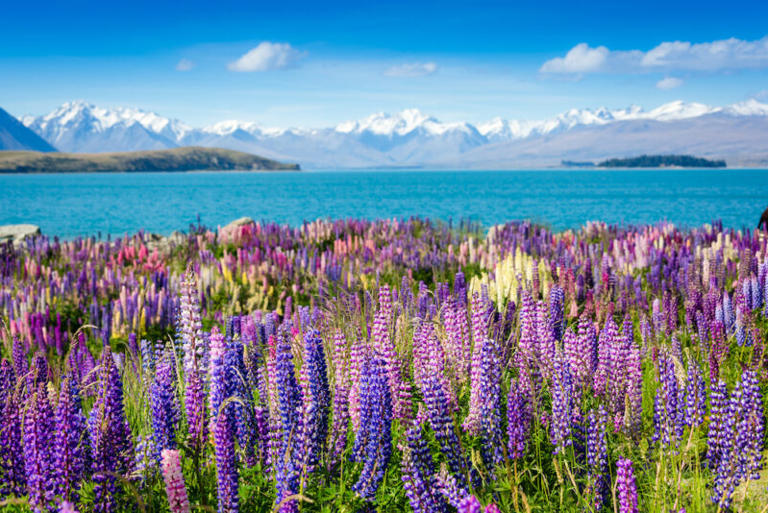
If You Seek
Across our incredible country, you can find everything from untamed wilderness to rich culture. There's more to find in Aotearoa New Zealand.

Must do New Zealand experiences
Explore more things to do in New Zealand >
Find things to do
Start planning your new zealand holiday, travel advice and safety, visas and entry requirements long-arrow-right.
Learn more about the available visa options and entry requirements into New Zealand.
COVID-19 travel safety information long-arrow-right
Find out more about New Zealand's COVID-19 travel safety and information.
Flights to New Zealand long-arrow-right
Find more information on finding flights to New Zealand.
Travelling around New Zealand
Driving long-arrow-right.
Get familiar with driving in New Zealand.
Public transport long-arrow-right
Find out how to get around without hiring a vehicle.
Accommodation long-arrow-right
Explore different accommodation options.
Domestic flights long-arrow-right
Flights are easy to catch and are no longer than two hours.
- Share on Facebook
- Share by email
Nomadic Matt's Travel Site
Travel Better, Cheaper, Longer
The Ultimate New Zealand Road Trip Itinerary
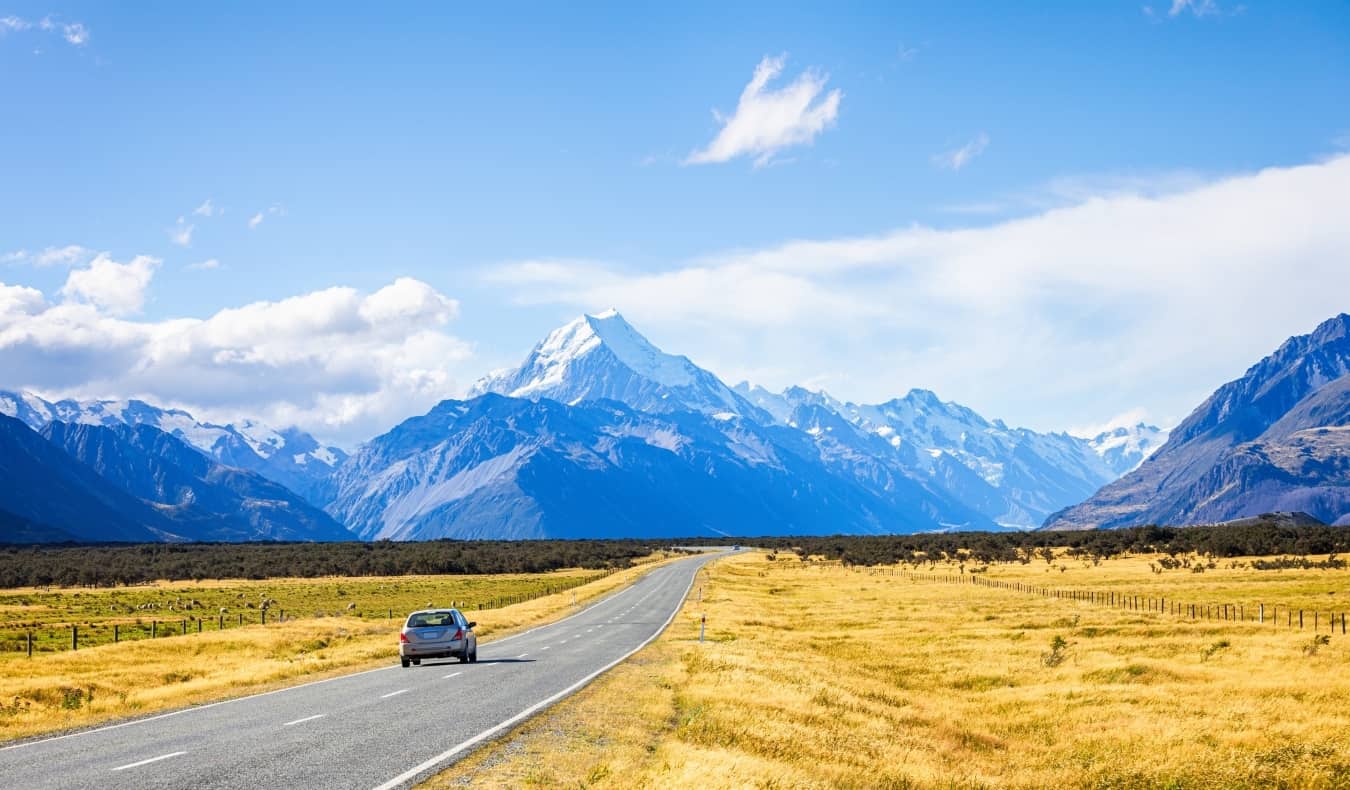
With its snow-capped mountains, ancient glaciers, rolling verdant hills, incredibly friendly locals, and abundant world-class wine, New Zealand is as wonderful as you’ve heard. In fact, take what you’ve heard and times it by ten. Because New Zealand will simply blow your mind when you visit.
People think because it’s a small country, you can see it all in two weeks. Unfortunately, that’s not true. There’s a lot to do here. From the north island to the south island, you need a lot of time here to see the highlights. You could literally fill months with activities and still only scratch the surface. New Zealand may be small but it punches above its weight with things to do.
But what if you don’t have months? What do you do then? What route do you take? What island should you start with? Where do you go?
Or what if you do have a month to spend? Then what? Where do you begin planning your New Zealand itinerary?
Below are my suggested itineraries that can help you plan your New Zealand road trip for maximum efficiency. Whether you have two weeks, one month, or even longer, these itineraries will ensure that you see the highlights and get off the beaten path.
New Zealand Road Trip Itinerary
New Zealand Itinerary Highlights
Choosing the right vehicle.
- Two-Week North Island Route
- Two-Week South Island Route
- One Month Itinerary
- Things to Remember
Note : Two weeks is the minimum recommended time for a New Zealand road trip. There’s so much to see and do here, yet you still don’t want to be rushed or spend all your time in the car. If you only have two weeks, focus on one island.
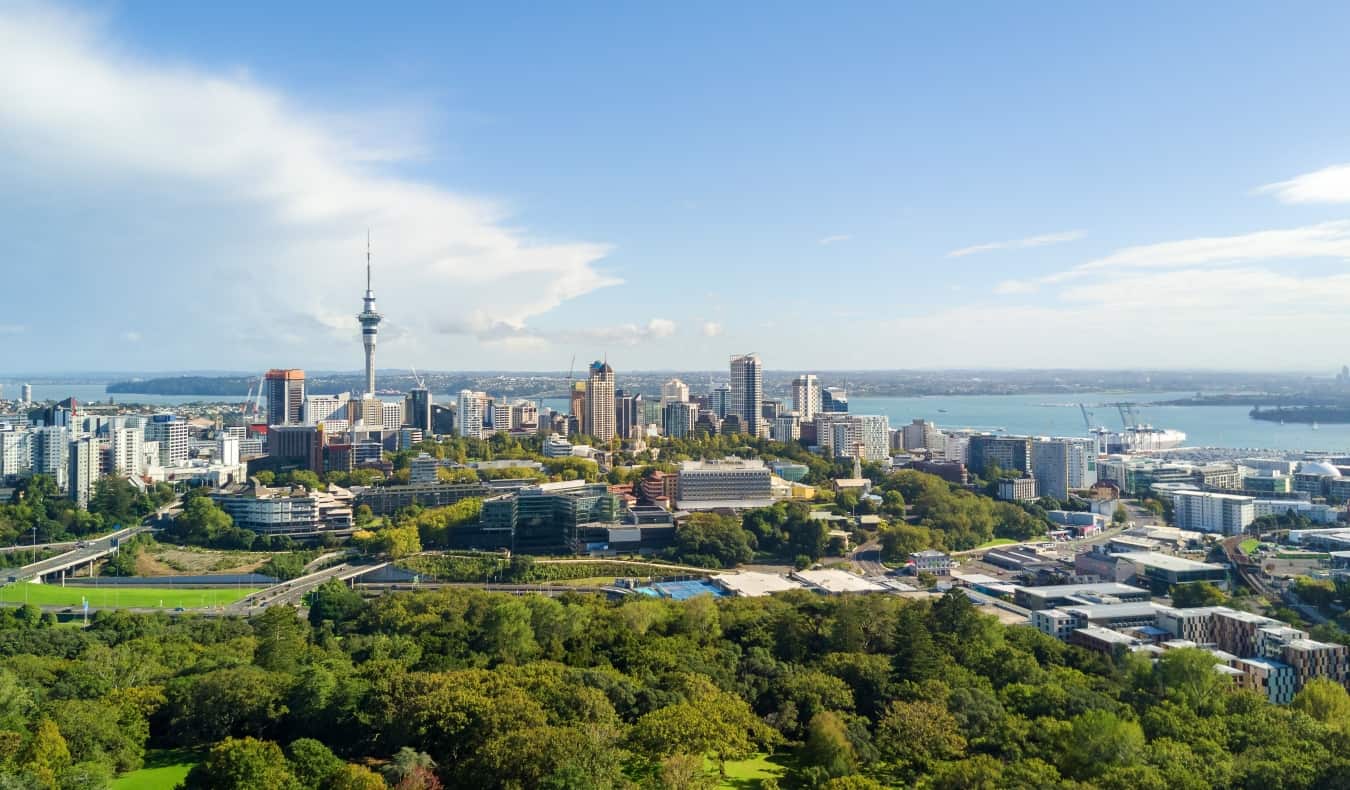
- Hike the Franz Josef Glacier
- See the Waitomo Glowworm Caves
- Visit Hobbiton
- Experience a Maori Cultural Show
- Hike the Tongariro Alpine Crossing
- Go skydiving or bungy jumping
- Explore Fiordland National Park
Want more info on these activities (and many others)? I cover them all below!
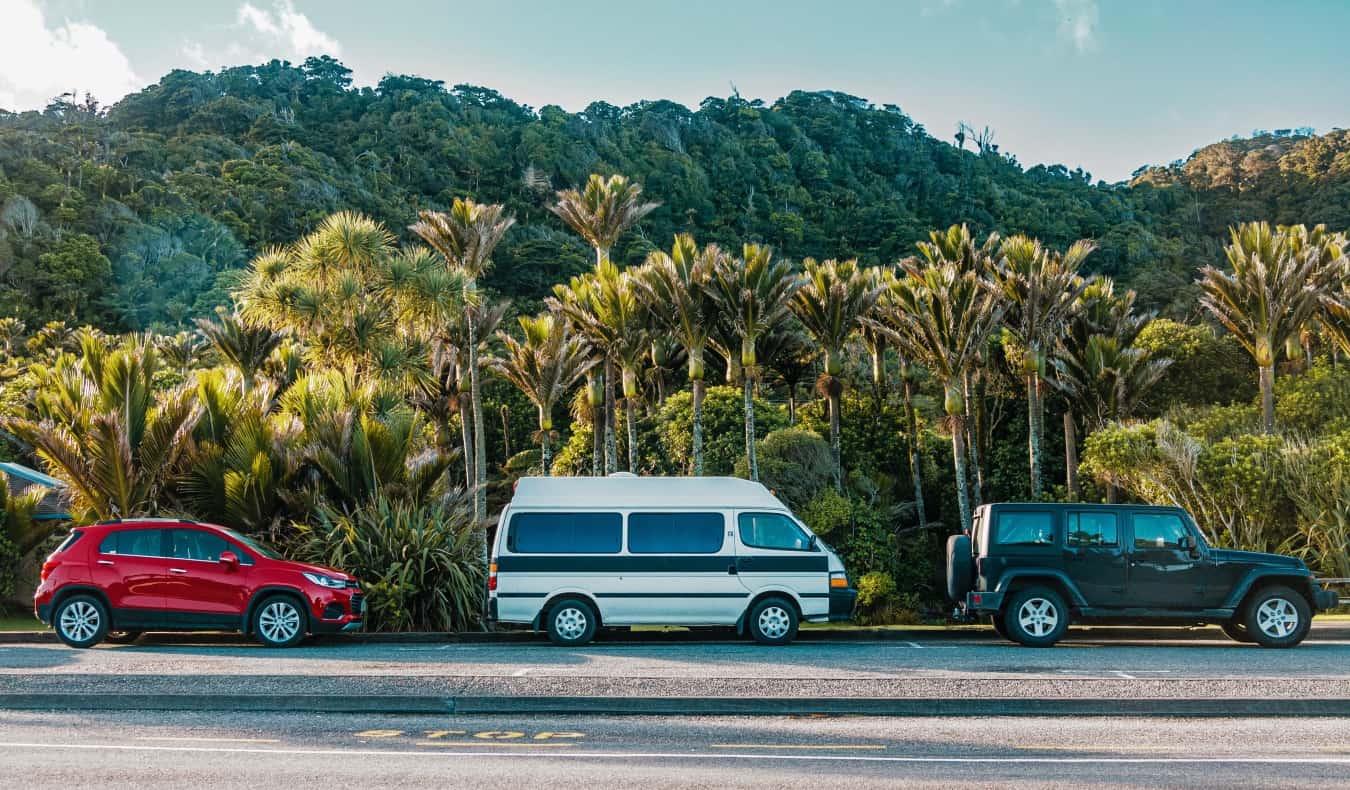
- Travellers Autobarn
- Wicked Campers
Prices vary a lot. Your daily rate will change depending on where you pick up the vehicle, if you are dropping it off at a different place, how long you are renting it for, how far in advance you book, and when you book (in the high season, prices seem to double!).
If living out of a van for a few weeks doesn’t sound like your idea of a fun time, simply rent a normal car and book accommodation along the way. To book a car, check out Discover Cars , which searches rental agencies big and small to find the best deals.
If you plan to drive New Zealand, you can use this widget to get a free quote for your car rental:
New Zealand Road Trip Itinerary: A Two-Week North Island Route
Days 1–2: auckland.
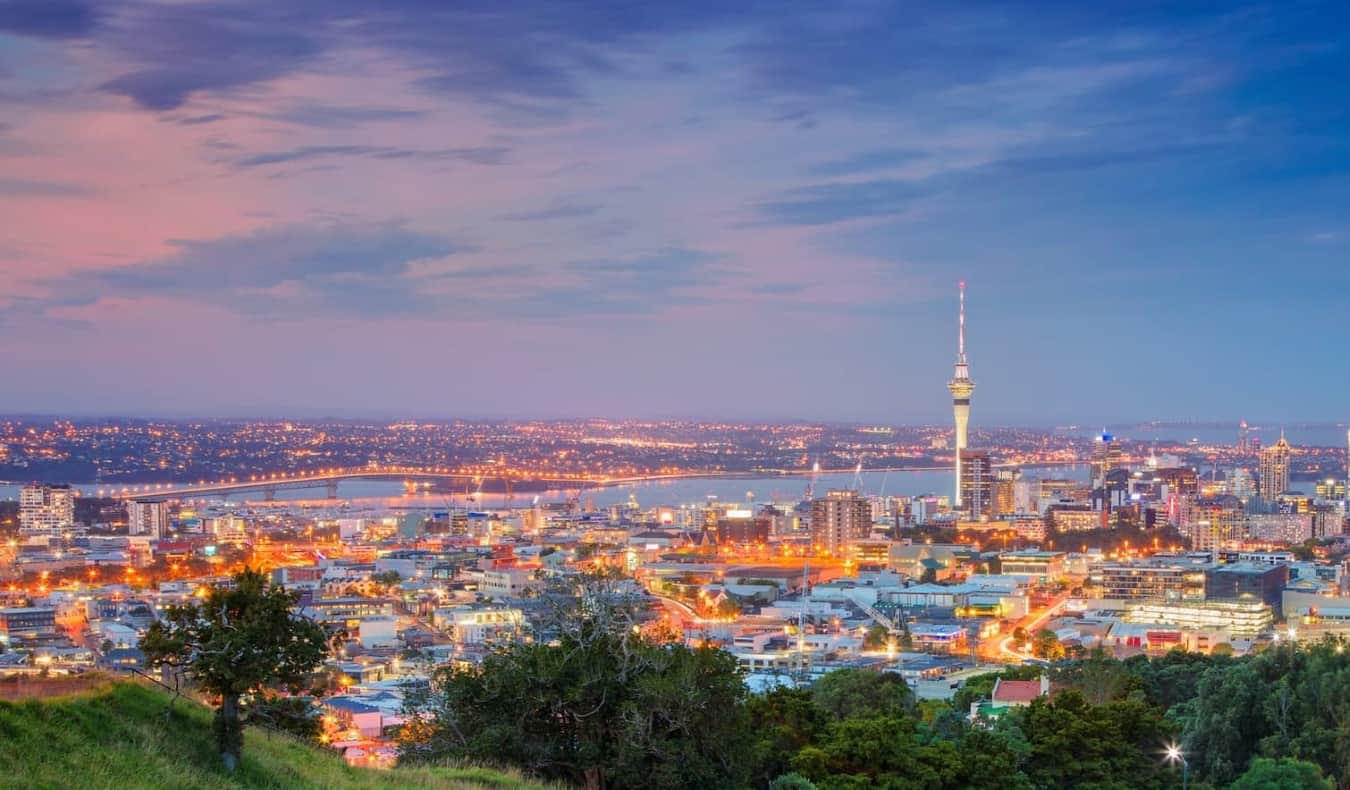
Spend some time hanging out on the Auckland Domain, go snorkelling on Goat Island , and if you love wine like I do, take a wine tour on Waiheke Island .
For a list of more things to do in Auckland, check out my guide to the city!
Where to Stay : The Albion – This historic accommodation began as a “pub hotel” in the 19th century. Today there’s still a nice old tavern in the hotel. The rooms are comfortable and the place is quiet.
Days 3-4: Bay of Islands
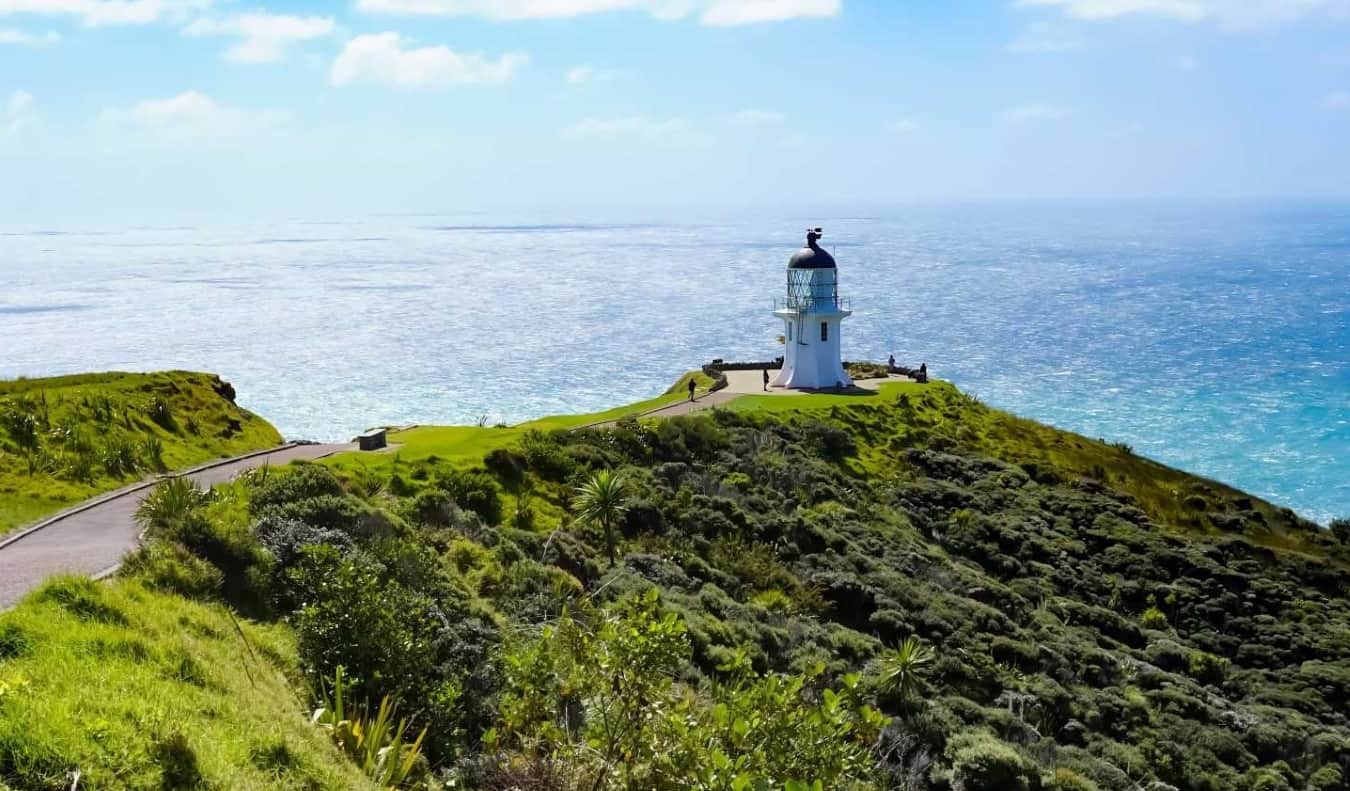
While you’re here you can visit the Waitangi Treaty Grounds (one of the most important historical sites in the country), explore Cape Reinga (the northernmost point of New Zealand), and see wild dolphins on a boat tour .
For a list of more things to do in Bay of Islands, check out my complete guide!
Where to Stay : Haka Lodge – Located in Paihia, Haka Lodge has a lot of common spaces, a large kitchen, and great views over the harbor. Everything is super clean and the beds are comfortable. It’s a good place to meet people.
Day 5: Hobbiton
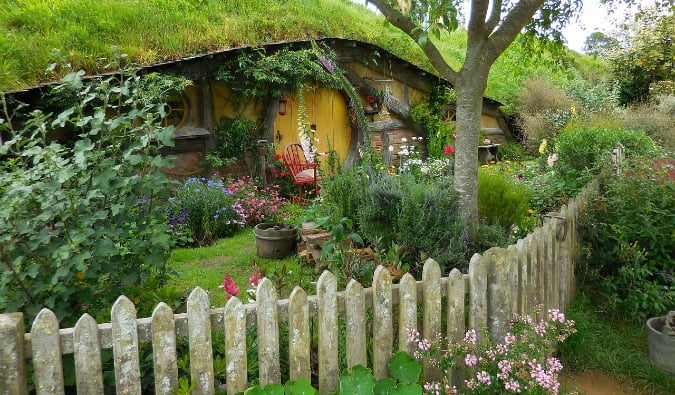
To see Hobbiton, you’ll have to take a tour that starts with a drive through the owner’s 505-hectare (1,250-acre) sheep farm, offering epic views over the Kaimai Range. From here, you can explore Bag End, wander around the hobbit holes, and visit the Green Dragon Inn. Tours start at 89 NZD.
Where to Stay : Cosy Country Stay B&B – This is a cute bed-and-breakfast located in Matamata just a few miles from Hobbiton. The hosts are fantastic, there’s complimentary breakfast, and the property is quiet and tranquil, with roaming cats and goats for added atmosphere.
Days 6–7: Rotorua
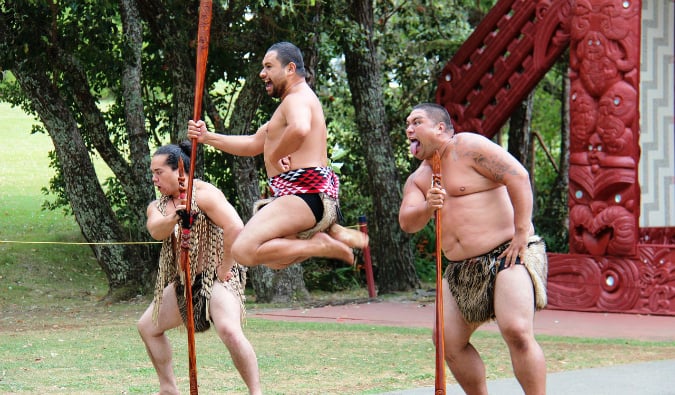
The Maori were the original inhabitants of New Zealand, having arrived from Polynesia between 1320 and 1350. This is the best area to learn about Maori history and culture . Don’t miss seeing a Maori cultural show while you’re here (the Te Pa Tu Maori Cultural Experience is the one I attended).
The region is also known for its geothermal activity, and the dynamic landscape makes for exciting nature walks, trips to smelly sulfuric geysers, and soaks in luxury spas with water from the hot springs.
Where to Stay : Rock Solid Backpackers – This is a centrally located hostel with an expansive array of facilities, including a cinema, a bar, a communal kitchen, and even a rock-climbing wall.
Day 8: Waitomo
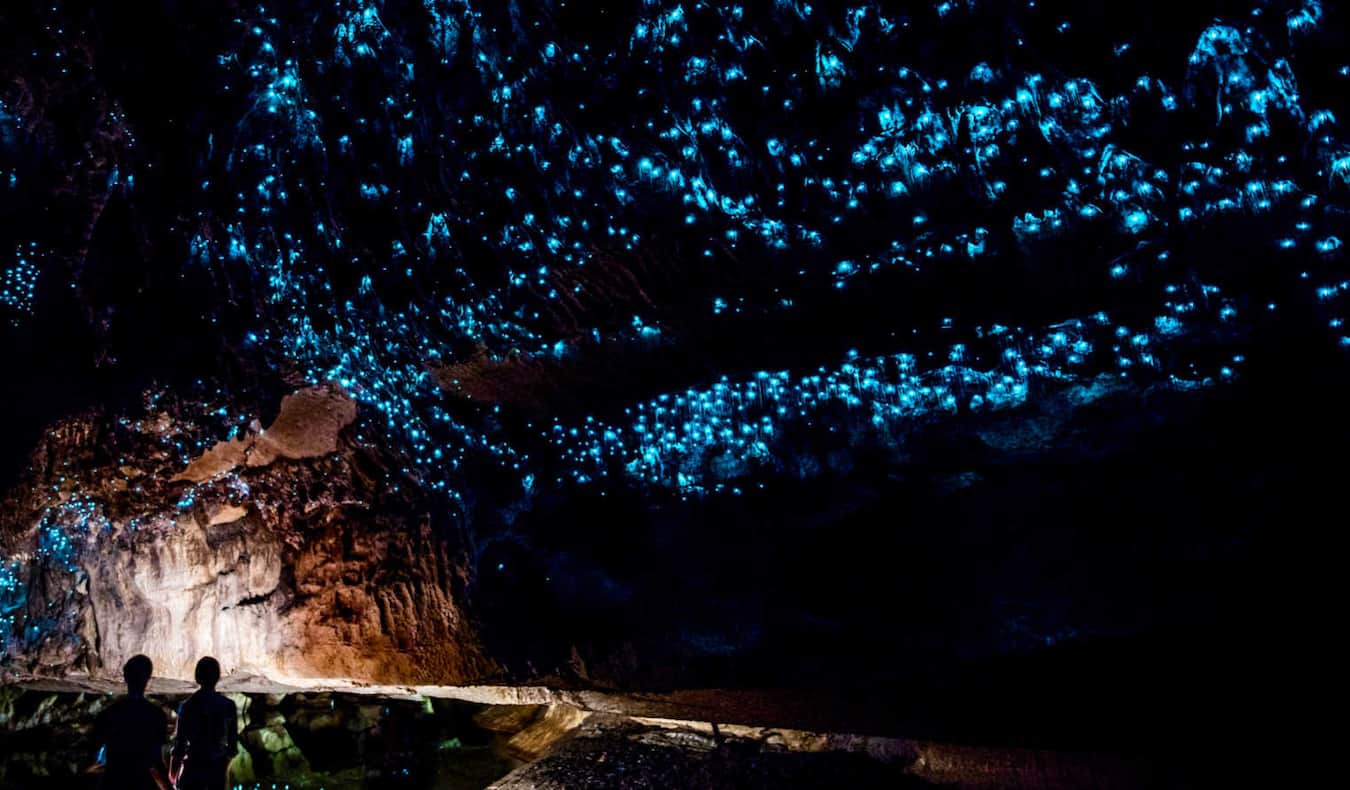
You can walk, abseil, or float down an underground river to see them. A 45-minute rafting trip is the standard visit, but if you want to go abseiling (also known as rappelling) there’s a five-hour option too. Prices start at 55 NZD for a boat tour and 195 NZD for extended tours with abseiling.
For a complete list of things to do in Waitomo, check out my guide on the town.
Where to Stay : Juno Hall – Close to the glowworm caves, Juno Hall has a swimming pool and tennis court on-site. There’s a large kitchen as well as an outdoor grill for barbecuing.
Days 9-10: Taupo
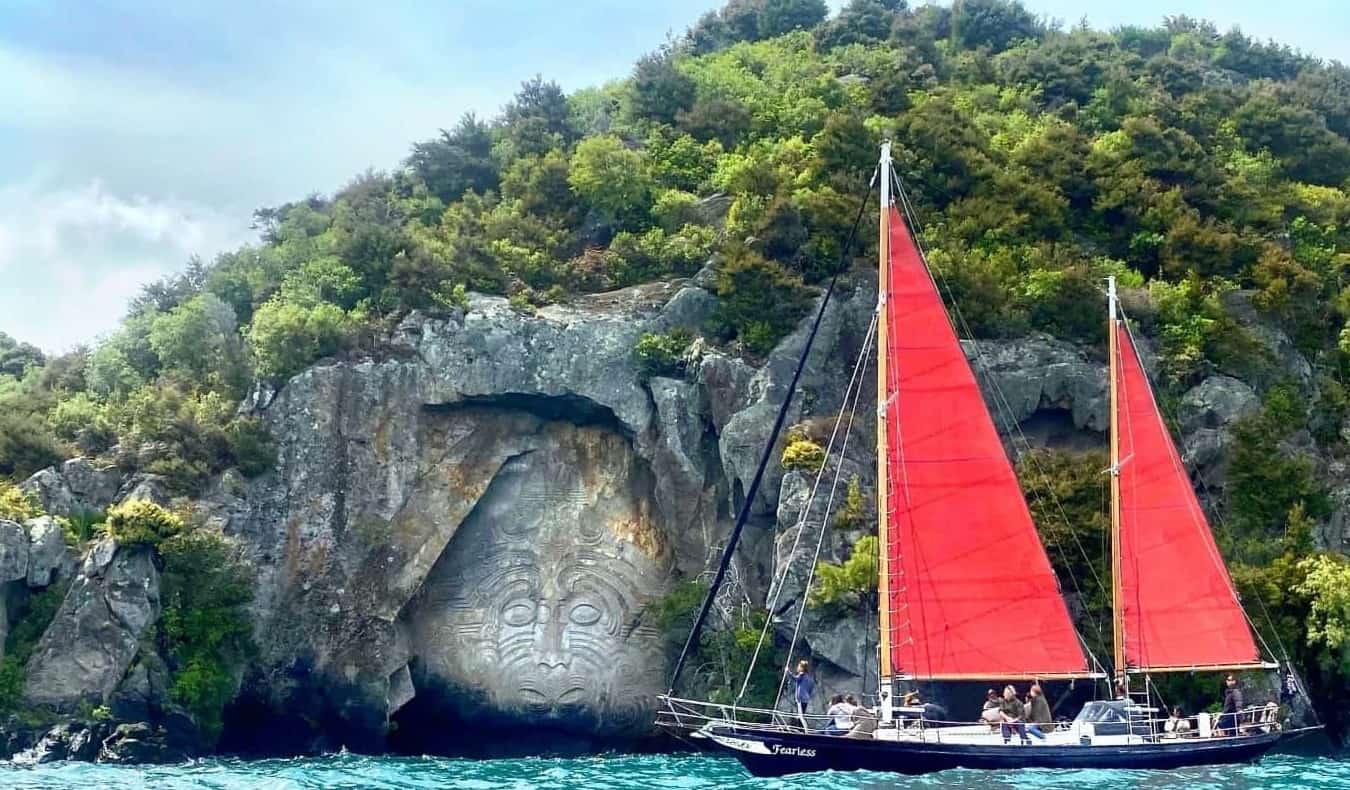
It’s also one of the best places to go skydiving in New Zealand thanks to the views and clear skies (though I didn’t do this while I was there).
I loved the small-town feel of Taupo, sitting by the lake, and being able to do so many hikes. I could have stayed here for weeks.
For a list of more things to do in Taupo, check out my guide!
Where to Stay : Finlay Jack’s has a huge kitchen, a big common room, a spacious patio with BBQs, fun and welcoming staff, bike rentals, and a super friendly hostel dog. Everything in the hostel is updated, with new, modern pod-style beds so you can get a great night’s sleep. In short, everything a backpacker or budget traveler would want from a hostel.
Day 11: Tongariro Alpine Crossing
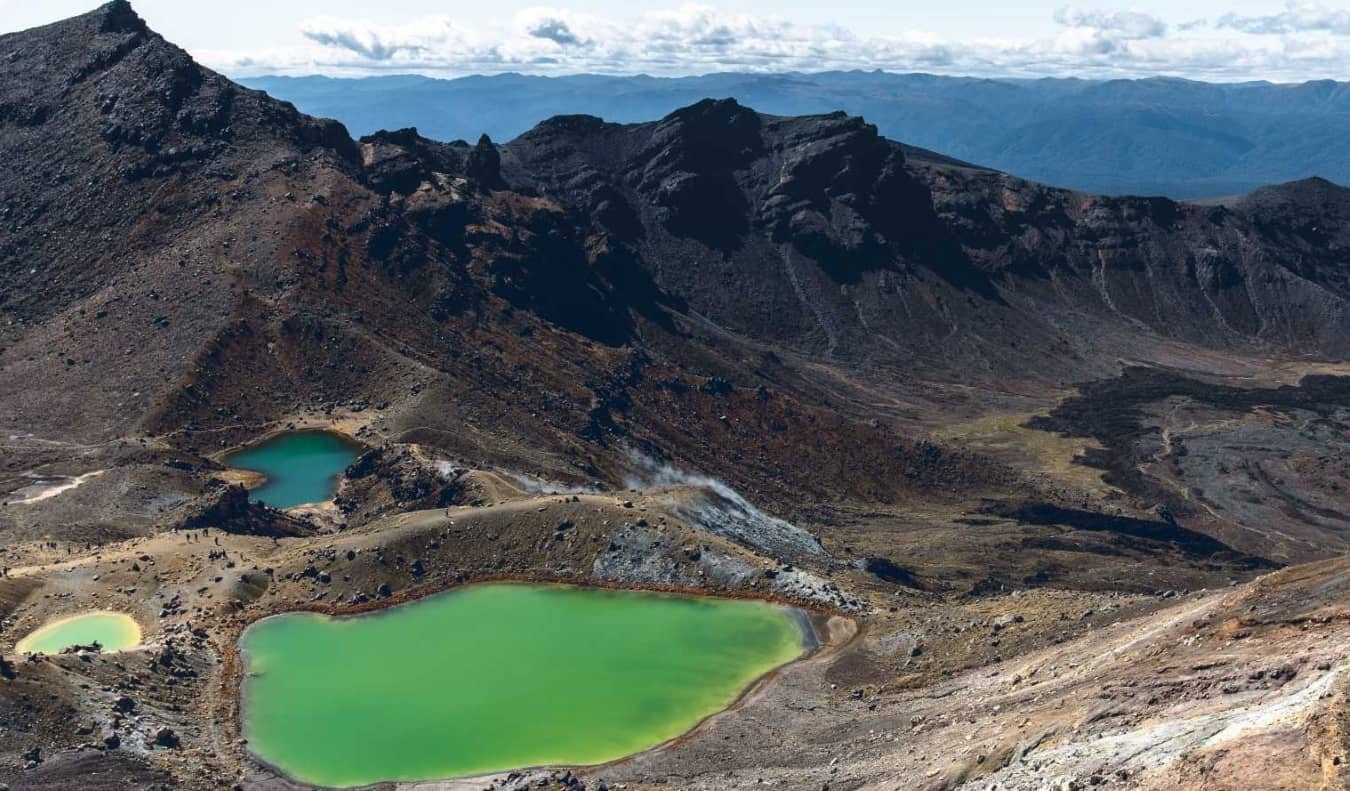
As you wind your way through Tongariro National Park, you’ll walk through volcanic terrain (including where Mordor in Lord of the Rings was filmed), past high peaks and sulfur lakes, and end the day in a dense forest. It’s easy in parts (the beginning and end) and steep in others (especially the portion after “Mount Doom”), so you’ll get a good mix of difficulty levels.
Be sure to bring water, sunscreen, a hat, toilet paper, and a sweater or jacket (the weather can change rapidly). Expect to pay around 50 NZD per person for a round-trip shuttle to and from the trail or 325 NZD for a full-day guided hike .
Where to Stay : National Park Alpine Lodge – Located in National Park Village (the best place to stay if doing the trek), this lodge features budget-friendly private rooms, a communal kitchen and common area (with a cozy fireplace for cold nights!), and a helpful staff.
Otherwise, you can stay in Taupo, which is where people usually base themselves when they do this trek.
Days 12–14: Wellington
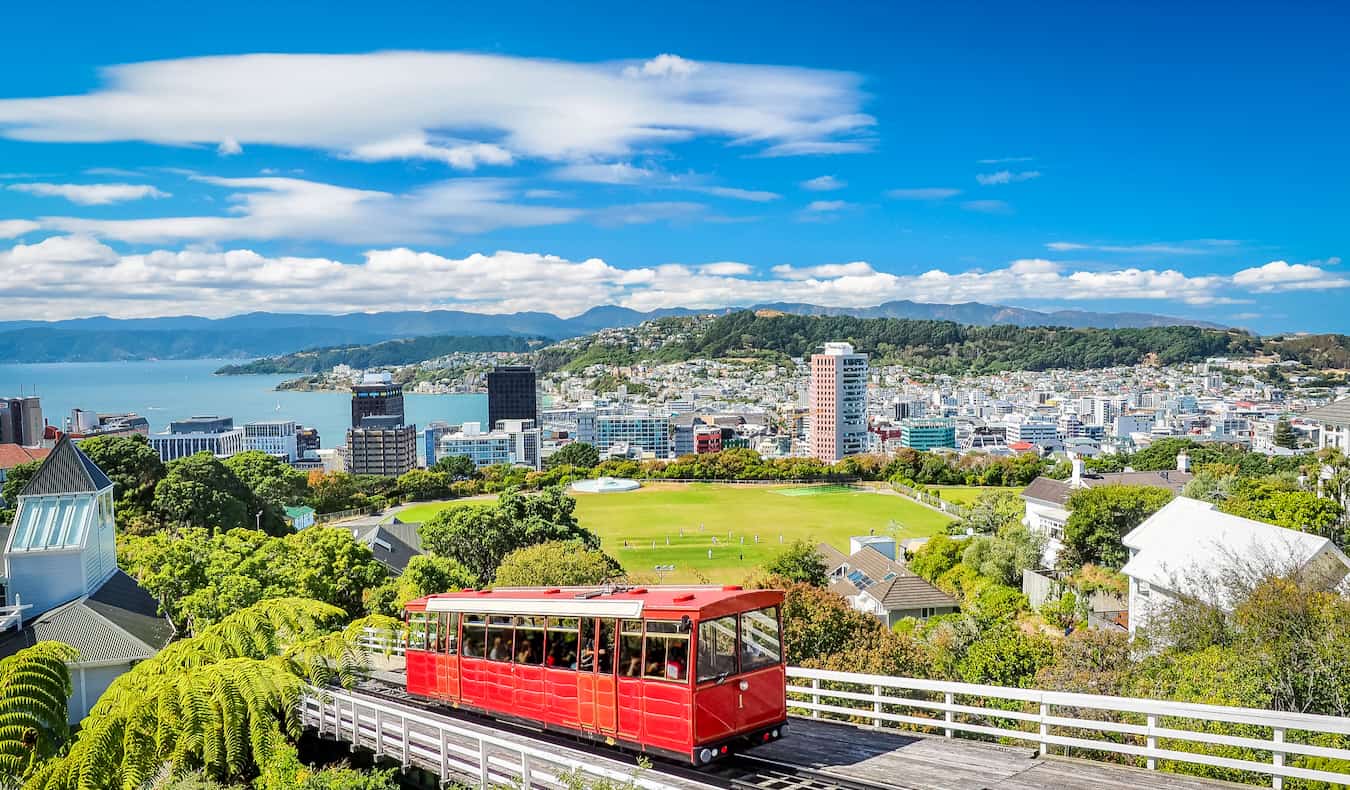
Be sure to visit Te Papa (New Zealand’s national museum), ride the cable car to the Cable Car Museum, and tour Weta Workshop (an Academy Award–winning props and special effects studio).
For a list of more things to do in Wellington, check out my detailed guide to the city.
Where to Stay : The Marion – This boutique hostel is just blocks away from everything you’ll want to see. It’s cozy, with comfy beds and large bathrooms, and the staff really go out of their way to make you feel welcome. It’s a clean, social spot to relax and meet other travelers.
If you’ve only got two weeks and are ending your 14-day New Zealand itinerary in Wellington, you can fly out of the airport here to wherever you need to go next. If you have more time, you’ll take the car ferry (around 3.5 hours) to Picton on the South Island to continue your trip (in which case, follow the following two-week South Island itinerary, but in reverse).
New Zealand Road Trip Itinerary: A Two-Week South Island Route
If you choose the South Island for your two-week road trip, start in Queenstown. Even if your international flight lands in Auckland on the North Island, you can easily get a cheap flight to Queenstown. Queenstown also has direct flights to many major cities in Australia if your trip to New Zealand is part of a larger adventure in Oceania.
Days 1-3: Queenstown
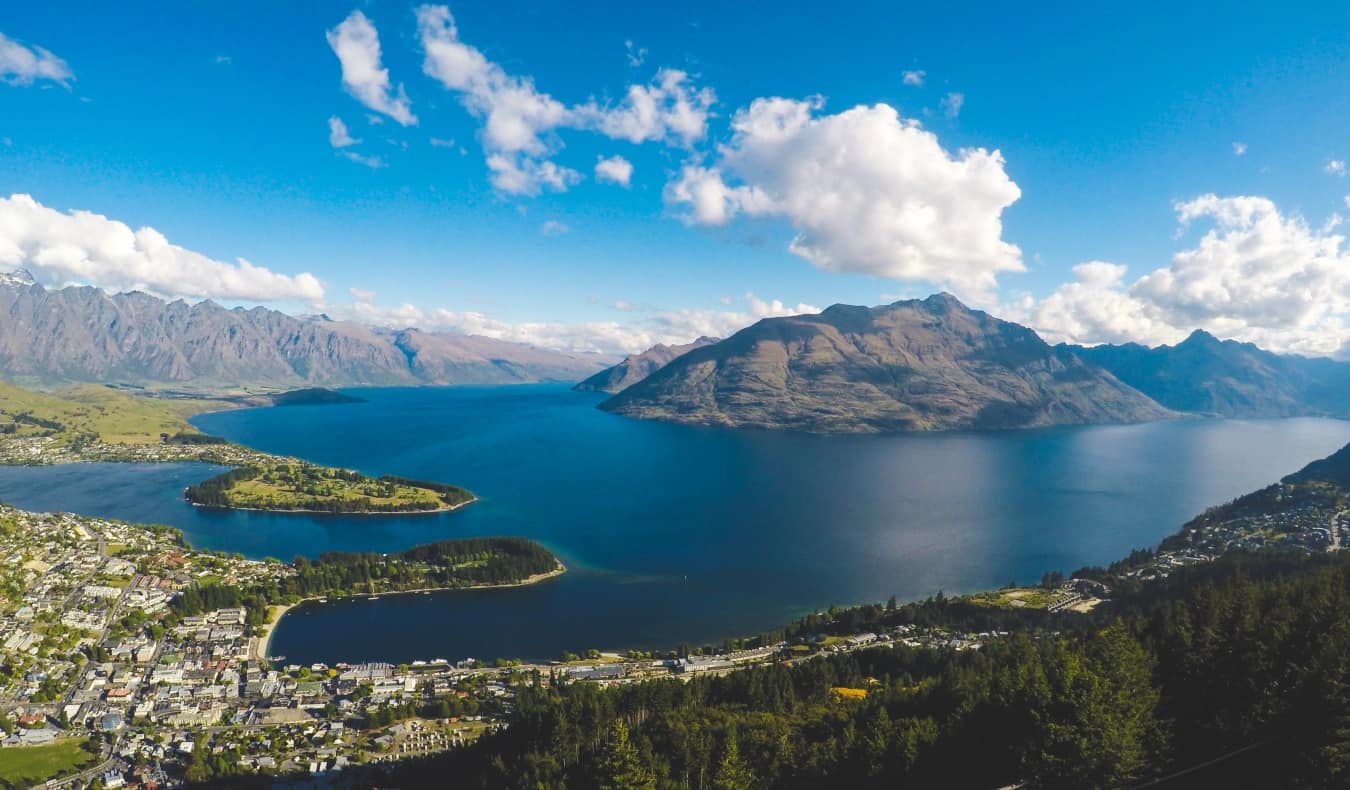
Known as “the adventure capital of New Zealand” (it’s the launching pad for every sort of adventure activity you can think of), Queenstown lives up to the hype. Even though it has become hugely popular, I cannot express my love of Queenstown enough. I love sitting by the lake, watching the sunset with a bottle of wine, and hiking the nearby trails.
Explore nearby vineyards, enjoy the waters of Lake Wakatipu, or go bungy jumping, ziplining, rafting, or skydiving . There’s a lot to do here.
For a list of more things to do in Queenstown, check out my detailed city guide.
Where to Stay : Nomads Queenstown – Most rooms have balconies, the showers have excellent water pressure, and the pillows are thick. There are activities every night and a free dinner and quiz night on Sunday. Overall, this is a great place to stay.
Days 4-6: Fiordland
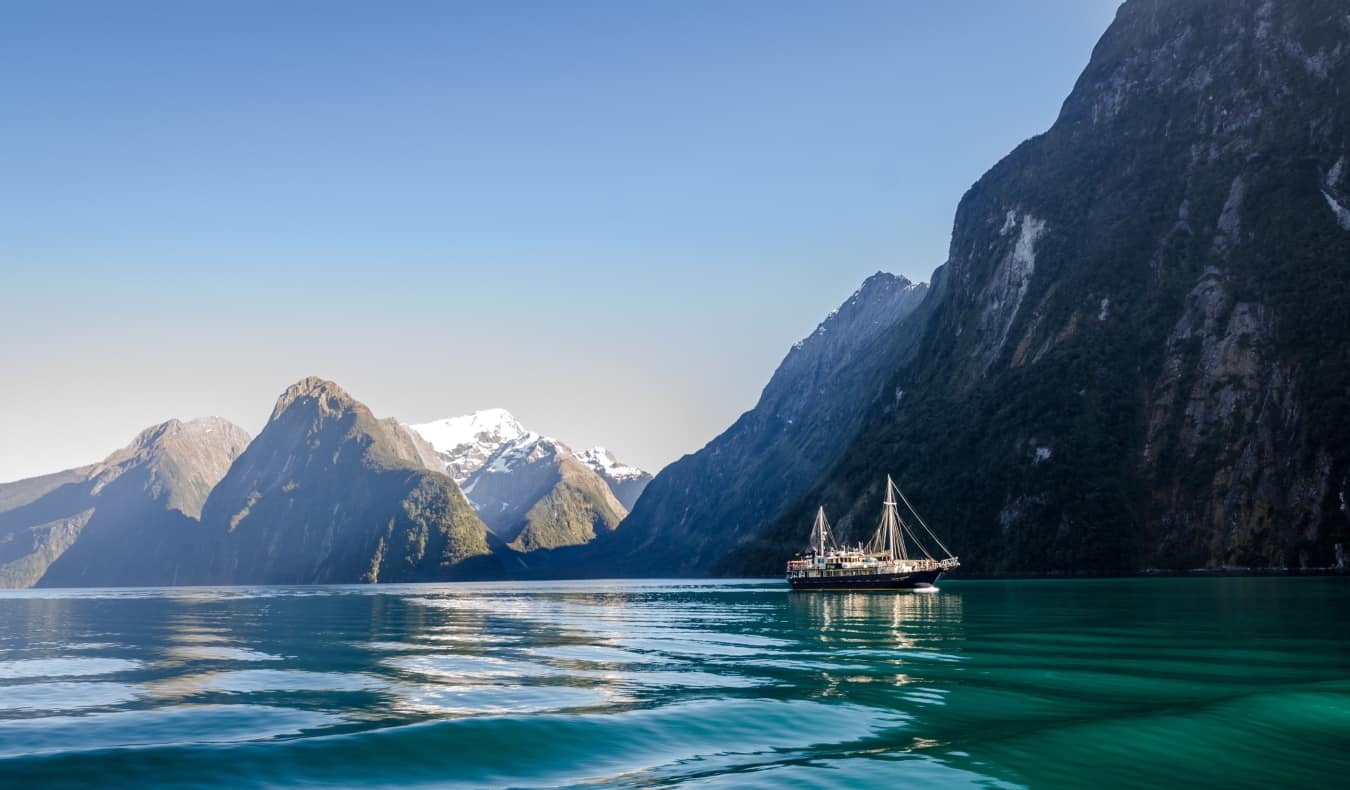
Milford Sound is an amazing fjord that’s best known for the towering Mitre Peak and its surrounding rainforest. You can walk the wooded trail along the sandy shore for perfect views of the peak, or take the Chasm Walk on the Cleddau River to get close to powerful waterfalls.
The fjord itself is home to seal and penguin colonies. You can often see pods of dolphins frolicking in the waters too. Explore by boat and check out the Milford Discovery Centre and Underwater Observatory to see rare black coral and other underwater life. Southern Discoveries is the only company doing cruises that include the Underwater Observatory. Cruises start from 165 NZD .
While less well-known than Milford, Doubtful Sound is the deepest and second-largest fjord in the country. You can only get to Doubtful via boat. A wilderness cruise of Doubtful Sound costs 299 NZD.
Where to Stay : Milford Sound Lodge – This is quite literally the only place to stay within about 50 kilometers (31 miles). It’s not cheap, but the views are unmatched, the complimentary breakfast is delicious, and the contemporary rooms are cozy yet modern. Otherwise, if you have a car, you can stay in the closest town, Te Anau where you’ll find cheaper accommodation.
Days 7-8: Wanaka
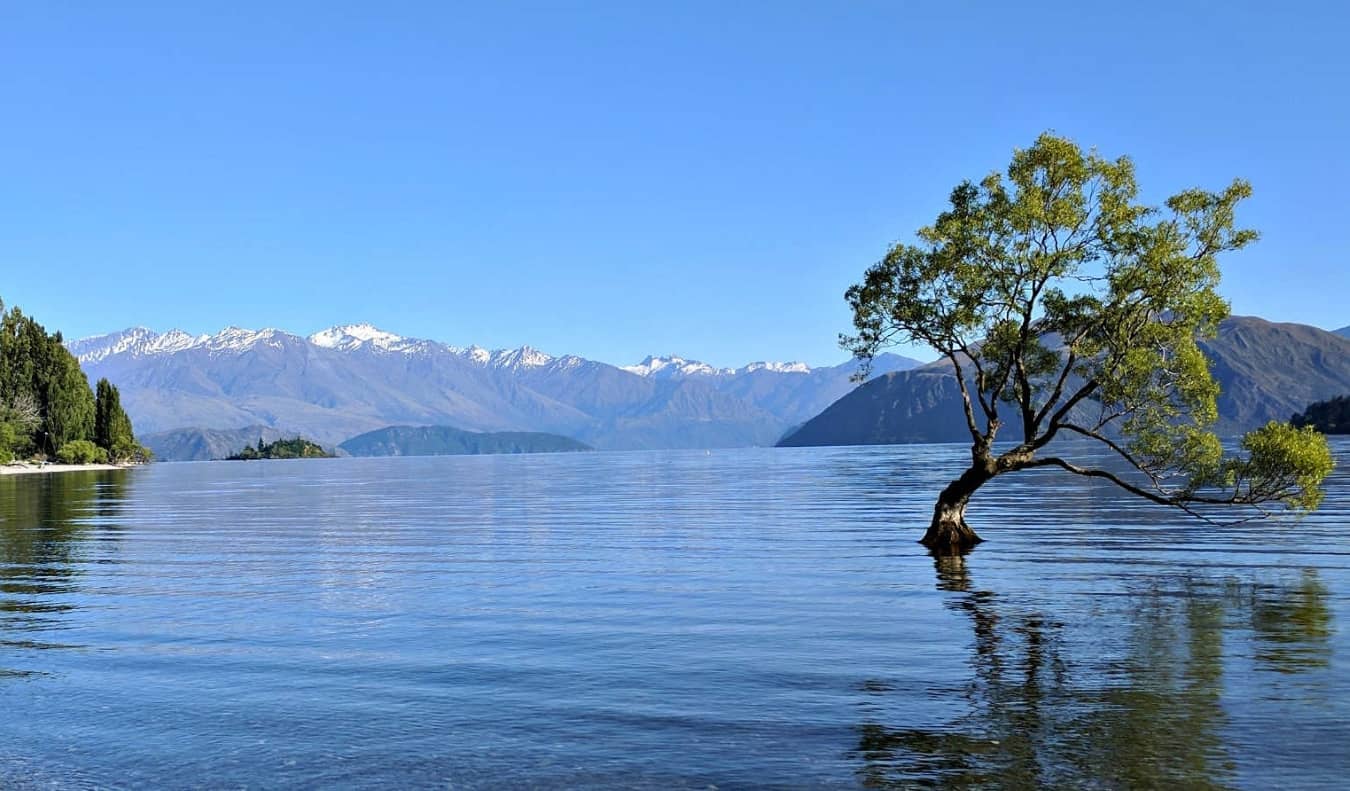
For a list of more things to do in Wanaka, check out my detailed city guide.
Where to Stay : Mountain View Backpackers – This hostel has a huge outdoor space with a grill, space to lie in the sun, and a big table to congregate around (there were many enjoyable nights spent drinking wine outdoors).
Day 9: Franz Josef Glacier
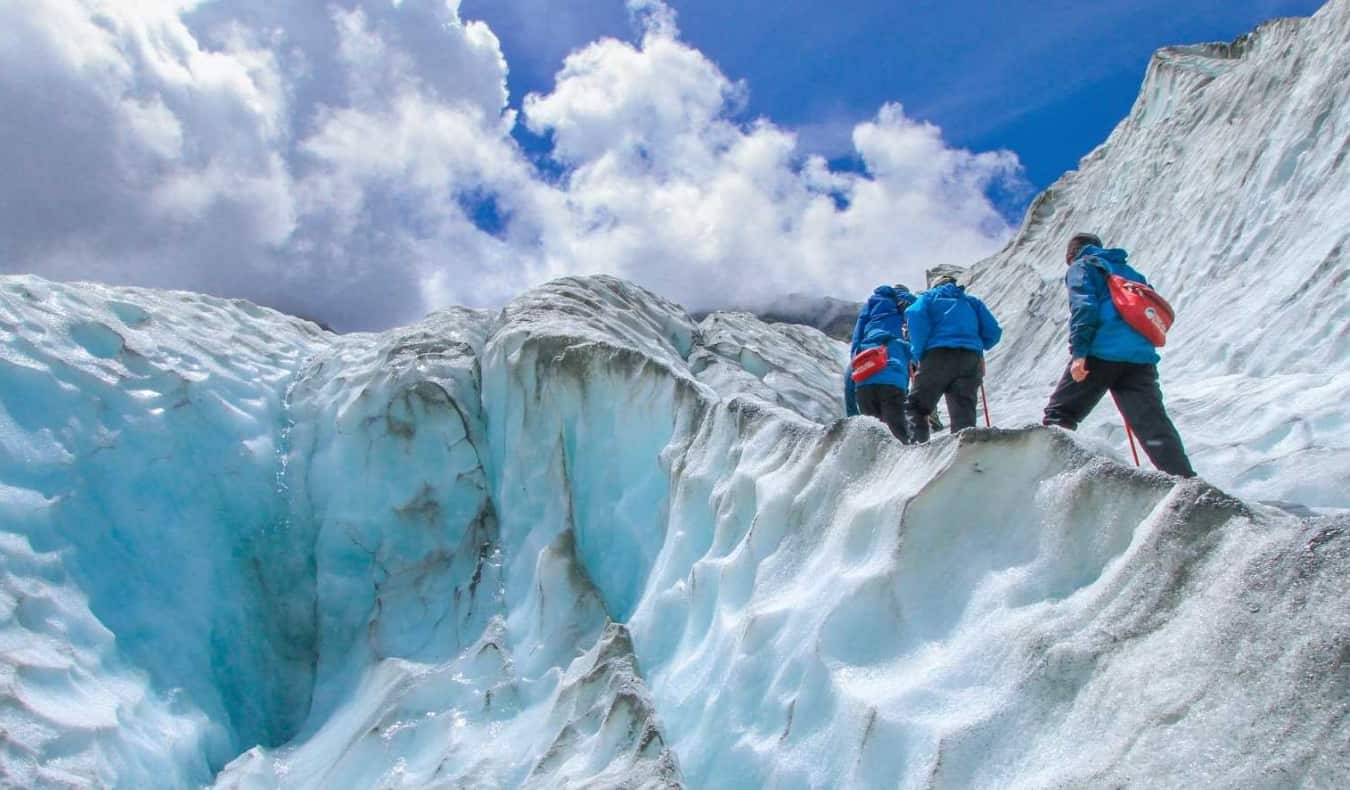
Hiking the glaciers here is an unforgettable experience. Sadly, because they have receded and are melting quickly due to climate change, the caves and walks have been shut down. Now, the only way to trek on the glaciers is via heli-hike ( an epic half-day or full-day helicopter/hiking experience ). These are expensive (500 NZD), but the helicopter ride, trekking, and experience as a whole are worth the price in my opinion.
Conversely, you can just hike to the glacier face and take photos from a distance. There are tons of viewing points (and you’ll see photos of just how far the glaciers have receded over the years).
Where to Stay : Chateau Backpacker & Motels – Just a ten-minute drive from the glacier, this lodging offers free homemade soup every night, free breakfast (homemade waffles and pancakes!), two communal kitchens, and a hot tub.
Days 10–11: Abel Tasman National Park
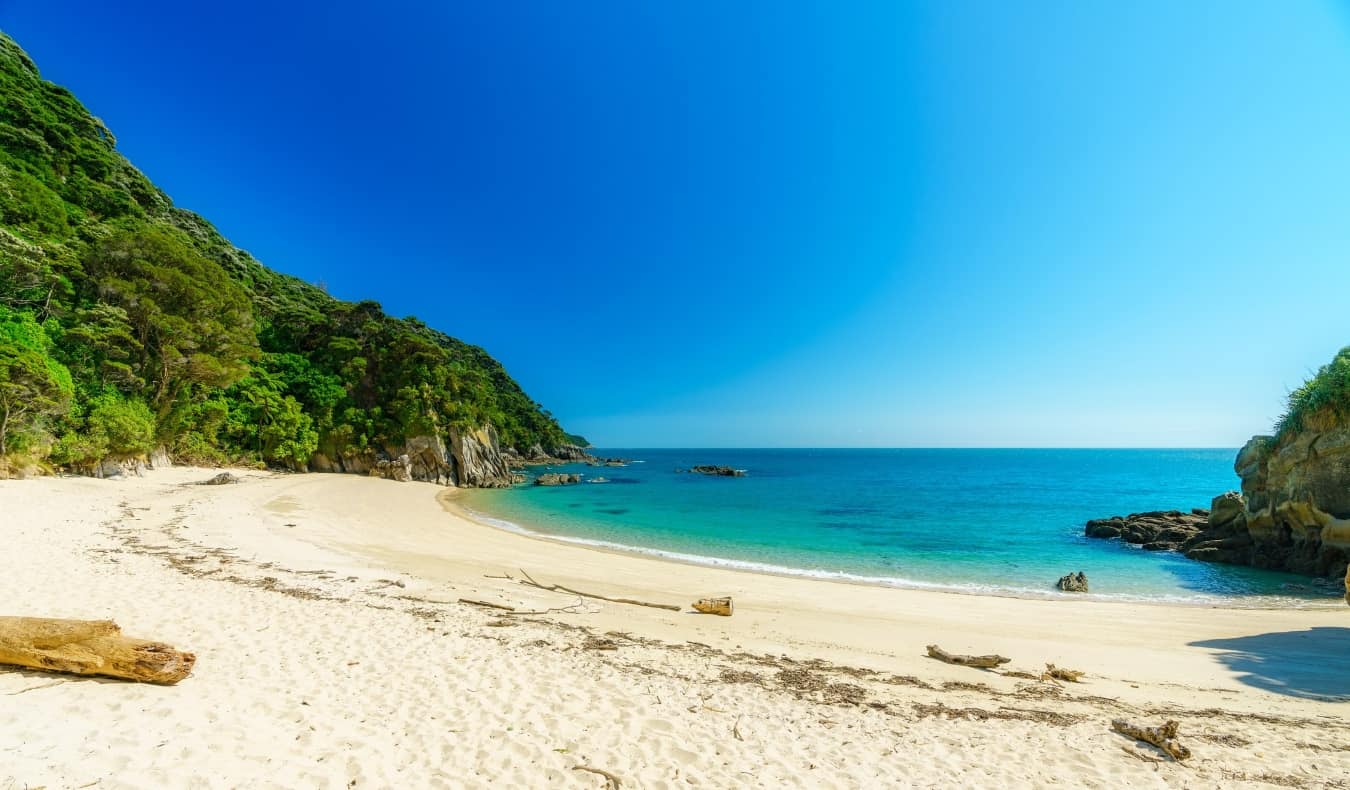
The best way to see the park is by kayak, so you can explore the little coves and beaches that really make the area special. Full-day rentals start at around 110 NZD, or you can join a guided kayaking tour starting at 190 NZD. You can also take a scenic cruise around the park for 95 NZD.
Where to Stay : Marahau Beach Camp – Offers both dormitories and small private cottages, a communal kitchen, and a seasonal restaurant. There are also tent and campervan sites if you want to save money.
From here, pick your last stop: either drive onwards to Christchurch and end there or take the ferry over to Wellington (an adventure in and of itself!) and end there. Either way, you’ll be able to catch a cheap and quick flight back to Auckland for your international flight home.
If you’re heading to Christchurch, keep reading. If you’d like to visit Wellington, scroll back up and follow the tips in the North Island itinerary section.
Days 12-14: Christchurch
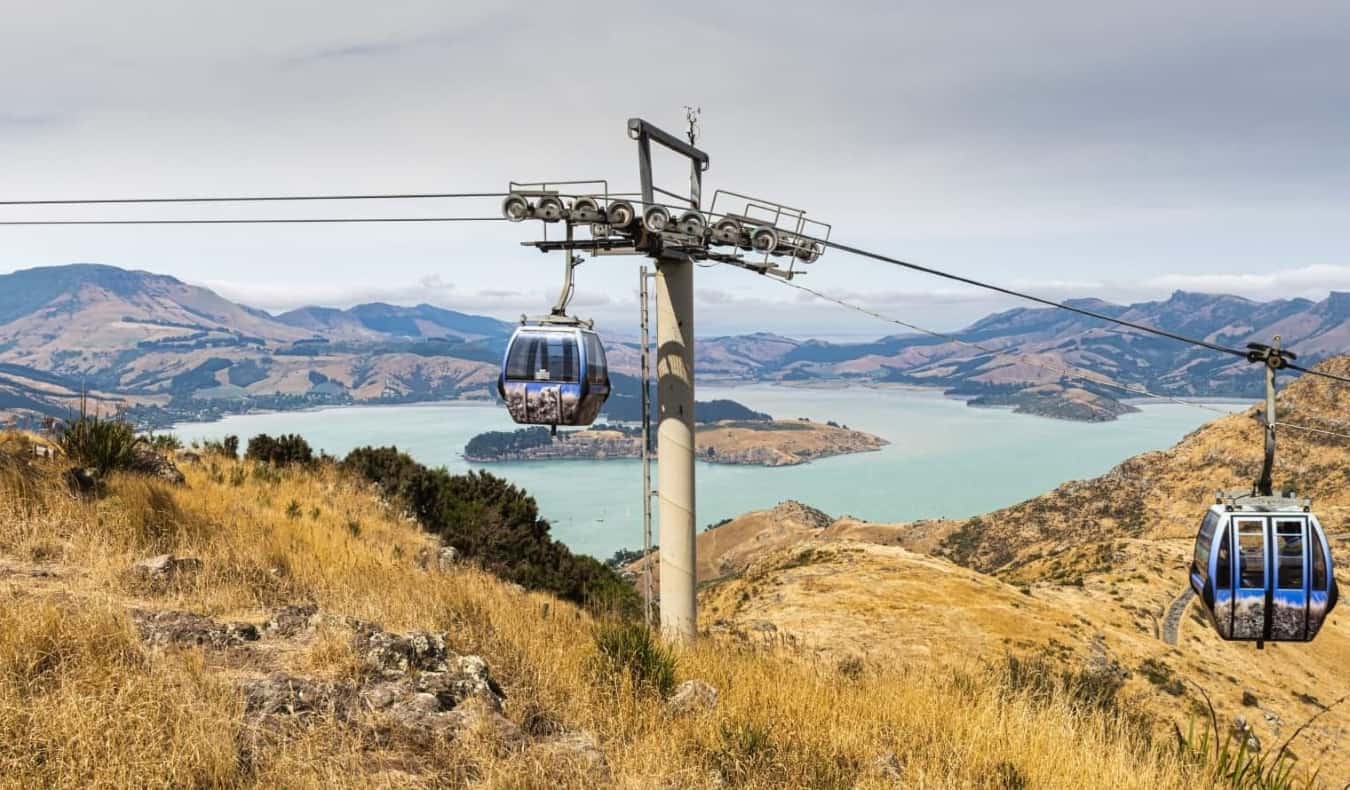
While there’s not a lot “to do” per se, the vibe here is really relaxed, and it’s worth not rushing through if you aren’t short on time. Be sure to ride the gondola , visit the Canterbury Museum, and tour Quake City (a unique and interactive museum that recounts personal stories from the 2010 and 2011 earthquakes).
For a list of more things to do in Christchurch, check out my city guide.
Where to Stay : Urbanz – This is an awesome hostel located in downtown Christchurch with friendly staff and a huge kitchen. There’s also a hostel bar, a pool table, fast Wi-Fi, laundry, movies, and comfy couches, as well as a parking lot.
If you need to get back to Queenstown, it’s a 6 hour drive from here. Alternatively, you can fly to Auckland. The flight is just over an hour and tickets can be found for as low as 65 NZD if you book in advance.
New Zealand Road Trip Itinerary: One Month
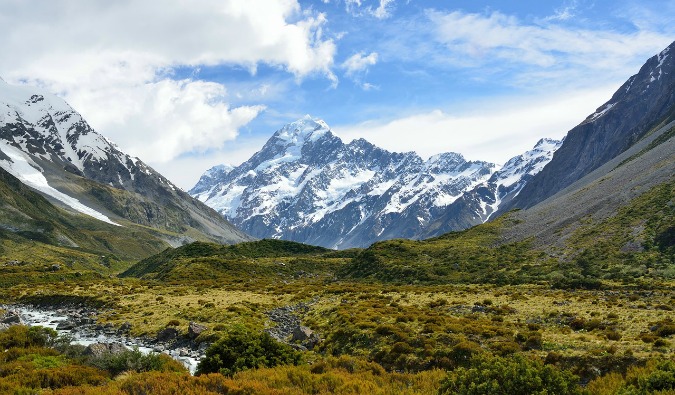
Again, these are just recommended itineraries — I encourage you to adapt as needed!
Things to Remember When Road-Tripping New Zealand
To help you make the most of your road trip, please remember the following rules:
- Traffic flows on the left here (not the right, like in the US or Canada).
- You must always park your car in the direction that traffic is going (or risk a fine).
- There are plenty of pull-off points for taking photos — use them instead of stopping at a random spot along the side of the road, which can be quite dangerous given how tight the roads are here.
- Roads here are winding, so remember that it might take longer than you expect to cover a particular distance.
- As long as your current and valid driver’s license is in English, you don’t need an International Driver’s Permit.
- If you’re traveling by campervan, use the CamperMate app to find nearby campsites, gas stations, and dump stations.
New Zealand is an unforgettable country, loaded with epic landscapes, friendly Kiwis, and a rich culture. Due to its remote location, visiting is usually a once-in-a-lifetime trip for most travelers. Taking a road trip is the best way to make the most of your time here, tailoring your itinerary to your own preferences and New Zealand bucket list.
Book Your Trip to New Zealand: Logistical Tips and Tricks
Book Your Flight Use Skyscanner to find a cheap flight. They are my favorite search engine because they search websites and airlines around the globe so you always know no stone is left unturned!
Book Your Accommodation You can book your hostel with Hostelworld as they have the biggest inventory and best deals. If you want to stay somewhere other than a hostel, use Booking.com as they consistently return the cheapest rates for guesthouses and cheap hotels.
If you’re looking for specific places to stay, here is a complete list of my favorite hostels in New Zealand .
Don’t Forget Travel Insurance Travel insurance will protect you against illness, injury, theft, and cancellations. It’s comprehensive protection in case anything goes wrong. I never go on a trip without it as I’ve had to use it many times in the past. My favorite companies that offer the best service and value are:
- Safety Wing (best for everyone)
- Insure My Trip (for those over 70)
- Medjet (for additional evacuation coverage)
Looking for the Best Companies to Save Money With? Check out my resource page for the best companies to use when you travel. I list all the ones I use to save money when I’m on the road. They will save you money when you travel too.
Want More Information on New Zealand? Be sure to visit our robust destination guide on New Zealand for even more planning tips!
Got a comment on this article? Join the conversation on Facebook , Instagram , or Twitter and share your thoughts!
Disclosure: Please note that some of the links above may be affiliate links, and at no additional cost to you, I earn a commission if you make a purchase. I recommend only products and companies I use and the income goes to keeping the site community supported and ad free.
Related Posts
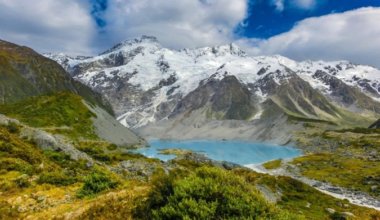
Get my best stuff sent straight to you!
Pin it on pinterest.
- facebook-official
- youtube-play
- pinterest-circled
Travel By Car: How to Plan a Road Trip in New Zealand 🚙 [2024]
Nz pocket guide is 10 years old. thank you for trusting us with your trip for over a decade, everything you need to know about planning a road trip (by car) in new zealand.
So you’ve decided you want ultimate freedom to travel the country at your own leisure by travelling by car in New Zealand . That’s awesome! This guide will tell you all you need to know about travelling by car and how to plan a road trip in New Zealand, from what sort of license you need to road trip budget and more!
This ultimate guide to travel by car in New Zealand is for both those international visitors who want to rent a car in New Zealand and those who are staying in the country for a while and therefore prefer to buy their own. We’ll go over where to rent or buy a car from, important road rules to know for driving on New Zealand’s roads, what costs to expect, how to plan a road trip itinerary and even where you can legally sleep in your car if you want to.
So get ready to hit the road with this guide to travelling New Zealand by car and how to plan the ultimate New Zealand road trip!
What You Need to Drive in New Zealand
Are you able to drive in New Zealand? You can legally drive in New Zealand if you have a full valid driving license written in English. If yours is not in English then it must be accompanied by either an International Driving Permit (IDP) or a translation which has been approved by the New Zealand Transport Agency. You can read more about these in:
- Why You Need an International Driving Permit for New Zealand
- How to Translate an Overseas Driving License for New Zealand
Further Things You Need to Rent a Car
If you are renting a car, you may come across a few other restrictions, such as age restrictions that may mean you have to pay a young driver’s surcharge for being under 25 years old or a mandatory insurance excess reducer. However, this does not apply to all rental companies so be sure to compare your rental options. Check out more on the subject in Age Restrictions When Renting a Vehicle in New Zealand or simply choose a company from The Best New Zealand Car & Campervan Rentals for Ages 18 to 25 .
Do You Need a Credit Card to Rent a Car in New Zealand?
A final thing you may need when renting a car in New Zealand is a credit card, or at least a Visa or MasterCard debit card. In order to hire a car in New Zealand, you need to provide a bond, also known as a security deposit, which will be returned to you upon dropping off your vehicle providing the vehicle is undamaged, has a full fuel tank and meets the other conditions of the rental agreement.
The bond is usually the same price as your insurance excess option, which can range from NZ$250 to $4,000! Because is a lot of cash to hand over upfront, car rental companies tend to prefer taking a credit card imprint, which means they will have access to the specified amount of money from your credit card should you damage the vehicle. Therefore, a credit card with Visa or MasterCard is needed to hire a car from most companies. Many companies are happy with a Visa or MasterCard debit card, while a rare few rental companies will accept a cash deposit.
Head over to How to Hire a Car or Campervan in New Zealand Without a Credit Card for more advice on the subject.
Getting a Car in New Zealand
Now you need a vehicle. How you go about getting a car in New Zealand varies depending on whether you rent or buy.
Should You Buy or Rent a Car in New Zealand?
Deciding on whether to buy or rent a car in New Zealand basically depends on how much time you have in New Zealand. If you plan to be in New Zealand for less than a month, then renting a car is the fastest no-nonsense way of getting on the road quickly. On the other hand, buying a car is much more cost-effective if you plan to be in New Zealand and need to use a vehicle for much longer.
Each method has its pros and cons, for instance, renting a car is much more straightforward than buying a car, which is often time-consuming and requires maintenance. Nevertheless, if it’s not obvious whether you should buy or rent a car to travel New Zealand then take a look at our complete guide, Should You Rent or Buy a Vehicle to Travel New Zealand?
How to Rent a Car in New Zealand
It’s simple. Compare car rental companies by following the tips in How to Compare Car and Campervan Rental Companies in New Zealand and simply make a booking with your desired dates and pick-up/drop-off locations. When you make a booking, you will either have to pay the price of your rental in full or make a non-refundable deposit. Either way, when you rent a car in New Zealand you pay for the rental before you drive the car, not when you drop it off.
The Best Car Rental Companies in New Zealand
While we’re here, we might as well share with you some of the best car rental companies in New Zealand. Check out the links to rental company comparisons based on pick-up locations:
- The Best Car Rental Companies in Auckland
- The Best Car Rental Companies in Wellington
- The Best Car Rental Companies in Christchurch
- The Best Car Rental Companies in Queenstown
- The Best Car Rental Companies in New Zealand
Plus, check out Booking.com or DiscoverCars.com for cheap car rental deals.
New Zealand Car Relocations
It’s also worth mentioning car relocations, which can actually be the cheapest type of car rental in New Zealand! This is when rental companies need to relocate vehicles from one depot to another, often offering the rental for free! The downside is that usually the relocation is required to be completed within just a few days. Find if it’s the right option for you by checking out our full car relocation guide, New Zealand Car Relocations: How to Get Free Car Hire .
For much more details on the car rental process, be sure to check out Renting a Car in New Zealand: The Essential Guide .
How to Buy a Car in New Zealand
Because buying a car is usually a large investment, you will really want to make sure you follow all the necessary steps when buying a car. You can find cars listed on backpacker or city/town Facebook Groups , the New Zealand auction site TradeMe , car dealerships, even hostel notice boards and more. Use a combination of these, as well as what we mention in 5 Ways to Find a Car for Sale in New Zealand to find some vehicles quickly.
Next, you will need to arrange a car viewing with the seller. Make sure to inspect the car for any faults, do a test drive and make sure the vehicle has all the necessary certificates, such as a Warrant of Fitness (WOF) , which is a legal requirement to drive on New Zealand roads. There’s a lot to go through but don’t worry, we go through it all in Buying a Car in New Zealand: Step by Step .
What Type of Car to Rent or Buy in New Zealand
So the next question is, what type of car should you get for travelling in New Zealand? The New Zealand car scene is awash in Japanese imports, such as Toyota , Nissan , Mazda and Honda , so these are the makes that are the cheapest to buy or the most available to rent. But here, we’re focussing more on whether you need to rent or buy a small to medium car, a large car (like SUV or 4WD) or an electric car.
Small to Medium Cars
Perfect for : Travelling from city to city, either solo, as a couple or as a group of three or four. Rental budget : Cars can go as low as NZ$25 per day in the low season to over NZ$100 per day for higher-end models in the high season.
Fuel efficient and reliable, the small to medium car is the most economical choice. A car with 2WD (2-wheel drive) is the same car that you are probably used to back home. Car rental companies use a wide range of models to satisfy every need, from the classic Nissan Maxima to the all-time favourite Toyota Corolla without forgetting the Gertz , Swift and other small to medium car models. Other options include people-movers which are cars that can accommodate up to six people comfortably like the Toyota Estima .
Large Cars (SUVs and 4WDs)
Perfect for : Travelling in style with a group of friends or family, accessing ski fields, and accessing more remote gravel roads, if the rental agreement allows. Rental budget : 4WD usually starts around NZ$70 per day in the low season and can be more than NZ$195 per day in the high season.
You will also find 4WD (4-wheel drive) and SUVs for rent in New Zealand. It is absolutely not necessary to get a 4WD to enjoy New Zealand. Almost every spot that international visitors go to can be accessed with a normal car. A few rare instances where you might prefer a 4WD vehicle are accessing ski field roads in the middle of winter (although, there are usually shuttle alternatives available) and accessing remote areas for hunting, fishing and tramping.
Instances where you might find SUVs a better rental car in New Zealand are for travelling on New Zealand’s gravel roads, of which there are many when you go off the main tourist routes. However, be sure to check that your car rental agreement allows you to take your rental vehicle on gravel roads, as many do not. The extra space that SUVs provide for groups and families may also be a reason to hire.
The type of models available range from the Nissan Pathfinder , Toyota RAV4 or the Hyundai Tucson .
Electric Vehicles (EVs)
Perfect for : Environmentally-conscious travellers or those wanting to save money on fuel. Rental budget : In the low season, you would be able to find a small EV car for around NZ$70 or a Tesla at NZ$195 per day. In mid-summer, it is common to find them up to NZ$150-$215 per day.
With models across the spectrum, electric vehicle rentals are becoming more and more popular in New Zealand. What’s more, the infrastructure is in place to keep your vehicle charged throughout New Zealand.
When it comes to size and practicality, see the sections above for the benefits of small to medium cars, as well as campervans and motorhomes. The only categories that electric cars are lacking in New Zealand are 4WDs and SUVs.
When it comes to fuel efficiency, EVs obvious come out on top with charging stations costing much less (or are sometimes free) compared to refuelling with petrol or diesel – see our how-to at NZ EV Guide: How to Travel Around New Zealand in an Electric Car . Electric vehicles are also one of the more sustainable transport options .
Weigh more of the pros and cons of each vehicle type in our guide, What is the Best Type of Car to Rent in New Zealand?
How to Drive in New Zealand
Now you’re ready to hit the road! Wahoo! But for your own safety and the safety of others, make sure you read up on the rules of the New Zealand roads.
While you can get more in-depth details in our guide, How to Drive in New Zealand , these are the main things you need to be aware of.
13 Essential New Zealand Road Rules
- Keep left! In New Zealand, we drive on the left side of the road
- When at a traffic light and the light turns green, give way to pedestrians first before turning
- It is illegal to use your phone while driving , you must use a hand-free set
- There is an alcohol limit for driving
- Do not overtake when the road has solid yellow lines
- Only overtake when it is safe to do so, such as when there is a passing lane
- Keep left on passing lanes when you are not overtaking so other vehicles can pass you
- You can only park on the side of the road in the same direction as the traffic flow
- Stick to speed limits
- In winter, have snow chains if you intend to drive anywhere with snow
- Slow down for animals on the road and wait for the farmer’s instructions
- Slow down on gravel roads
- Respect the priority markers on one-way bridges (which there are a lot of in New Zealand).
Travel Times and GPS
One extra thing to note is the New Zealand travel times and using a GPS. Expect travel times to take longer per kilometre than what you would expect on straight roads and motorways. Most of New Zealand’s road network consists of winding roads, gravel roads, narrow roads, as well as some motorways and straight roads.
Always prepare for journeys to take a little longer than the estimated time given on your GPS, especially on the South Island. If you are going somewhere a little off the beaten track, it is best to compare the directions of your GPS to another map or satellite view. Your GPS is likely to find the fastest route, which can sometimes be old gravel roads and sometimes dangerous tracks. What’s more, some GPS data may be wrong or not updated so always double-check the route.
New Zealand Road Trip Budget: The Cost of Travelling by Car in New Zealand
Whether you’re renting a car or driving your own, there are some costs to consider for your road trip budget in New Zealand. Here, we focus on the car-related costs, which we also go into much more detail in The Cost of Renting a Car or Campervan in New Zealand: FULL Guide . If you want to add food, accommodation, activities, etc. to your budget, be sure to check out NZ Travel Budget: How Much Does a Trip to New Zealand Cost?
Cost of Fuel
The obvious cost is fuel. Of course, fuel costs vary throughout the country and on whatever is going on in the fuel industry, but the average cost for petrol is usually NZ$2+ per litre (approximately NZ$7.60+ per gallon). For diesel, it’s NZ$1.35+ (approximately NZ$5.10+ per gallon) but you also have to pay a road user charge (RUC) which is around NZ$76 per 1,000km (621 miles). Charging electric cars in New Zealand is between NZ$5 and $10 per 100km (124 miles).
Check out weekly fuel price data on the MBIE website and RUC costs on the NZ Transport Agency website .
Another cost to put into your budget is the cost of the ferry between the North Island and the South Island. Prices are around NZ$175-255 one way for a car with one passenger. Find out more in our complete guide to the Ferry Between the North Island and South Island .
The three toll roads in New Zealand are all on the North Island: the Northern Gateway Toll Road , the Tauranga Eastern Link Toll Road and the Tauranga Takitimu Drive Toll Road . Find out more in our guide to the Toll Roads in New Zealand .
Car Rental Costs
If renting a car, there is the obvious daily cost of the rental itself, which ranges from NZ$20 a day to NZ$200 a day, depending on the vehicle and season you rent. Other fees may include a young driver’s fee if you are under 25 years old, a one-way fee if dropping off the vehicle in a different location to where you picked it up, and an extra driver’s fee. There may also be optional extras like hiring a GPS or snow chains. If there is any damage to the car that you cause, it is likely you will have to pay for damages unless you have paid for top insurance. We’ll go through more of that below.
For a full car rental cost breakdown, check out The Cost of Renting a Car or Campervan in New Zealand: FULL Guide .
Car Maintenance Costs
When having your own car, there is the risk of it breaking down or having some sort of engine problems. It’s up to you to get these fixed, as most insurance companies don’t cover major expenses past the basic breakdown cover. To reduce the chances of this happening, make sure you really check a car before buying it, plus keep the car well-maintained while it is in your care. Follow the tips in How to Maintain Your Car for Travelling New Zealand . Be aware that you also may need to update the WOF certificate of vehicle registration too.
Car Insurance
While car insurance is not mandatory in New Zealand, some people do prefer to pay for insurance in case the worst should happen and the expenses are too much for them to afford. For your own car, we suggest you look at How Car Insurance Works in New Zealand to help decide whether car insurance is right for you.
When renting a vehicle, basic insurance is almost always included in the price. You have the option to drop the excess to a lower value by paying extra. For example, a high excess that might be included in your rental could be NZ$3,000, but you may have the option to reduce this excess to, for example, NZ$250 excess for an extra daily cost of NZ$25. For more information, check out New Zealand Rental Car & Campervan Insurance: Explained!
Where Can You Sleep When Travelling by Car in New Zealand?
Those travelling by car in New Zealand must sleep at commercial accommodations (or any private property where you’re lucky enough to be invited). We’ll go through your accommodation options below, but first:
Can You Sleep in Your Car in New Zealand?
Some people when travelling around New Zealand want to sleep in their car to save money on accommodation. However, there are only a few designated places where you can legally do this: campsites and holiday parks. Sleeping in your car in any public place is illegal and getting caught could land you an instant NZ$200 fine. For more advice on the subject, check out Car Camping NZ: Where to Camp if Your Campervan is Not Self-Contained .
So, where can you sleep when travelling by car in New Zealand?
Backpacker Hostels
Backpacker hostels are often the cheapest option to stay for those travelling by car. Hostel prices in New Zealand range between NZ$20-$35 per person per dorm bed, although, private rooms are also available at around NZ$80-$120 per room per night. There are communal facilities available for cooking, laundry, bathrooms, etc. Find out more about hostels in What is a Hostel? A Beginner’s Guide to Backpacker Hostels .
For travellers who prefer a little more privacy, motels usually come as private units with an ensuite bathroom and either tea/coffee-making facilities or a kitchenette with cooking facilities. There are units with sleeping arrangements of just a double bed up to multiple bedrooms. Prices for motels range from NZ$130 for two people to NZ$150-$250 for four people per unit. Check out what typical New Zealand motels are like by browsing our Motels category .
Holiday Parks
Commercial holiday parks usually have all the facilities: powered sites for campervans, motel-style units, a toilet block, cooking facilities, showers, laundry and much more. These facilities come at a price with powered sites and tent sites often similarly priced between NZ$15-$50 for two people. Holiday park units are priced similar to motel rooms (see above). To find out more, check out our Accommodation Guide to Holiday Parks in New Zealand .
Hotels and Lodges
Offering privacy and perhaps a little luxury, hotels and lodges are another popular choice of accommodation in New Zealand. Although less practical than motels and holiday parks, as they are less likely to have self-catering facilities, they may offer their own meal options, breakfast inclusions and experiences. Hotels can be found in New Zealand’s main cities, while lodges are more likely to be found in New Zealand’s towns and rural areas. Hotels (excluding budget hotels) and lodges cost around NZ$160+ for a room with just a double bed for sleeping arrangements. Have a browse of some of them in our Hotels and Boutique Accommodations categories .
If you want more options to be able to sleep anywhere in New Zealand, consider travelling in a self-contained campervan or motorhome. More advice can be found in How to Plan a Campervan Trip in New Zealand: FULL Guide . Or check out our video:
Where to Go: How to Plan a Road Trip Itinerary in New Zealand
So the big question is: where are you going to go on your road trip in New Zealand? Road trip itineraries should be catered to your interests, visiting destinations with the experiences you want to do and the sights you want to see. While we have a full guide on How to Create the Perfect New Zealand Road Trip Itinerary , here’s a quick rundown on some New Zealand destinations.
North Island
- Bay of Islands for its islands, beaches and getting out on the water
- Auckland for its volcanoes and city life
- Rotorua for the geothermal activity and Maori culture
- Tongariro National Park for volcanic landscapes and hikes
- Whanganui National Park for canoeing in the wilderness
- Taranaki for volcanoes and surf
- Wellington for capital city vibes and great food
South Island
- Picton for its water activities
- Abel Tasman National Park for beaches, forest, kayaking and walks
- Kaikoura for marine wildlife
- Franz Josef & Fox Glacier for glaciers, heli-hiking and hot pools
- Queenstown for adrenaline activities
- Fiordland National Park for untouched wilderness and Milford Sound
- Aoraki Mt Cook for mountains
- Stewart Island for remote wilderness and wildlife.
Pre-Made New Zealand Road Trip Itineraries
Once you’ve got some dream destinations selected, it’s just a case of connecting the dots on the map and researching what amazing things there are to see and do along the way. To make the whole process easier, we’ve compiled countless itineraries categorised by budget, luxury, honeymoons/couples, families, foodies and more. Head to our Trip Ideas category to start browsing, or, start with these:
- North Island in One Week : Road Trip Itinerary
- South Island in One Week : Road Trip Itinerary
- North Island in Two Weeks : Road Trip Itinerary
- South Island in Two Weeks : Road Trip Itinerary
- New Zealand in Two Weeks : Road Trip Itinerary
- New Zealand in Three Weeks : Road Trip Itinerary
- New Zealand in a Month : Road Trip Itinerary .
Again, check out our Trip Ideas category for much more examples for planning the perfect New Zealand road trip by car.
More About Travelling by Car in New Zealand and How to Plan a Road Trip
That’s it for our complete guide to travelling by car in New Zealand and how to plan a road trip. But, don’t worry! We have many more road trip tips for you at the ready:
- 20 Ways to Save Money on Car Rental in New Zealand
- 12 Safe Driving Tips for New Zealand
- 10 Things We Like About a Road Trip in New Zealand
Finally, for more essential NZ tips, don’t miss the 31 Tips for Travelling in New Zealand !
The information in this guide has been compiled from our extensive research, travel and experiences across New Zealand and the South Pacific, accumulated over more than a decade of numerous visits to each destination. Additional sources for this guide include the following:
- Tourism New Zealand (General travel advice - Updated [2024])
- Immigration New Zealand (Visa and immigration advice - Updated [2024])
- New Zealand Customs Service (Customs and Biosecurity - Updated [2024])
- New Zealand Traveller Declaration (NZTD online platform - Updated [2024])
- Tiaki Promise (Care for people place and culture - Updated [2024])
- Safe Travel (NZ travel advisories - Updated [2024])
- Stats NZ (Statistics and travel data - Updated [2024])
- Waka Kotahi NZ Transport Agency (Road and transport tips - Updated [2024])
- DriveSafe (Road safety - Updated [2024])
- Council websites and freedom camping maps (Local travel advice region by region - Updated [2024])
- AdventureSmart (Know before you go - Update [2024])
Our editorial standards : At NZ Pocket Guide, we uphold strict editorial standards to ensure accurate and quality content.
About The Author
This article has been reviewed and published by Laura, the editor-in-chief and co-founder of NZ Pocket Guide. Laura is a first-class honours journalism graduate and a travel journalist with expertise in New Zealand and South Pacific tourism for over 10 years. She also runs travel guides for five of the top destinations in the South Pacific and is the co-host of over 250 episodes of the NZ Travel Show on YouTube.
Was this article useful?
Related posts, 12 dramatic photos showing everyday life in new zealand, the different types of campervans in new zealand, who are the new zealand people, how to travel new zealand in your 20s, the best eco-friendly backpacks for new zealand, public transport in gisborne, recommended for you, how to close a bank account in new zealand, 10 damn good reasons to take a gap year in new zealand, 17 lessons that only backpacking in new zealand can teach you, destinations, travel tips, connect with us, accommodation.
Welcome/Kia Ora By using this website you agree to our Privacy Policy and terms of use within it which includes sponsored posts and affiliate links.
Connect with us
Welcome/Kia Ora! By using this website you agree to our Privacy Policy and the terms of use within it.
© 2024 NZ Pocket Guide. Contact – Disclaimer – About Us – Our Standards
New Zealand tightens visa rules amid near record migration
- Medium Text
The Reuters Daily Briefing newsletter provides all the news you need to start your day. Sign up here.
Reporting by Praveen Menon
Our Standards: The Thomson Reuters Trust Principles. New Tab , opens new tab

China's leadership is willing to work with its North Korean counterparts to deepen trust and boost cooperation, China's top legislator Zhao Leji said in a speech in Pyongyang published by the official Xinhua news agency late on Friday.

World Chevron

Biden says he expects Iran to attack Israel soon, warns: 'Don't'
U.S. President Joe Biden on Friday said he expected Iran to attack Israel "sooner, rather than later" and warned Tehran not to proceed.

When is Eid al-Fitr 2024 and how is it celebrated?
The three-day festival celebrates the completion of the fasting month of Ramadan by Muslims across the world.

As a new moon was not sighted on Monday evening after Maghrib prayers, Muslims in Saudi Arabia and neighbouring countries will fast one more day, completing 30 days of Ramadan. The first day of Eid will then be celebrated on Wednesday, April 10.
The first day of Eid al-Fitr is determined by the sighting of the crescent moon marking the start of the month of Shawwal, the 10th month of the Islamic (Hijri) calendar.
Keep reading
A ramadan no palestinian will ever forget, the cost of a ramadan iftar meal around the world, ramadan 2024: where do your dates come from, in washington, dc: celebrating ramadan, protesting israel’s siege of gaza.
Lunar months last between 29 and 30 days so Muslims usually have to wait until the night before Eid to verify its date.
Other countries follow independent sightings.
When the sighting has been verified, Eid is declared on television, radio stations and at mosques.
![travel new zealand no car Muslim worshippers prepare to take part in a morning prayer on the first day of Eid al-Fitr, which marks the end of the holy fasting month of Ramadan, at the Blue Mosque in Istanbul, on April 21, 2023 [Yasin Akgul /AFP]](https://www.aljazeera.com/wp-content/uploads/2024/04/AFP__20230421__33DL38J__v1__HighRes__TurkeyReligionIslamEid-1712214656.jpg?w=770&resize=770%2C524)
How do Muslims celebrate Eid?
Traditionally, Eid is celebrated for three days as an official holiday in Muslim-majority countries. However, the number of holiday days varies by country.
Muslims begin Eid day celebrations by partaking in a prayer service that takes place shortly after dawn, followed by a short sermon.
![travel new zealand no car Palestinian Muslims perform the morning Eid al-Fitr prayer, marking the end of the holy fasting month of Ramadan in Gaza City on May 2, 2022 [Mahmud HAMS / AFP]](https://www.aljazeera.com/wp-content/uploads/2024/04/AFP__20220502__329C2B2__v1__HighRes__PalestinianIsraelReligionEidGaza-1712214526.jpg?w=770&resize=770%2C514)
On their way to the prayer, which is traditionally held in an open area, Muslims recite takbeerat, praising God by saying “Allahu Akbar”, meaning “God is great”.

It is customary to eat something sweet before the prayer, such as date -filled biscuits known as maamoul in the Middle East. This particular festival is known as the “sweet” Eid – and the distribution of sweets is common across the Muslim world.
Muslims usually spend the day visiting relatives and neighbours and accepting sweets as they move around from house to house.
Each country has traditional desserts and sweets that are prepared before Eid or on the morning of the first day.

Children, dressed in new clothes, are offered gifts and money to celebrate the joyous occasion.
![travel new zealand no car Children ride a swing on the first day of Eid al-Fitr, which marks the end of the Muslim holy fasting month of Ramadan, in the rebel-held town of Maaret Misrin in Syria's northwestern Idlib province, on April 21, 2023 [Abdulaziz Ketaz / AFP]](https://www.aljazeera.com/wp-content/uploads/2024/04/AFP__20230421__33DM4EH__v2__HighRes__SyriaReligionIslamEid-1712214711.jpg?w=770&resize=770%2C513)
Girls and women in many countries decorate their hands with henna. The celebration for Eid begins the night before as women gather in neighbourhoods and large family gatherings for the application of henna.
![travel new zealand no car A girl shows her hand decorated with henna at a market area ahead of Eid al-Fitr, which marks the end of the Muslim holy festival of Ramadan, in Srinagar, on April 20, 2023 [Tauseef Mustafa / AFP]](https://www.aljazeera.com/wp-content/uploads/2024/04/AFP__20230420__33DJ2T3__v1__HighRes__IndiaKashmirReligionIslamEid-1712214614.jpg?w=770&resize=770%2C512)
In some countries, families visit graveyards to offer their respects to departed family members right after the morning prayers.
It is common for Muslim-majority countries to decorate their cities with lights and hold festivities to commemorate the end of the fasting month.
![travel new zealand no car A general view shows the Alif Ki mosque illuminated during the holy month of Ramadan, ahead of Eid al-Fitr, in Ahmedabad on April 19, 2023 [Sam Panthaky/AFP]](https://www.aljazeera.com/wp-content/uploads/2024/04/AFP__20230419__33DH2JB__v1__HighRes__IndiaReligionIslamRamadan-1712214562.jpg?w=770&resize=770%2C513)
Eid amid the onslaught in Gaza
For some 2.3 million Palestinians in Gaza this Eid, this will be the first Muslim religious holiday after more than 33,000 people have been killed in Israeli attacks. With little food aid, and very limited water, Gaza’s Eid al-Fitr will be mired in destruction amid the continuing attacks.

What are common Eid greetings?
The most popular greeting is “Eid Mubarak” (Blessed Eid) or “Eid sa’id” (Happy Eid). Eid greetings also vary depending on the country and language.
The video below shows how people say Eid Mubarak in different languages around the world.

IMAGES
COMMENTS
And they're quite right. There's no need for a car to take you all over New Zealand when backpacker buses and day tours abound. All it takes is a little careful planning. Oh, and an updated guide on travelling from Singapore to New Zealand in 2022. Other cool places to collect passport stamps: Best things to do in Da Nang, Vietnam
10 days New Zealand itinerary, without renting a car. Visiting New Zealand wasn't even my dream. The country was so far away, so exotic and so incredibly beautiful that I figured it's beyond my abilities and didn't even think I can travel there. Moreover, everyone kept telling me you need to have a car to travel around New Zealand - as ...
The demographic for Intro Travel in New Zealand is 18-40s. Disclaimer: I worked as a Group Leader for Intro during my time in New Zealand. I receive no commission or benefits for promoting this tour on this website. G Adventures G Adventures are one of my favourite group travel companies. They offer group tours all around the world.
2. Mastering Public Transportation. New Zealand boasts a well-organized public transportation system, making it easy for travelers to navigate cities and regions without a car. Buses, trains, and ferries connect major cities and towns, providing a reliable means of transportation. Invest in a regional transport pass for added convenience, and ...
Lady's New Zealand without a Car Itinerary. The most important thing I've learned on my travels is the necessity of being flexible. That lesson has paid off today, as I'm in Singapore and I've suddenly had to cancel my plans to travel from Brisbane to the Great Barrier Reef next week. My boyfriend has to fly back to London, and I've ...
Traveling without a car within New Zealand cities. The transportation options you have available to you for traveling within a city are: bus, train, taxi, shuttle, or tour operator. Larger cities in New Zealand offer public transport, which is a relatively cheap way to get around. The most expensive options are probably taxis and tour operators ...
This 16-day New Zealand self-drive itinerary brings out the best of the North and South islands combining nature and adventure with relaxation. Start in Auckland, tick off Rotorua and Wellington, then cross to the South Island. Drink wine in Marlborough, see Kaikoura Coast wildlife, and pass by Christchurch on your way to Aoraki / Mount Cook National Park. Hike the Haupapa / Tasman Glacier ...
Renting a car or campervan is the most convenient way to get around New Zealand. In some cases, renting a campervan can be more expensive than renting a car and paying for budget accommodation. In the peak season, even a budget campervan can cost $200 per day, with bigger or more premium campervans costing $400 a day.
Explore New Zealand without a car and discover its stunning scenery, culture and attractions with Stuff's guide to alternative transport options.
FlexiPass. As the name suggests, this one lets you put together your own itinerary on the basis of the number of hours you plan to travel. The minimum is 15 hours which costs $132 NZD and it goes up to 80 hours ($545 NZD). You can top up your pass by 3 hours ($35 NZD) or 10 hours ($95 NZD).
5 Places in New Zealand Only Accessible by Bus. 1. Farewell Spit. Location: Golden Bay, South Island. New Zealand's longest sand spit, Farewell Spit, is an ecologically diverse area and a spectacular place to visit on your travels in New Zealand. However, by being on the Ramsar List of Wetlands of International Importance, Farewell Spit has a ...
Traveling without a car within New Zealand cities. The transportation options you have available to you for traveling within a city are: bus, train, taxi, shuttle, or tour operator. Larger cities in New Zealand offer public transport, which is a relatively cheap way to get around. The most expensive options are probably taxis and tour operators ...
Catching a ferry is a great way to get outside the hustle and bustle of Auckland City without needing a rental car. 19. Waiheke Island. Waiheke is one of the most popular islands in Auckland. Not only is it the second-largest Island in Hauraki Gulf and the most populated, but it offers so much to visitors.
The basic price for our camper was $89.99 / £48 / €54 per day which is extremely cheap, but there are a few non-optional charges which drive up the price: Remote location fee of $150 (applies in certain locations in NZ) Mandatory liability reduction cost of $100. $31.35 admin charge.
7. New Zealand is generally safe, but… New Zealand is a safe and welcoming country, but crime happens. For travelers, avoiding downtown clubbing areas after midnight is a good way to avoid most problems. Tourist vans can be a goldmine for thieves, and targeted especially when parked at freedom camping sites.
Keeping that in mind here I am going to tell you the easiest hikes to do in New Zealand without any trouble. Queenstown track - it is the steepest one as you have to climb 500 km above to witness the amazing views of Queenstown and Lake Wakatipu. But the walk involves the attractive pine forest.
But don't let that stop you - it is still totally possible to explore New Zealand on a budget. If you are on a tight budget and watch your spending closely, you could get by with a daily budget of $60 - $90 per person. If you want a few splurges and to stay in nicer accommodation, plan to budget $100 - $150.
Nevertheless, because we know that many of you like the average cost for a trip to New Zealand, here is an example of a New Zealand travel budget. Car rental (inc fuel): NZ$90 per day + Private room: NZ$90 per day + Food (self-catering and restaurants): NZ$50 + Activities (paid and free): NZ$100 = NZ$330 per day.
The ten New Zealand travel tips you NEED to read before you plan your trip - how much time to spend, driving peculiarities, saving money + more.
Domestic flights. Flights are easy to catch and are no longer than two hours. Welcome to New Zealand. Get official travel information, maps, itineraries, best time to travel & things to do to help you plan your next holiday to New Zealand.
8. Train. Although a stunning way to travel in New Zealand, the train network is pretty small with limited departures in New Zealand, making it an unpopular way to travel around New Zealand as a transport method. However, the train journeys in New Zealand are seen as more like a scenic experience and a fun way to get between the likes of ...
New Zealand Road Trip Itinerary: A Two-Week South Island Route. If you choose the South Island for your two-week road trip, start in Queenstown. Even if your international flight lands in Auckland on the North Island, you can easily get a cheap flight to Queenstown. Queenstown also has direct flights to many major cities in Australia if your ...
1 15 Essential New Zealand Road Trip Tips. 1.1 Pick the Right Car. 1.2 Drive on the Left. 1.3. 1.4 Be Prepared for Gravel / Unsealed Roads. 1.5 Check Before You Stop for a Photo. 1.6 Be aware of the Weather. 1.7 Watch out for the Wildlife. 1.8 Let faster traffic pass you.
New Zealand announced it has tightened its visa rules, introducing language and skill criteria and shortening work permit lengths in response to "unsustainable net migration." The changes to ...
Rental budget: In the low season, you would be able to find a small EV car for around NZ$70 or a Tesla at NZ$195 per day. In mid-summer, it is common to find them up to NZ$150-$215 per day. With models across the spectrum, electric vehicle rentals are becoming more and more popular in New Zealand.
SYDNEY, April 7 (Reuters) - New Zealand said on Sunday that it was making immediate changes to its employment visa program after a near record migration last year which it said was "unsustainable".
Children, dressed in new clothes, are offered gifts and money to celebrate the joyous occasion. Children ride a swing on the first day of Eid al-Fitr, which marks the end of the Muslim holy ...